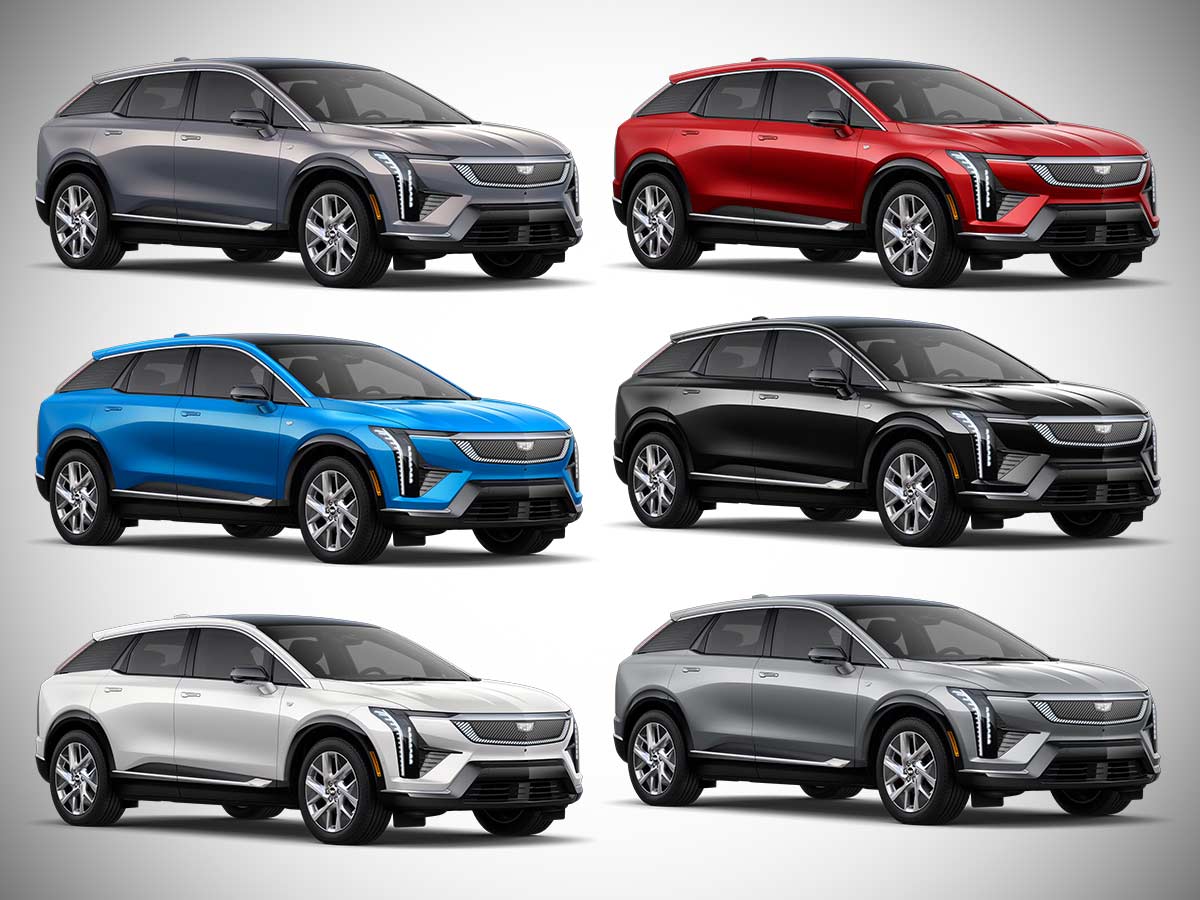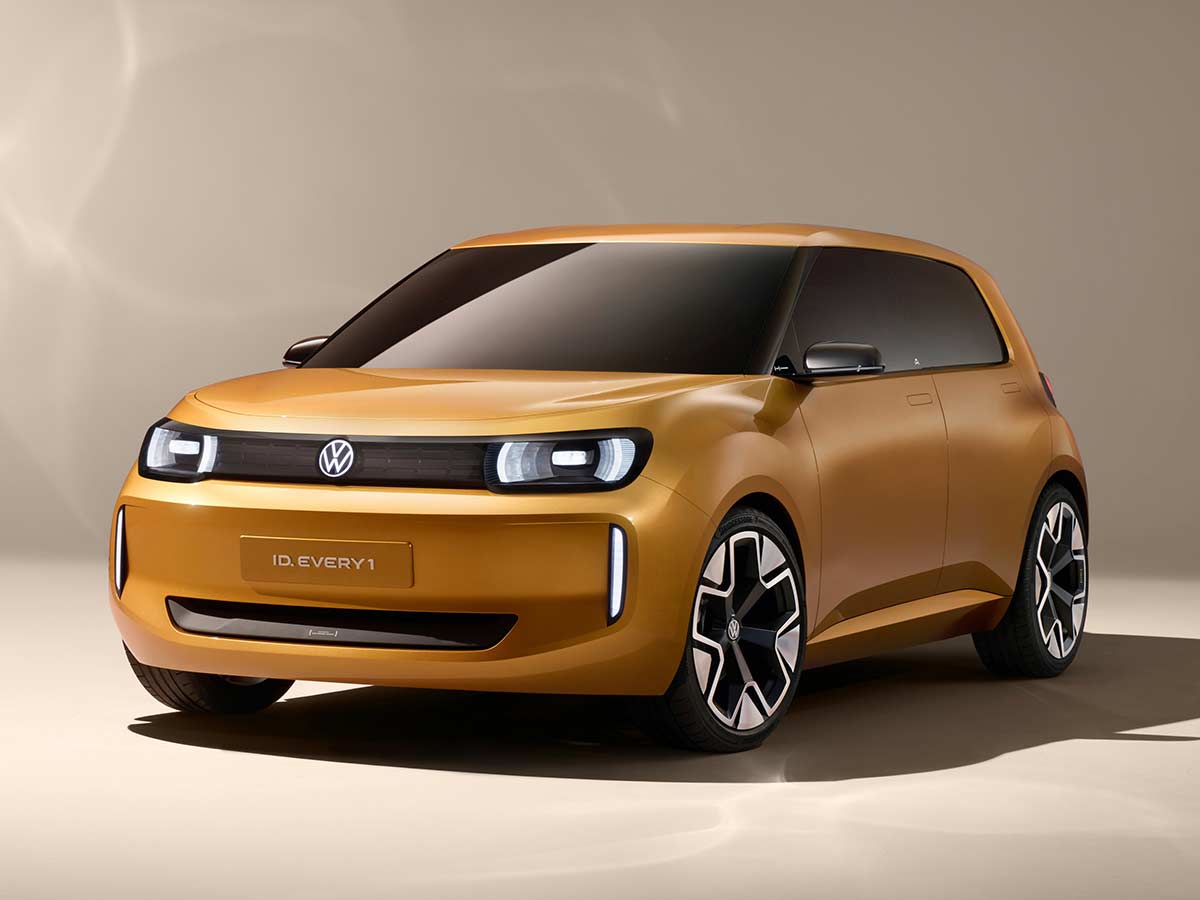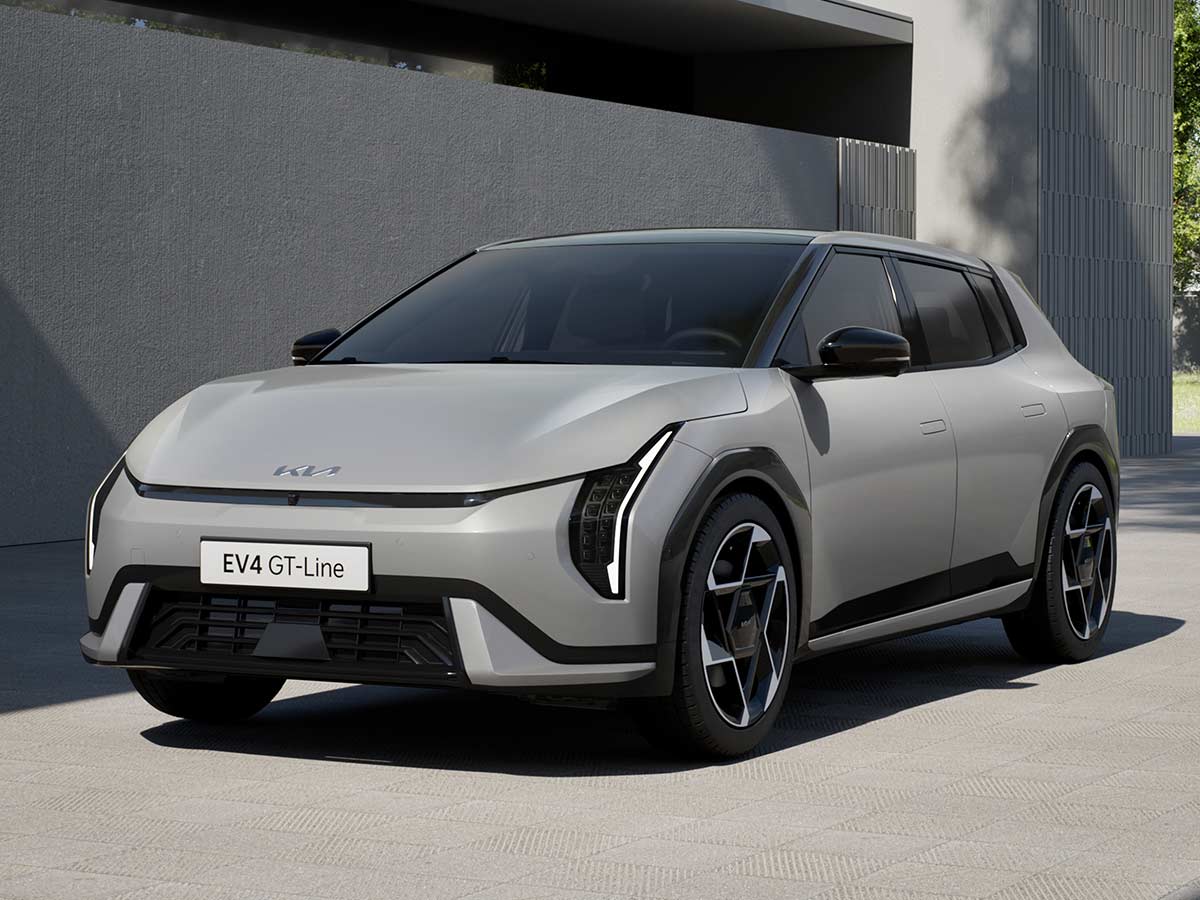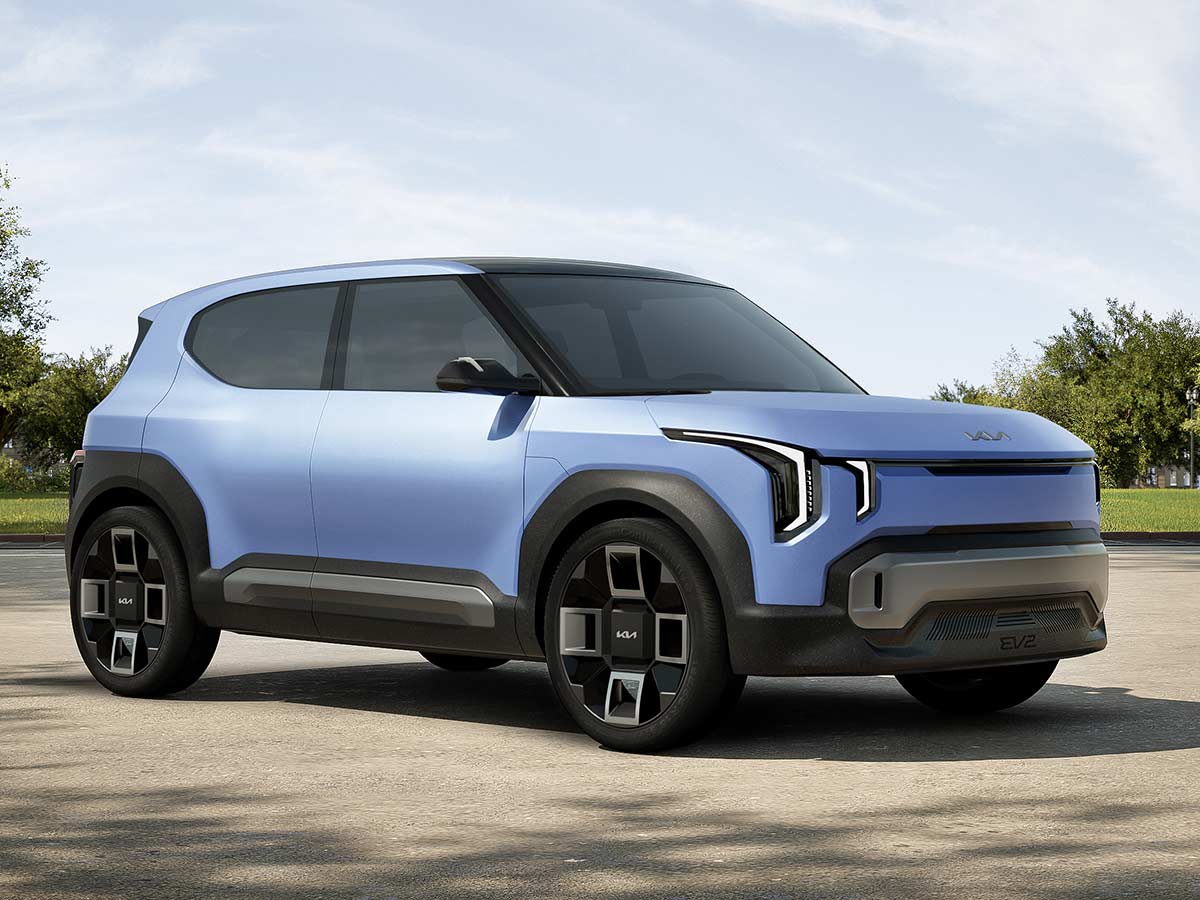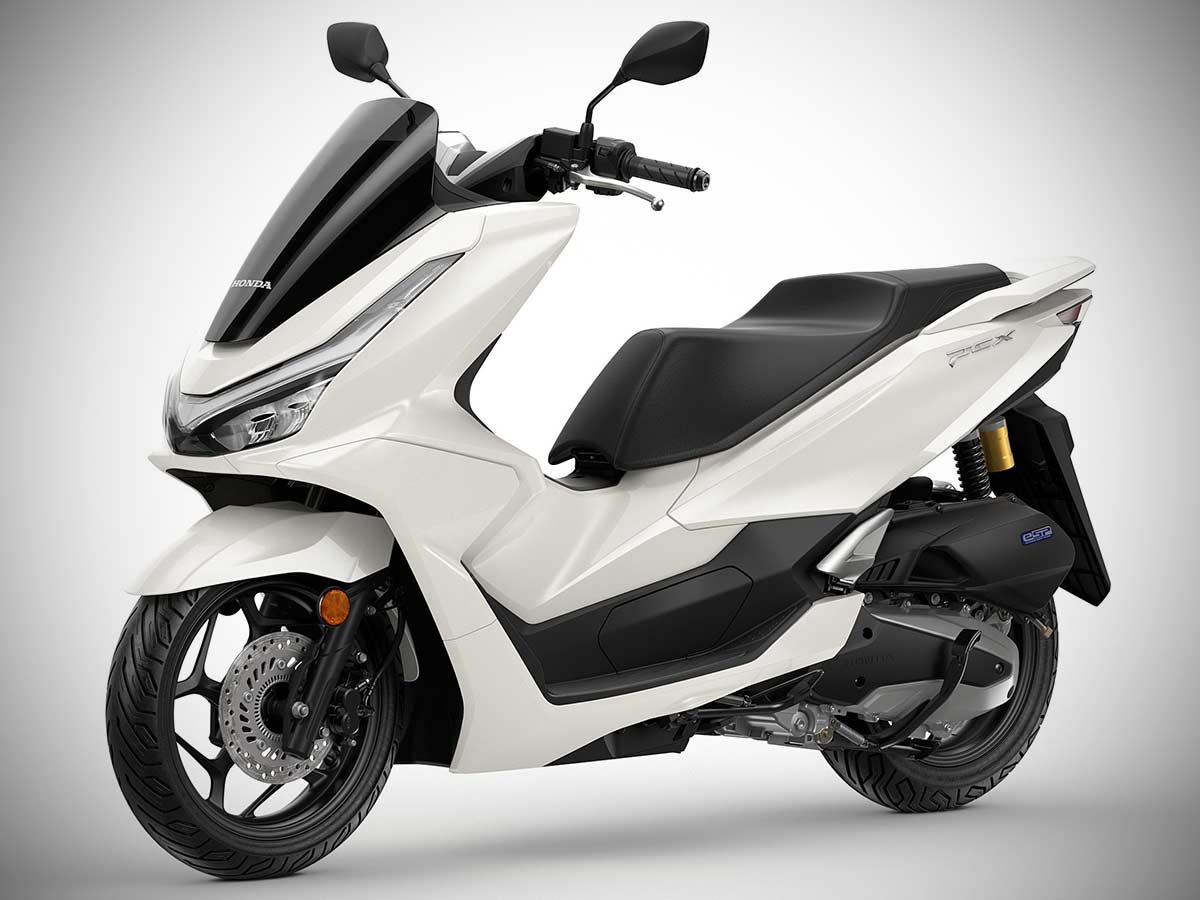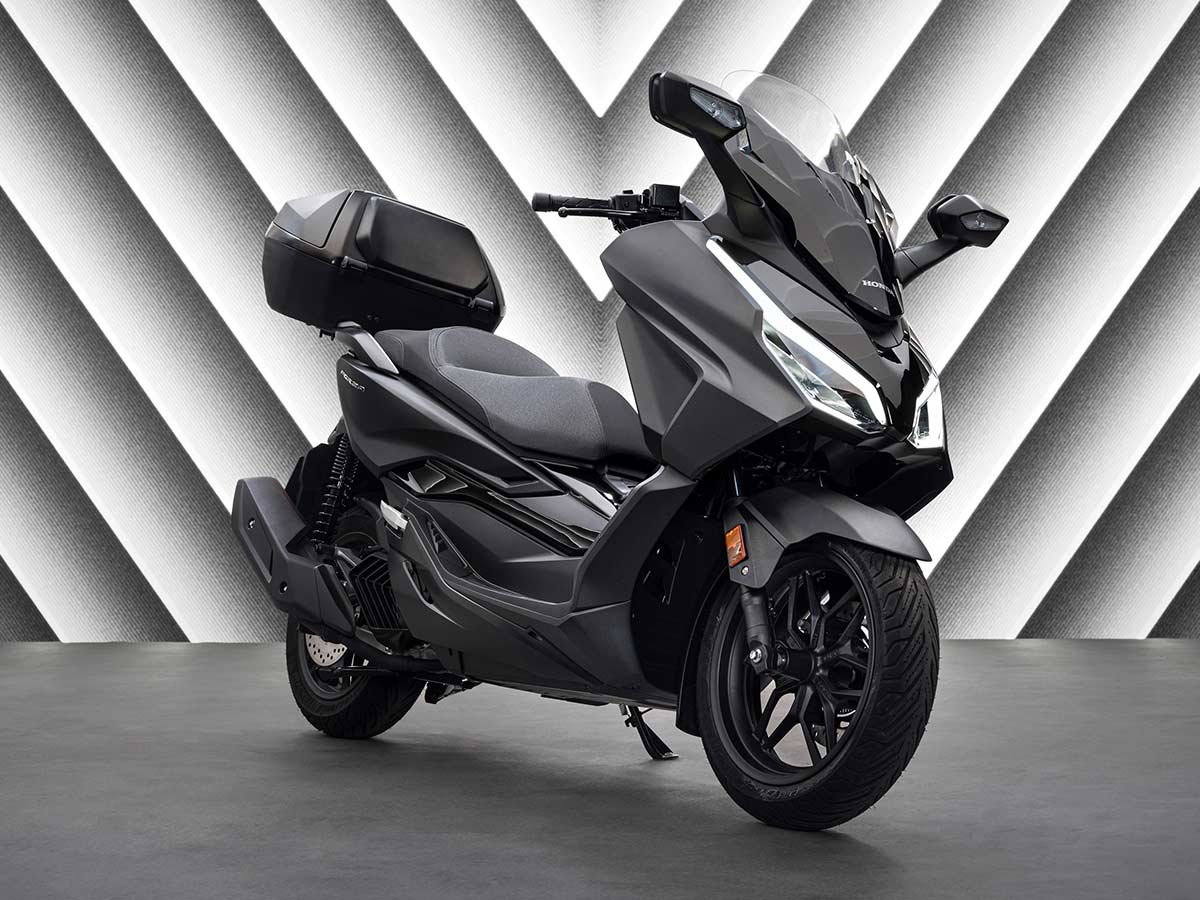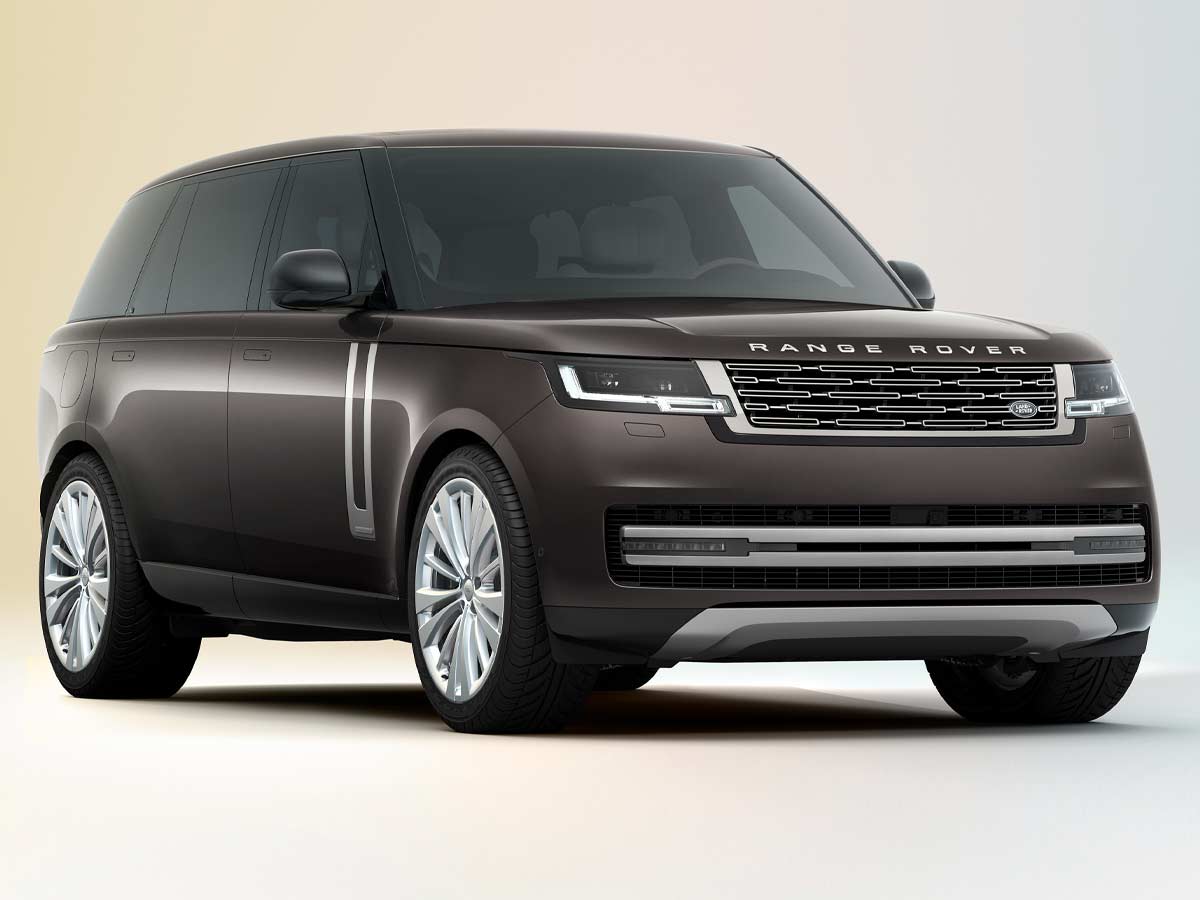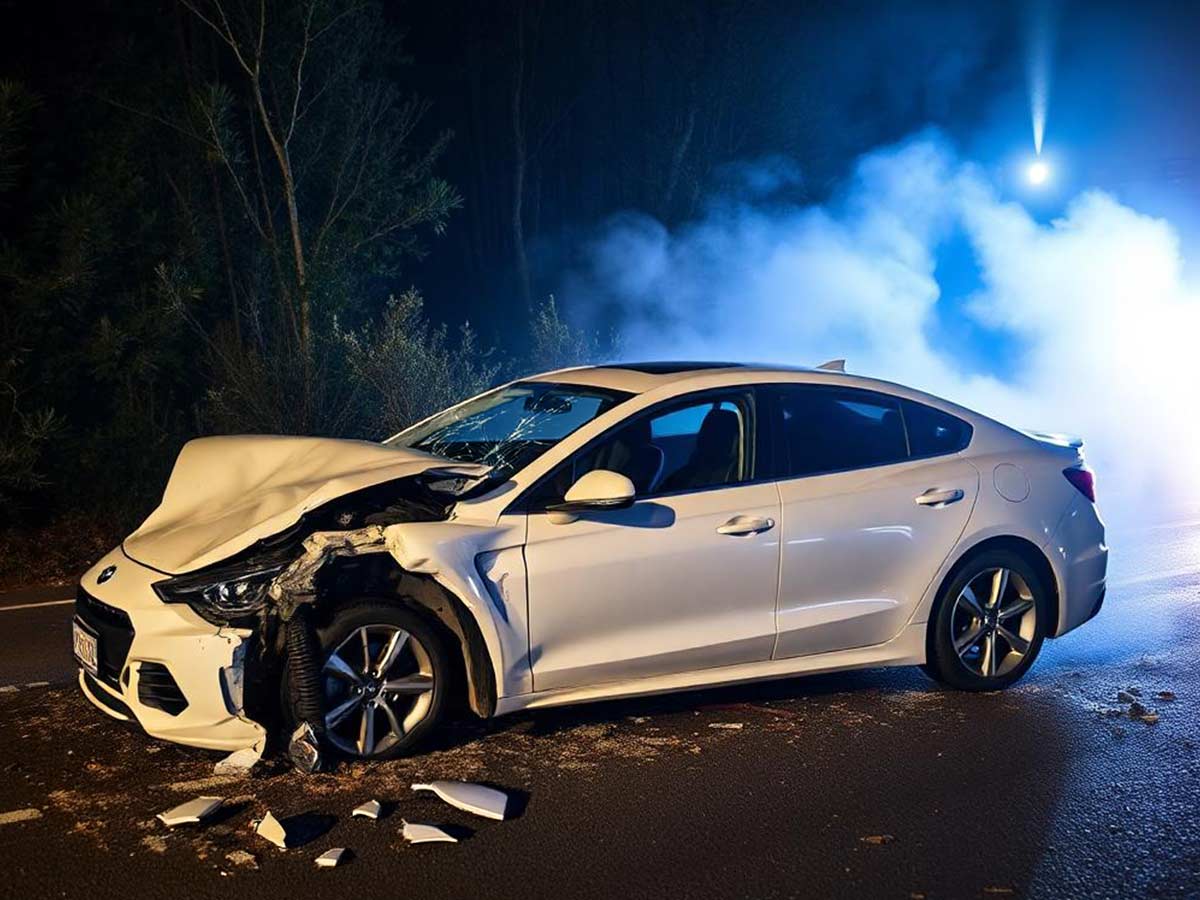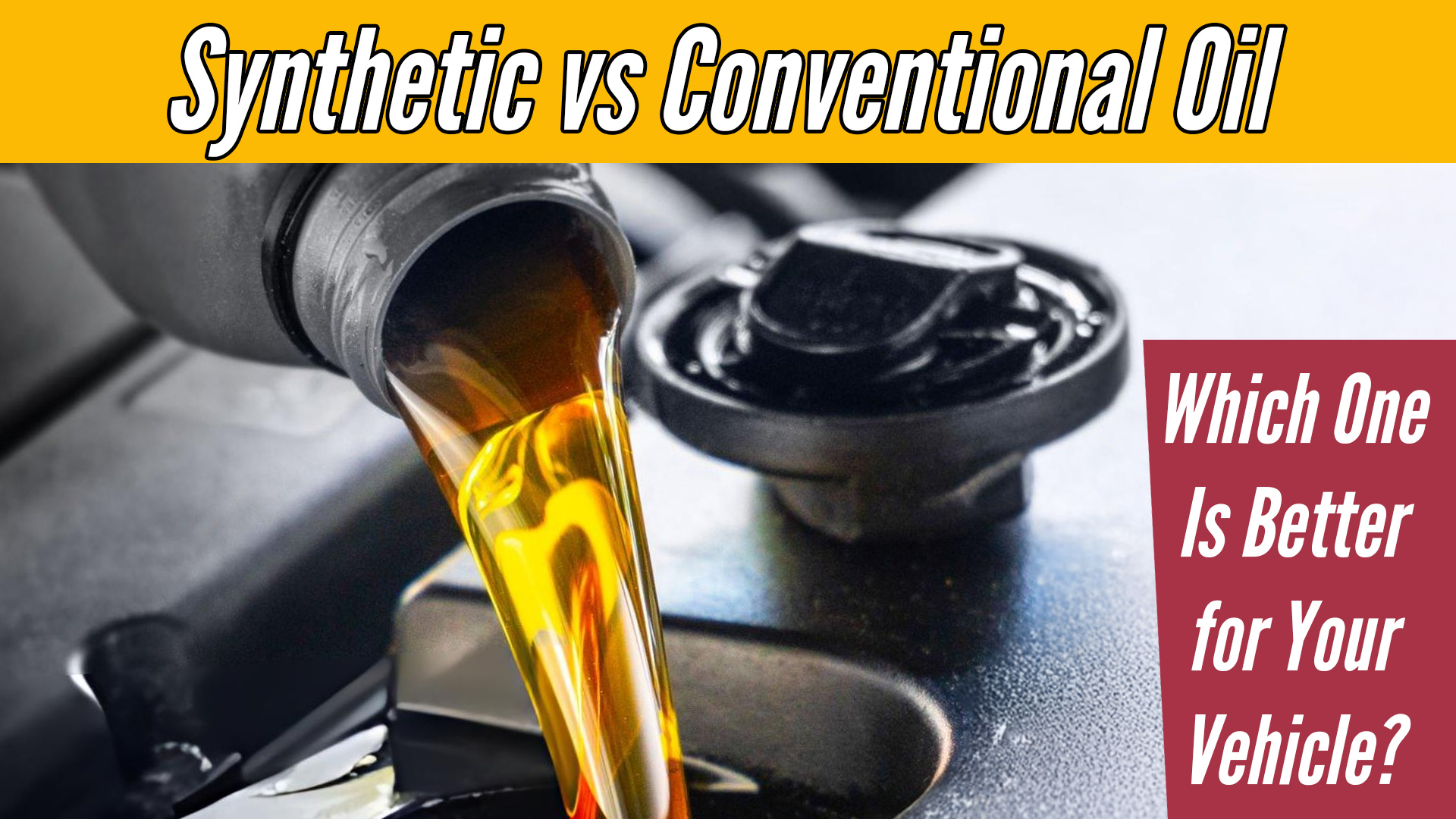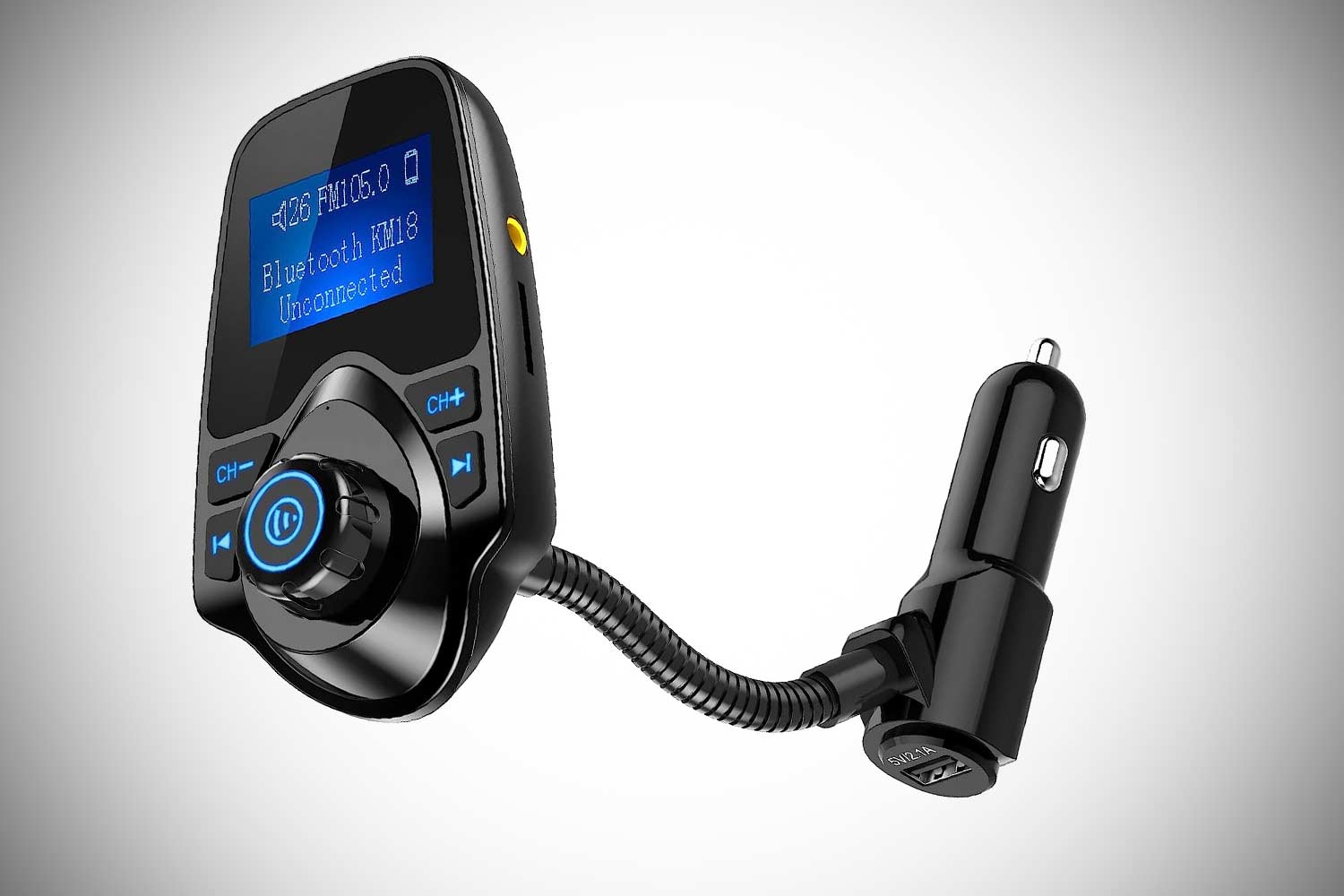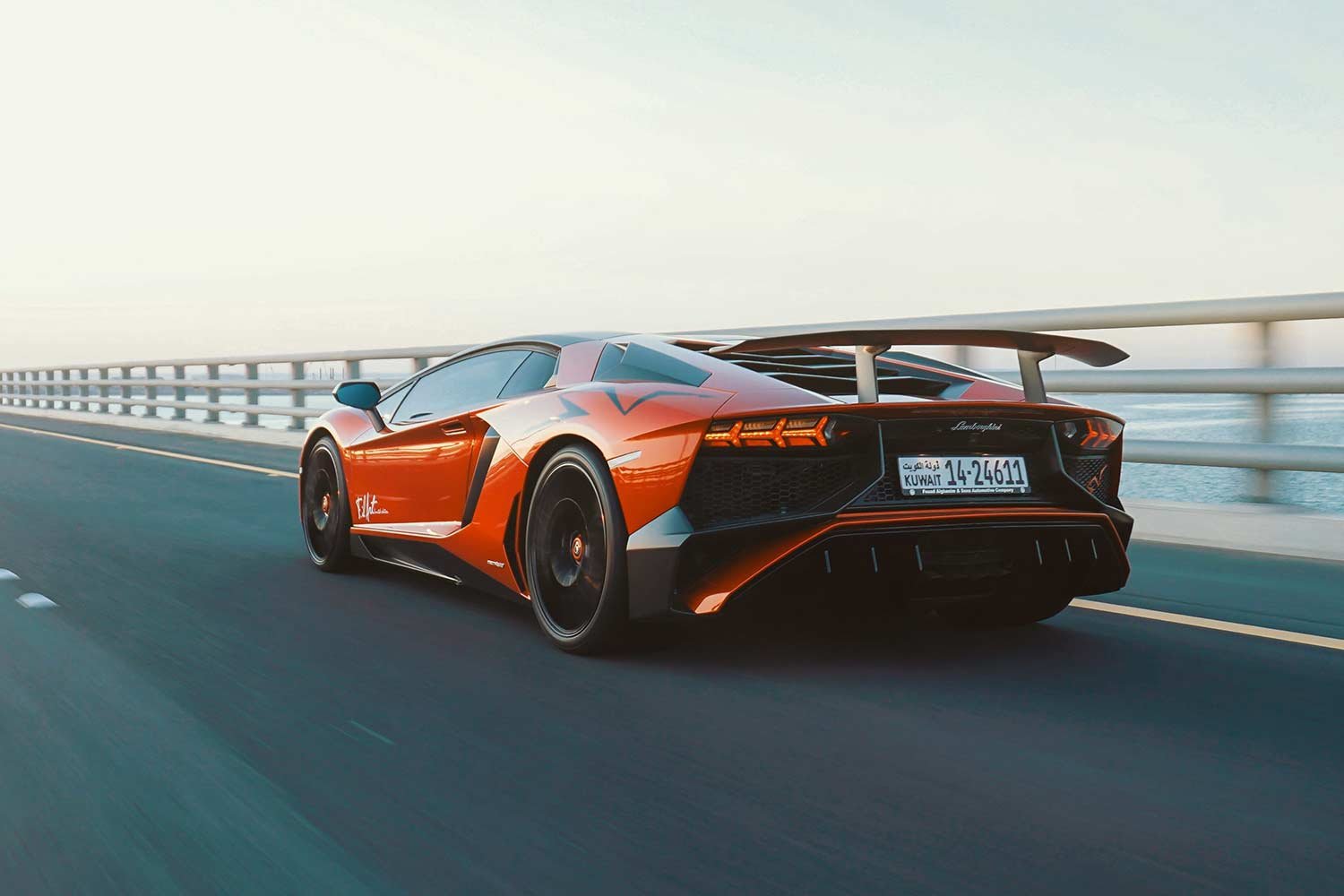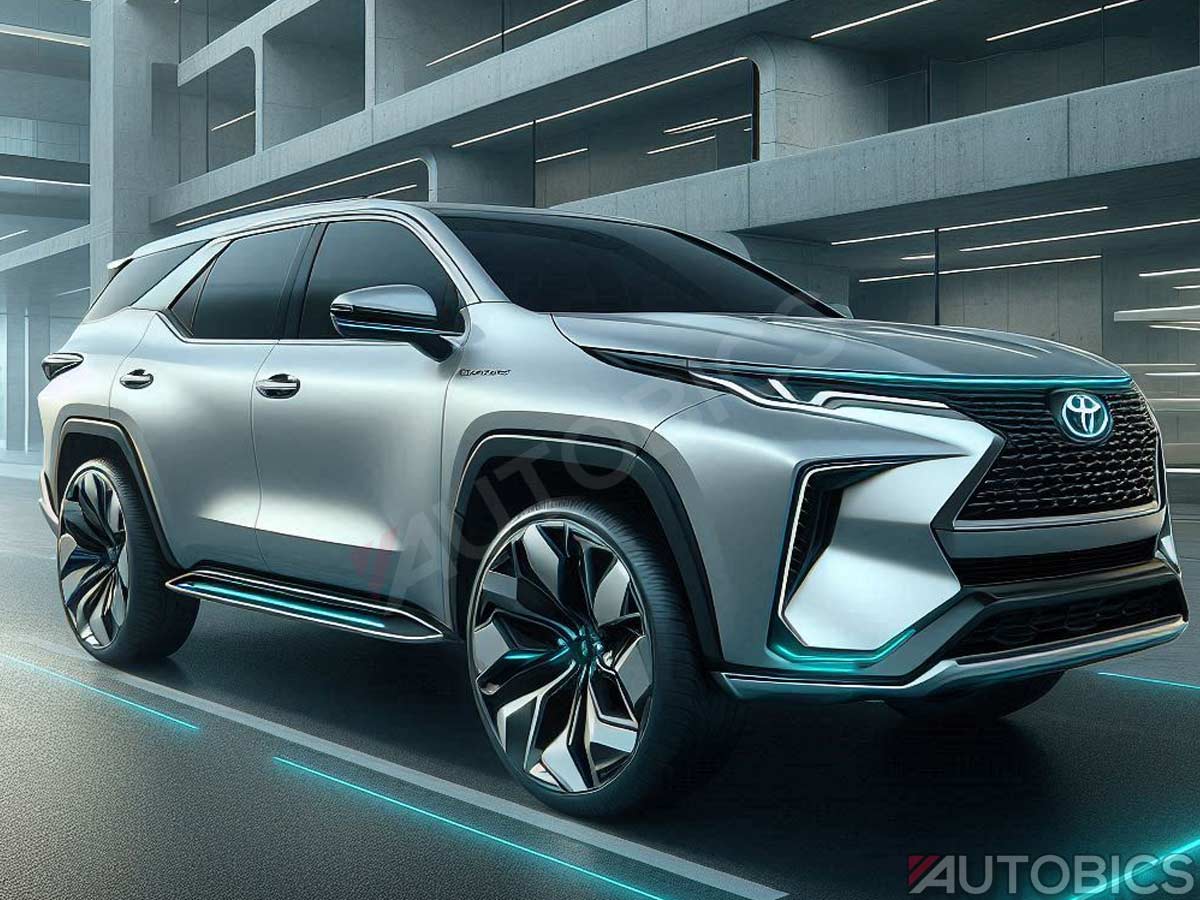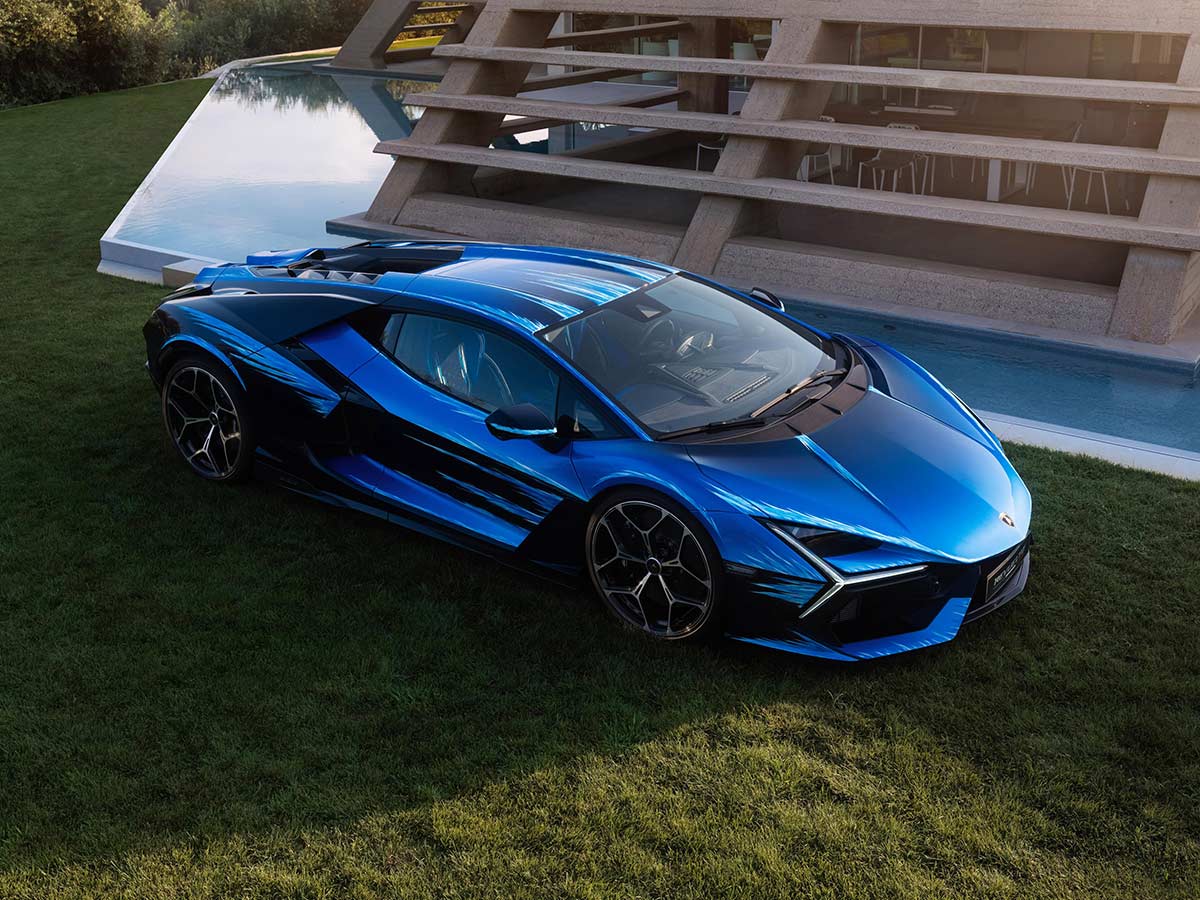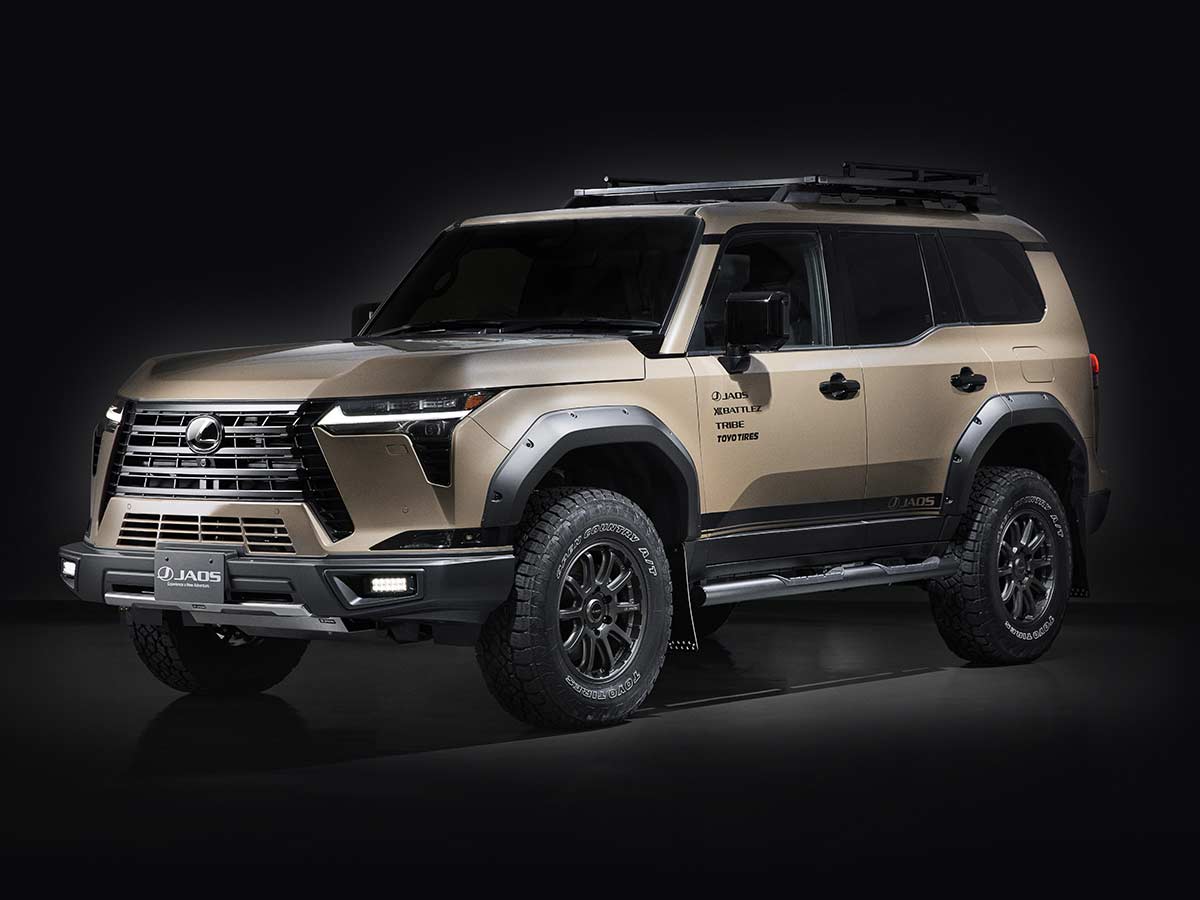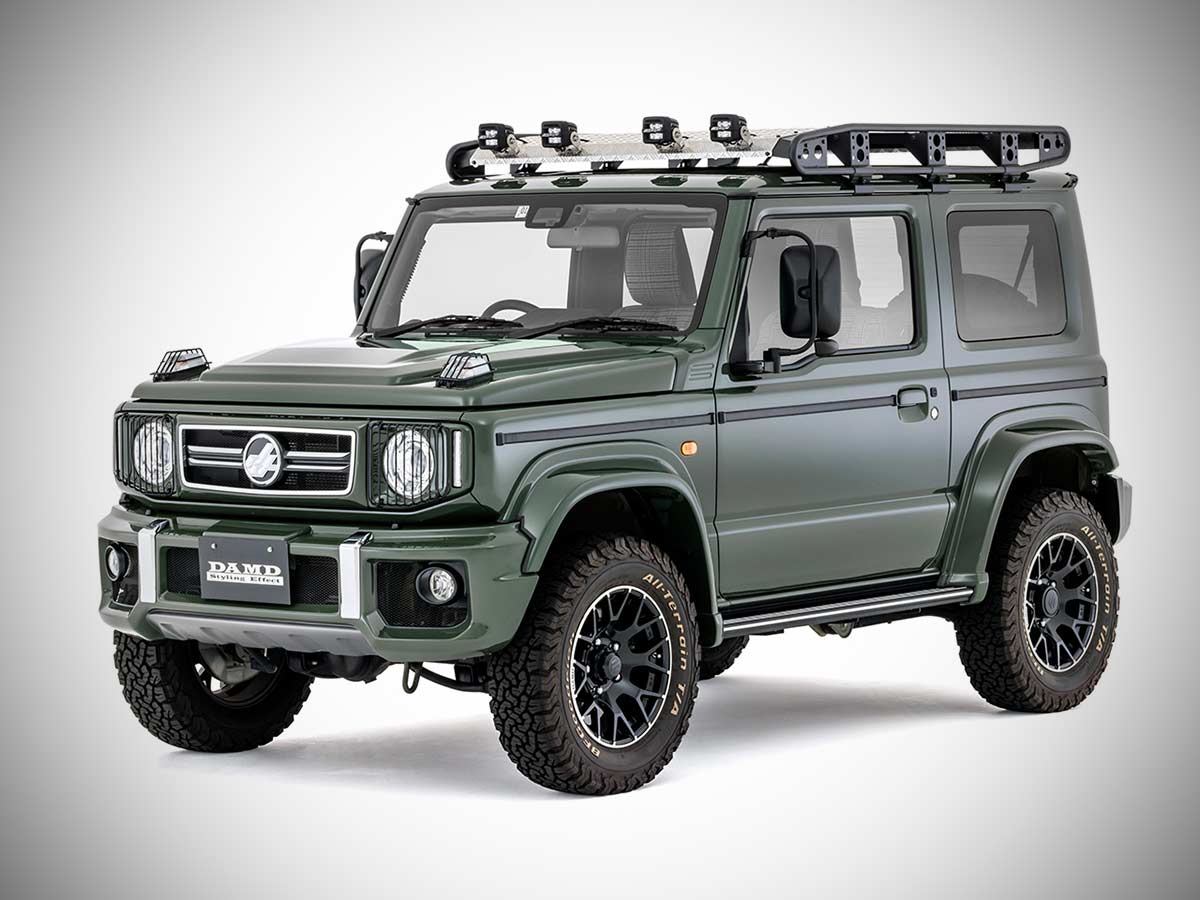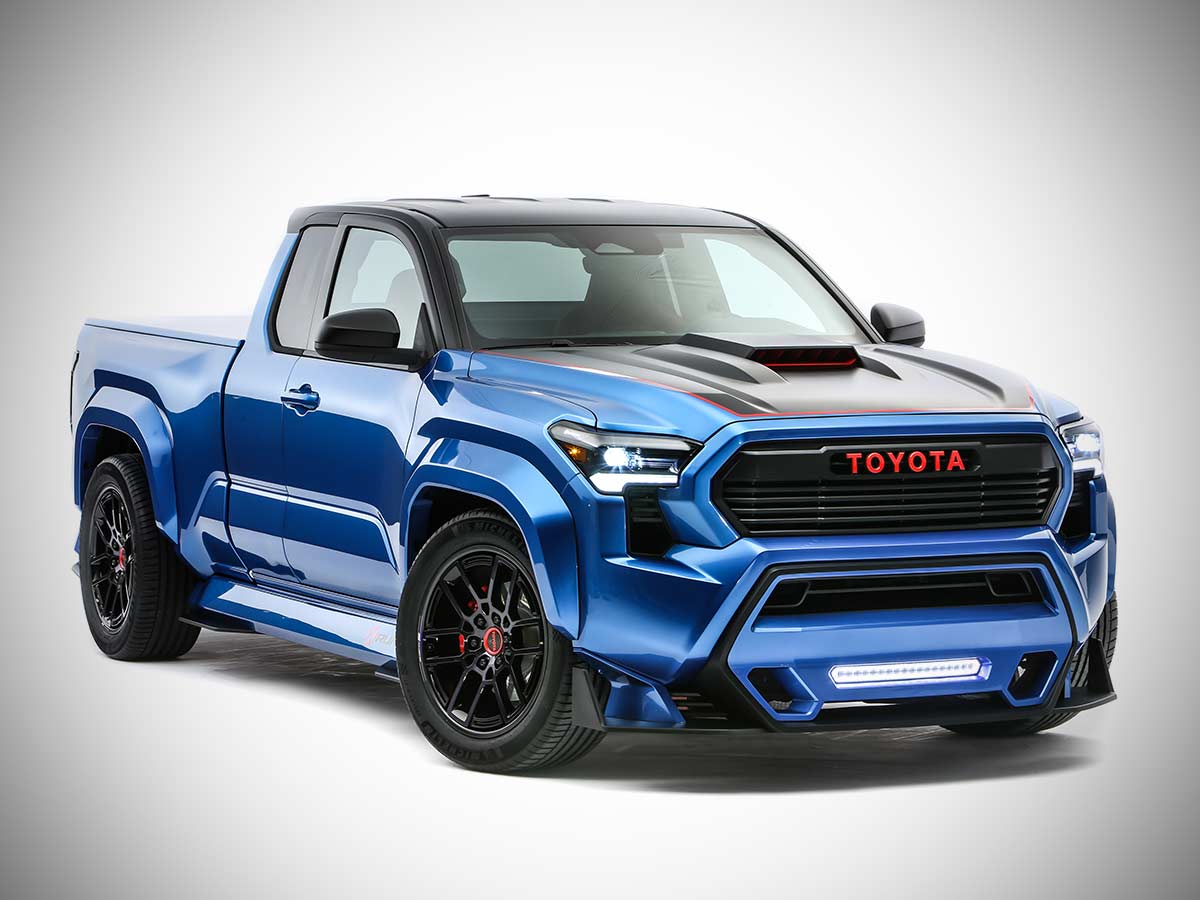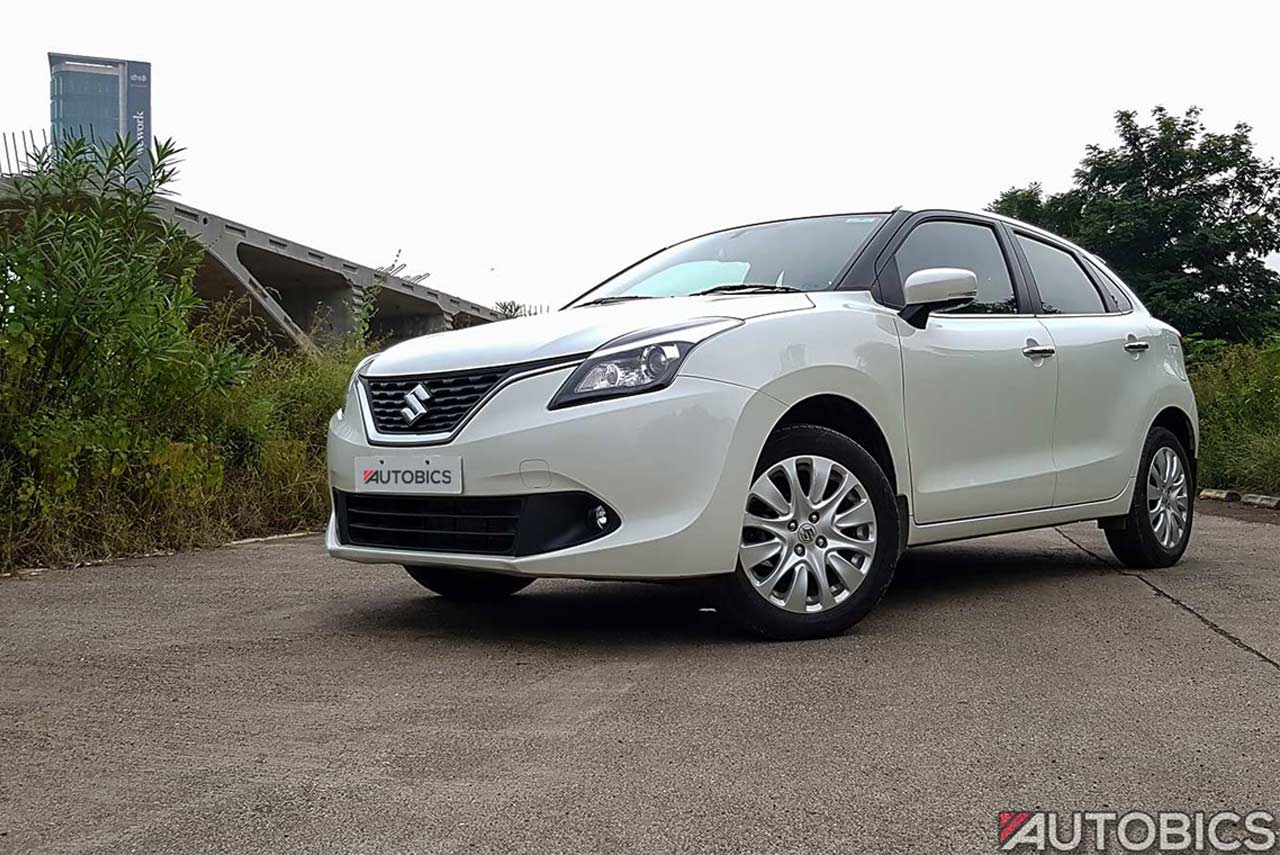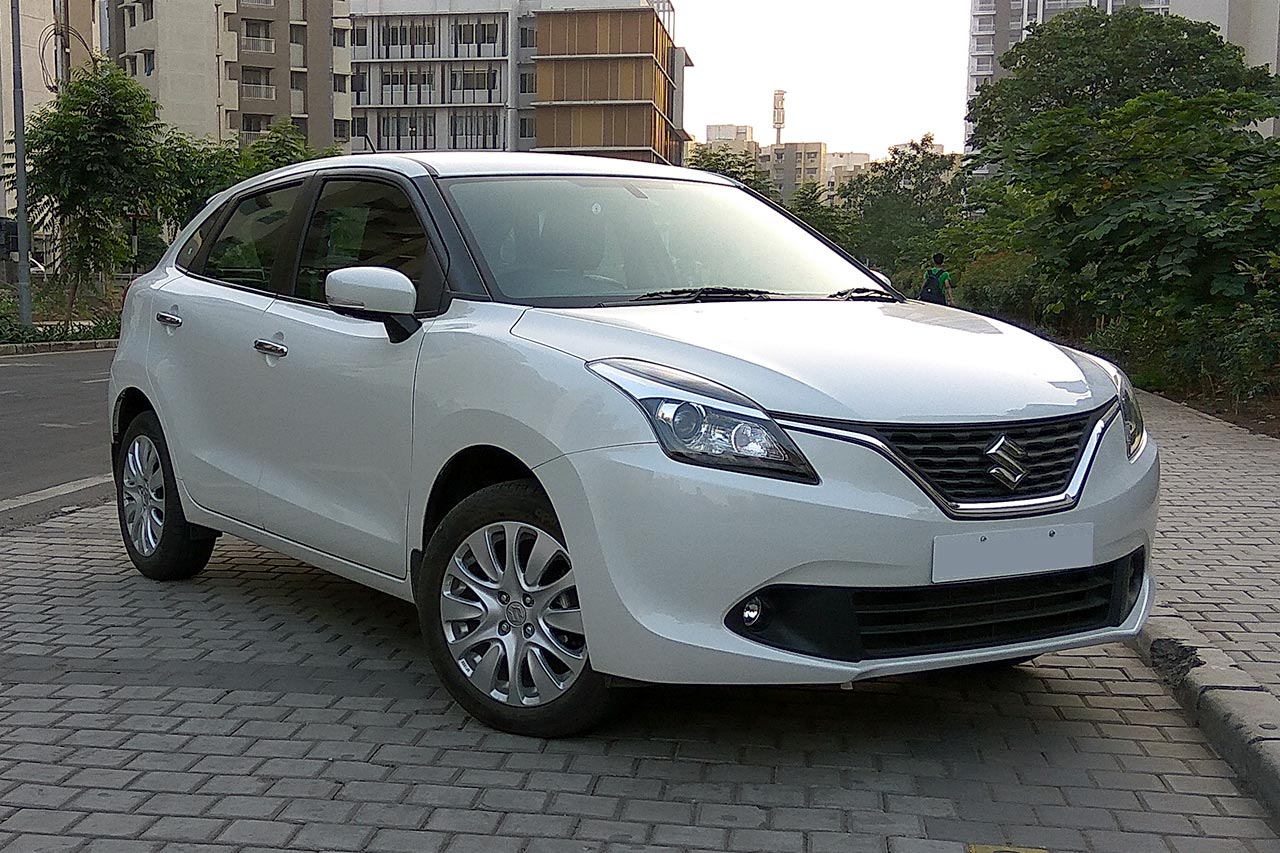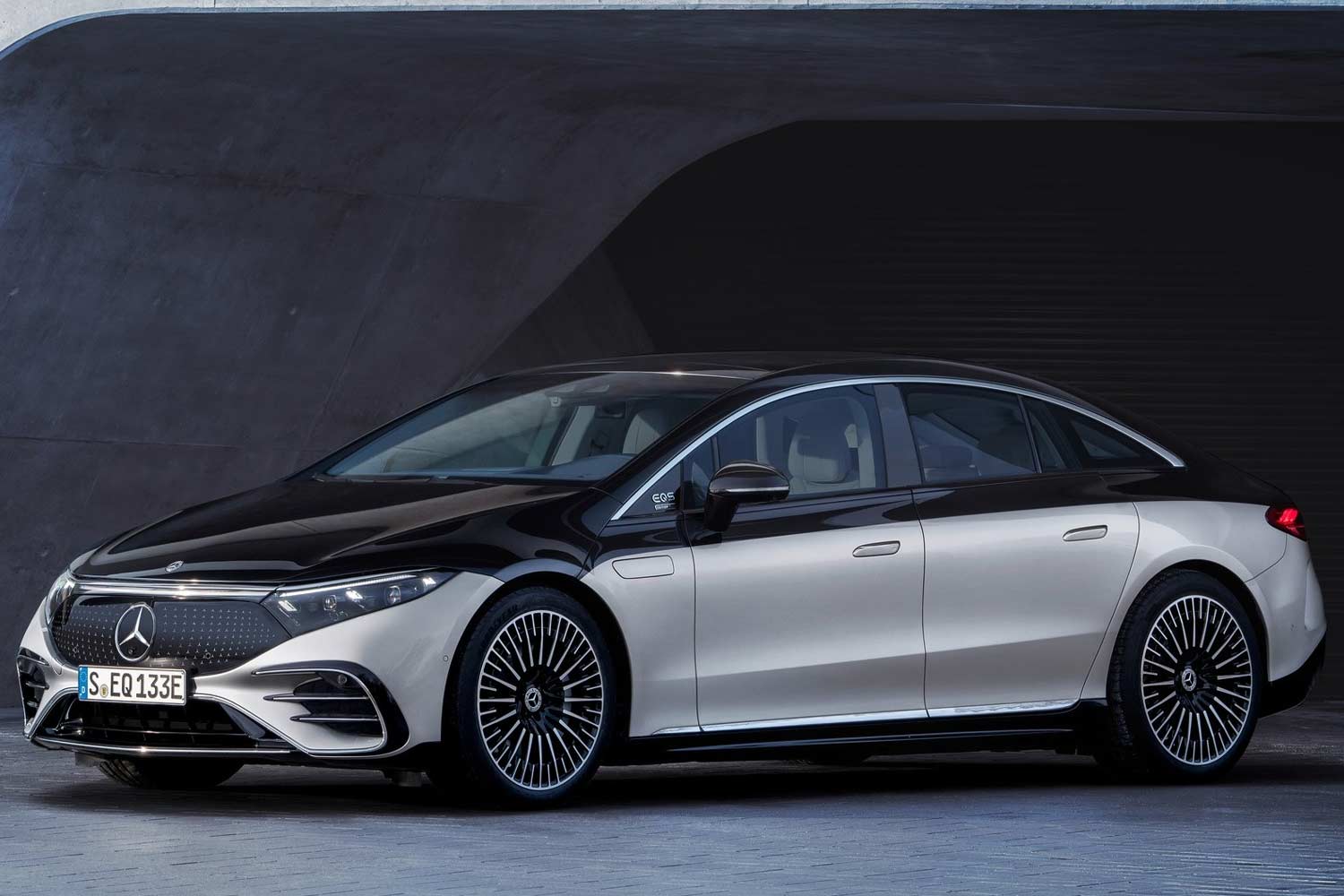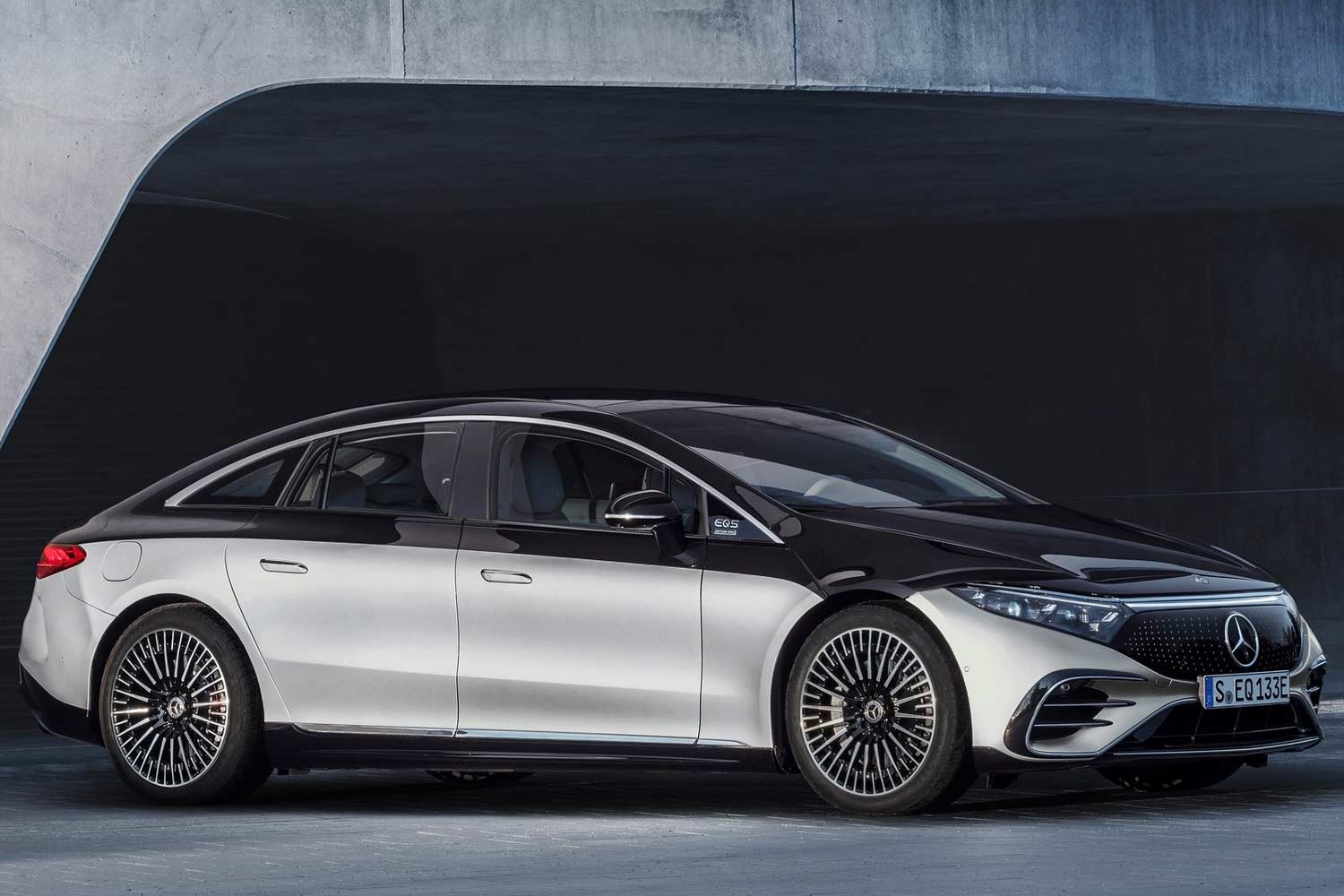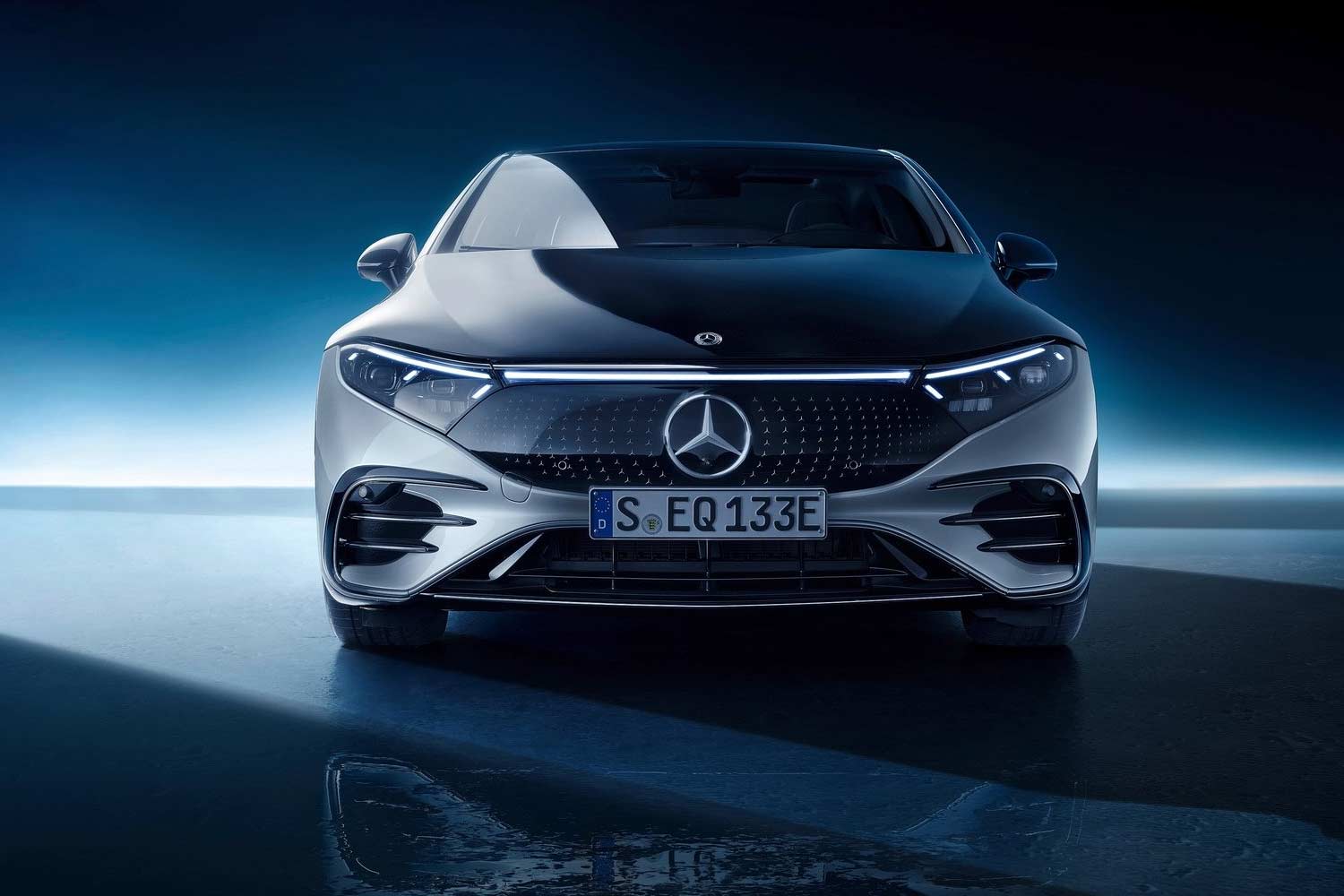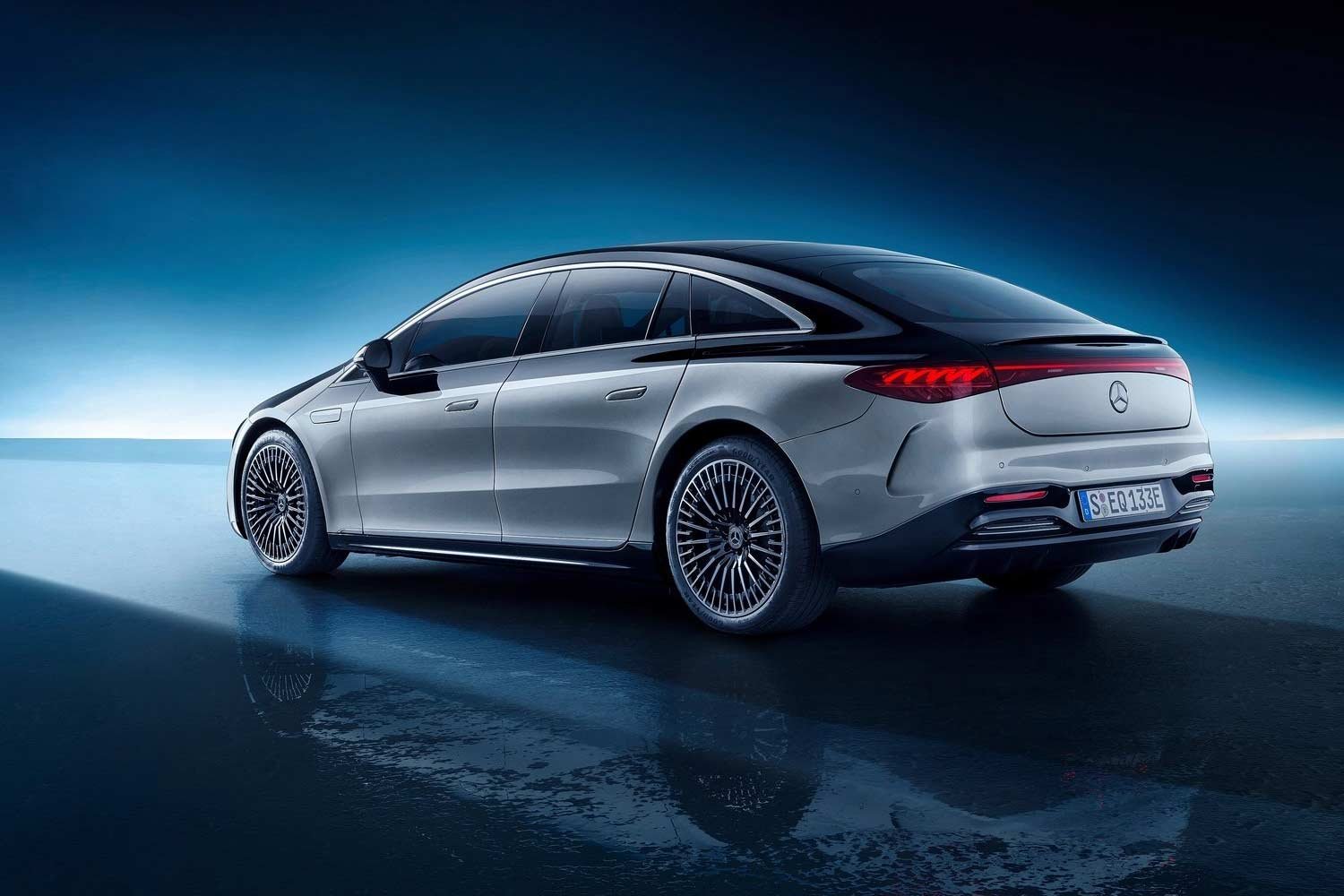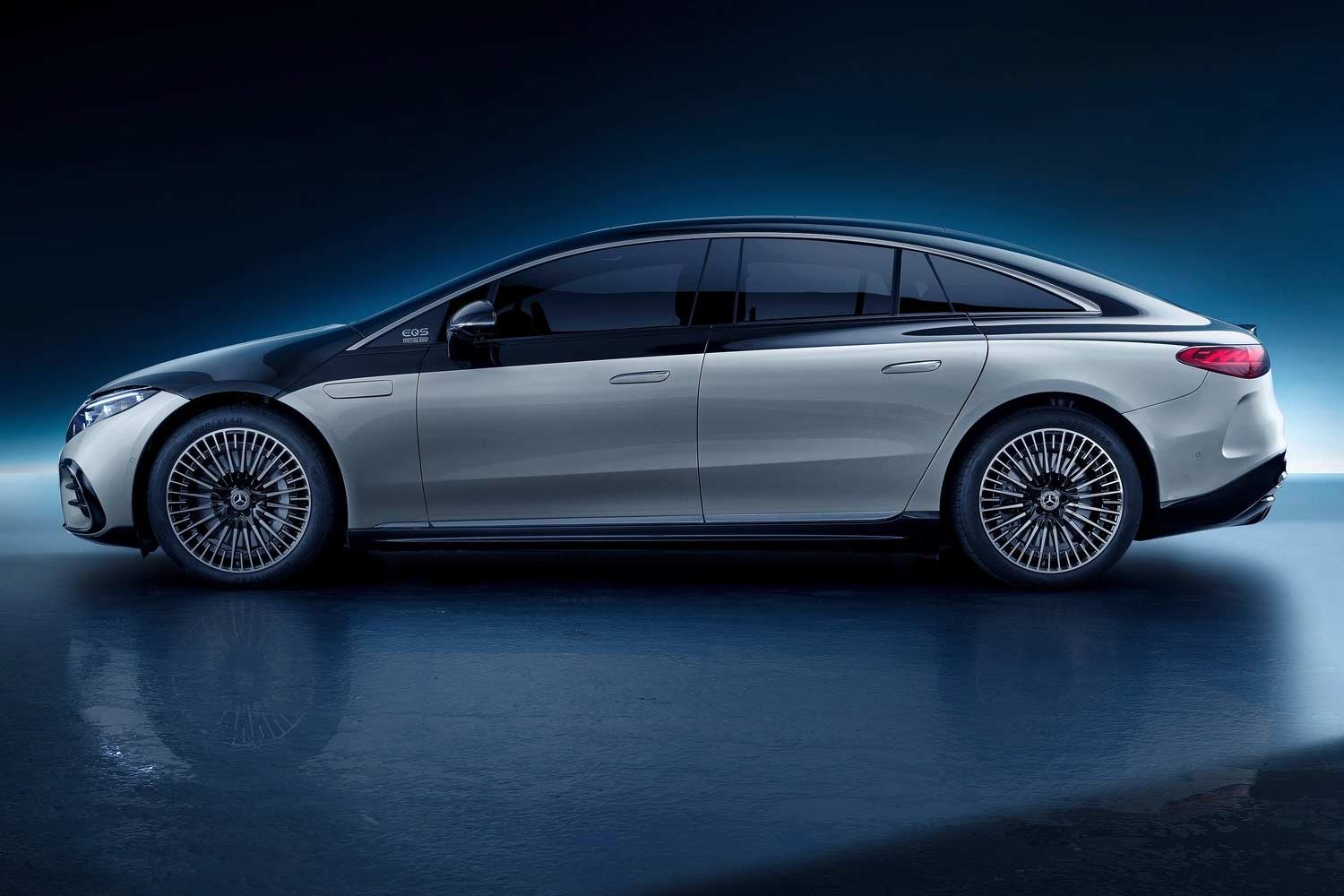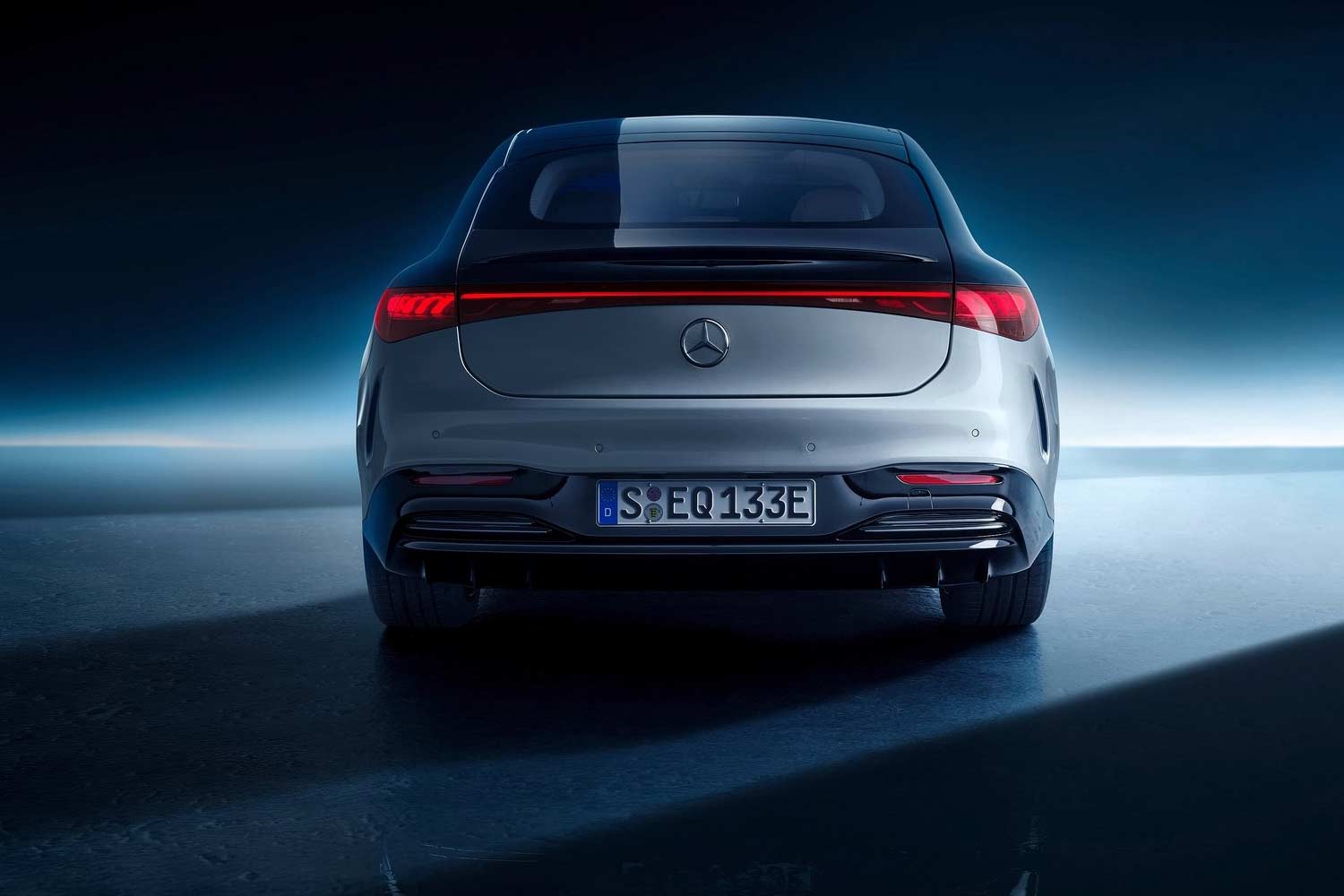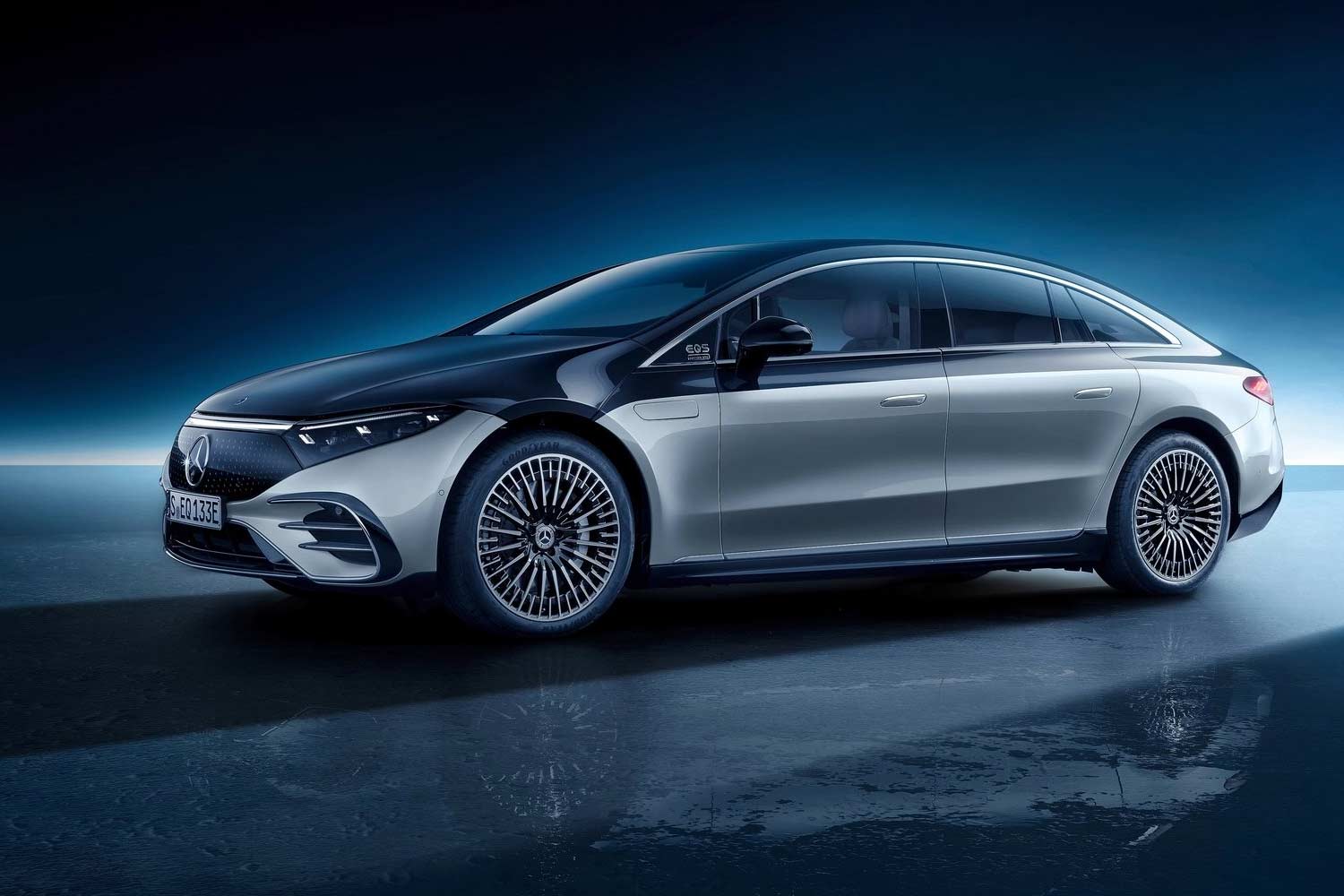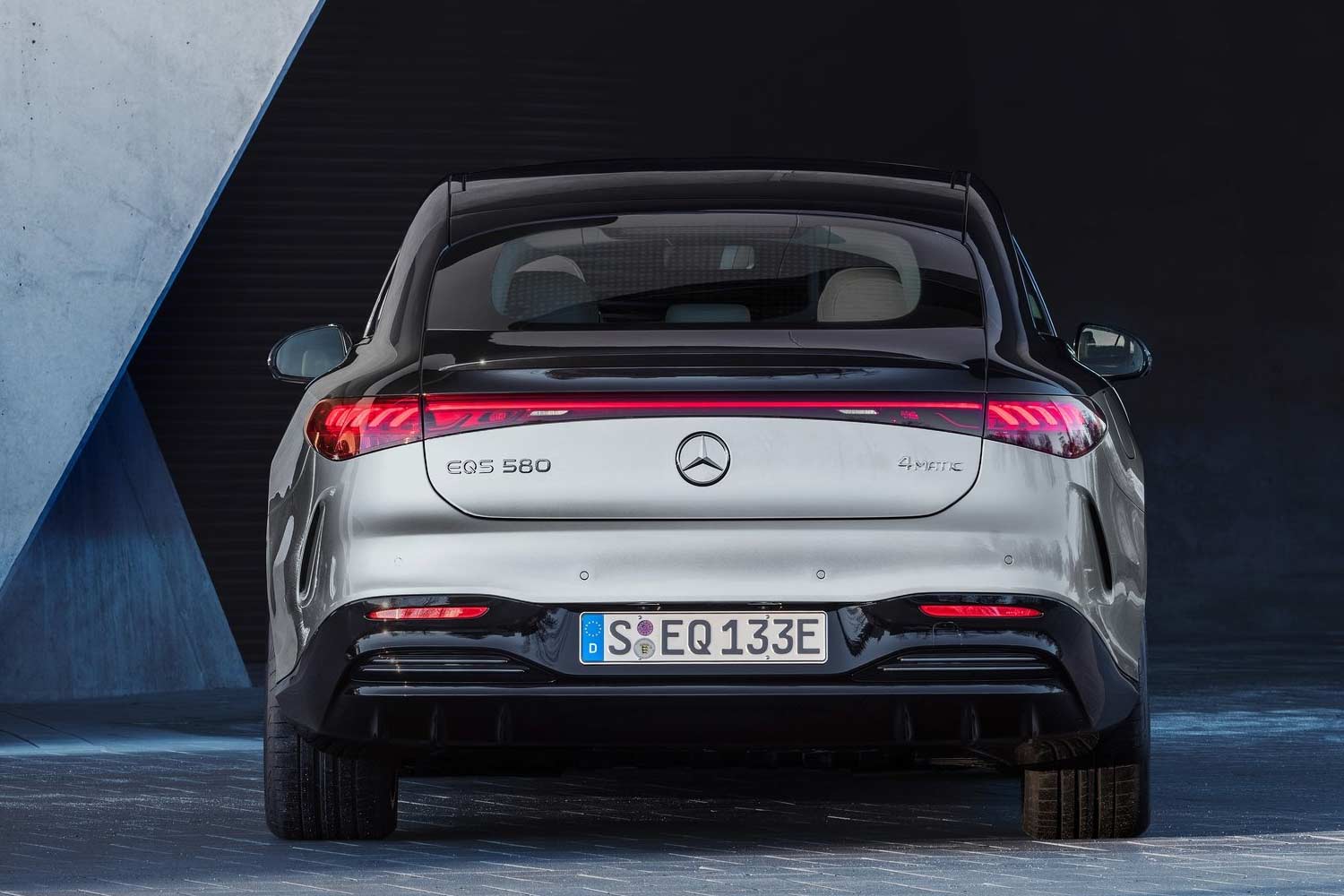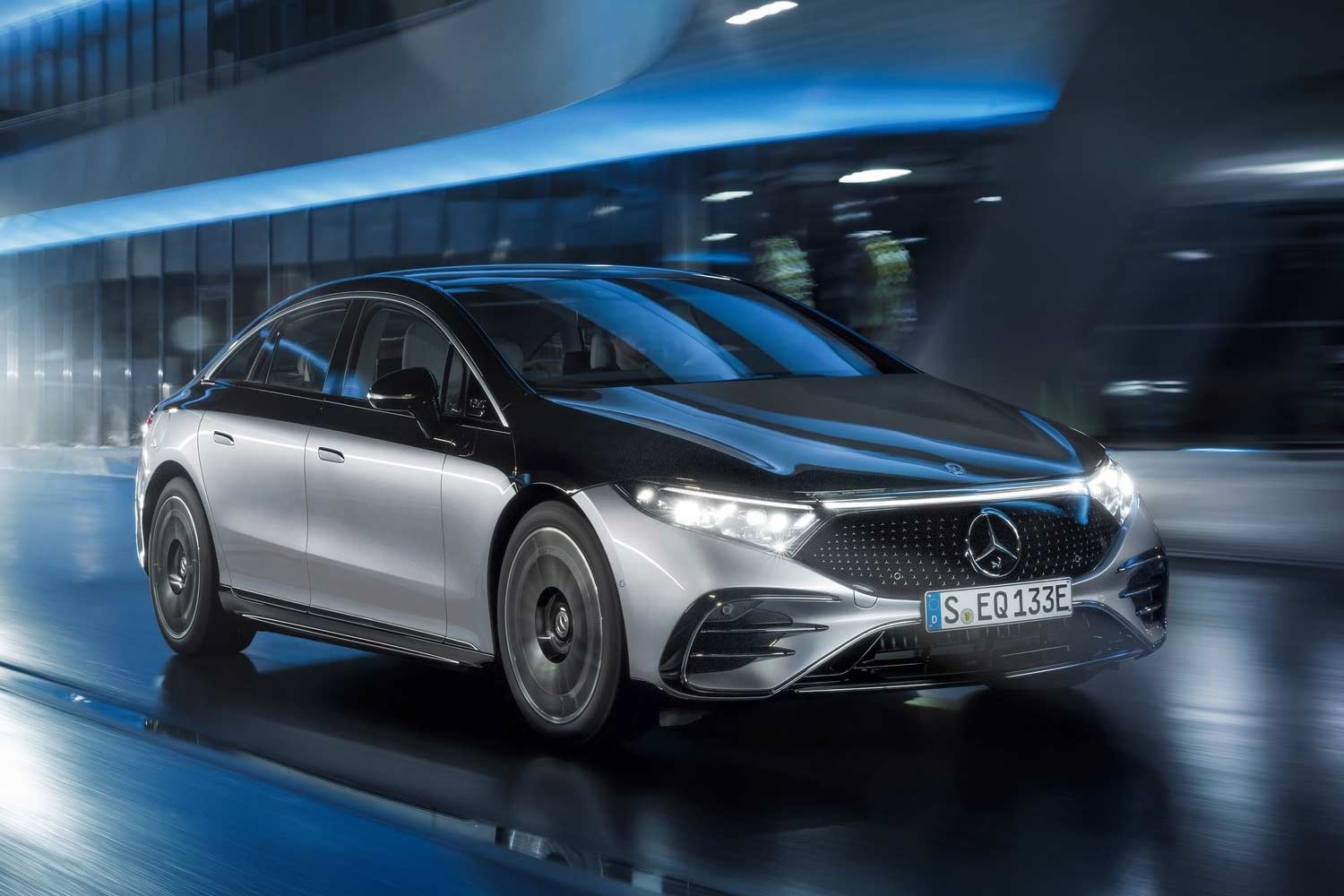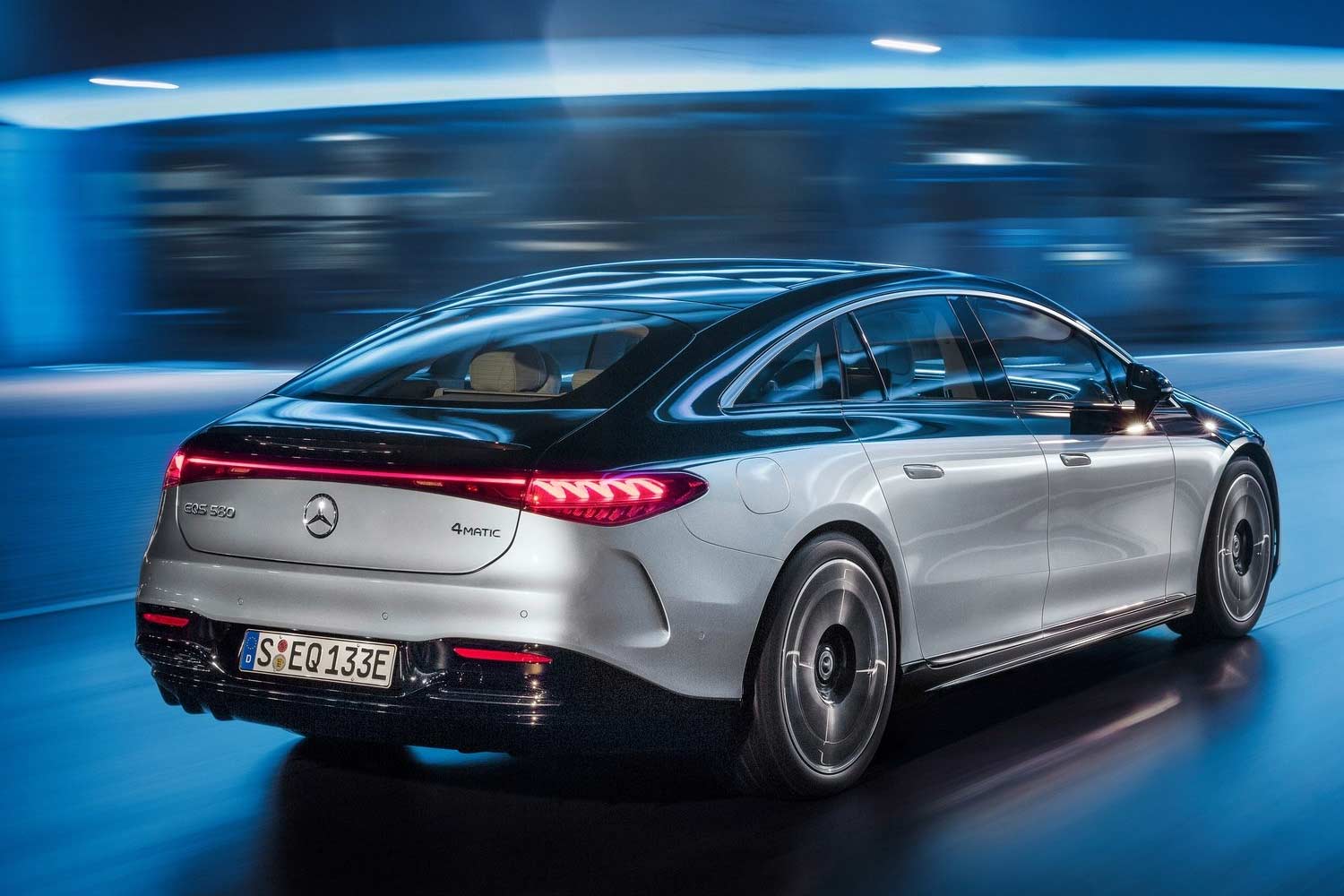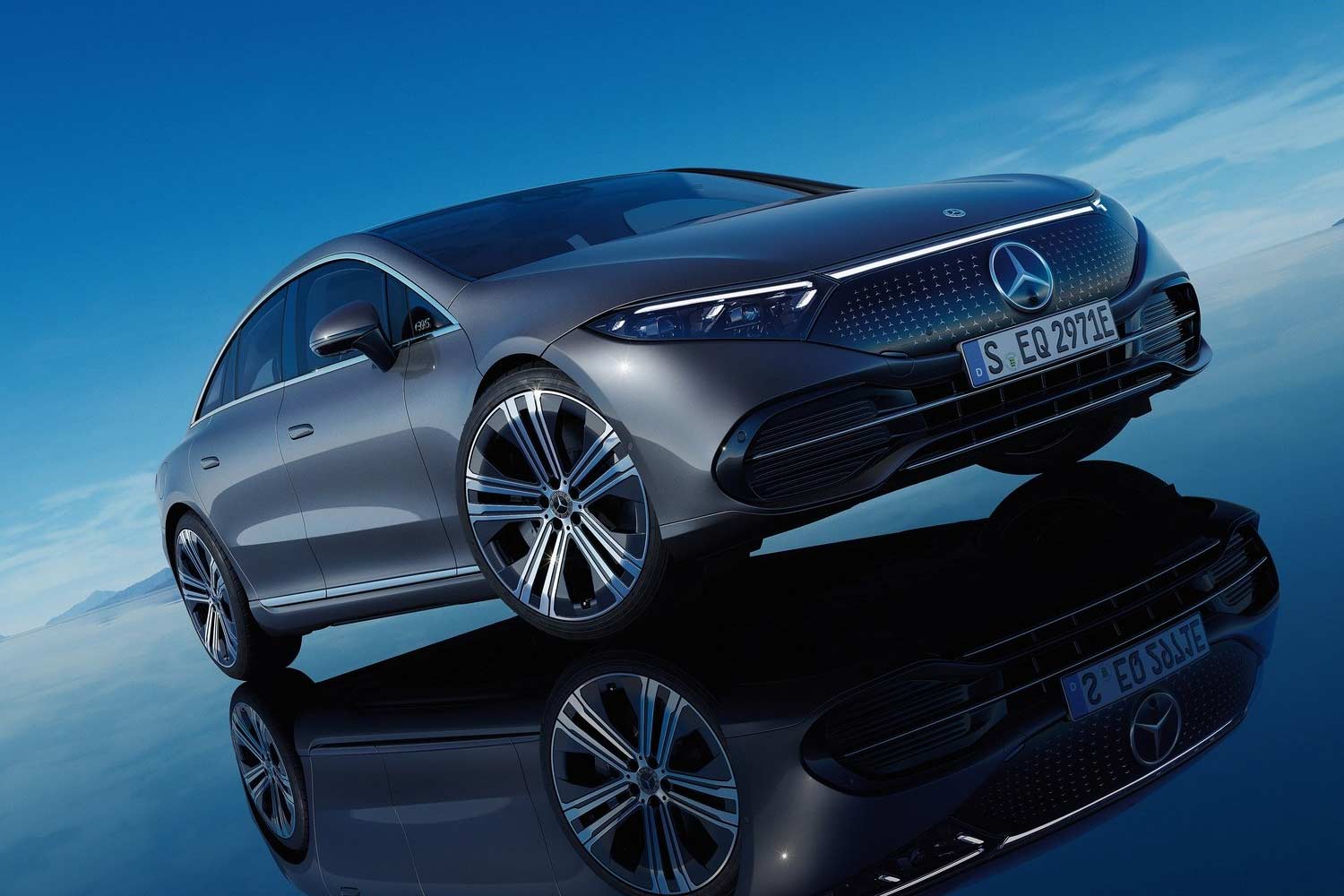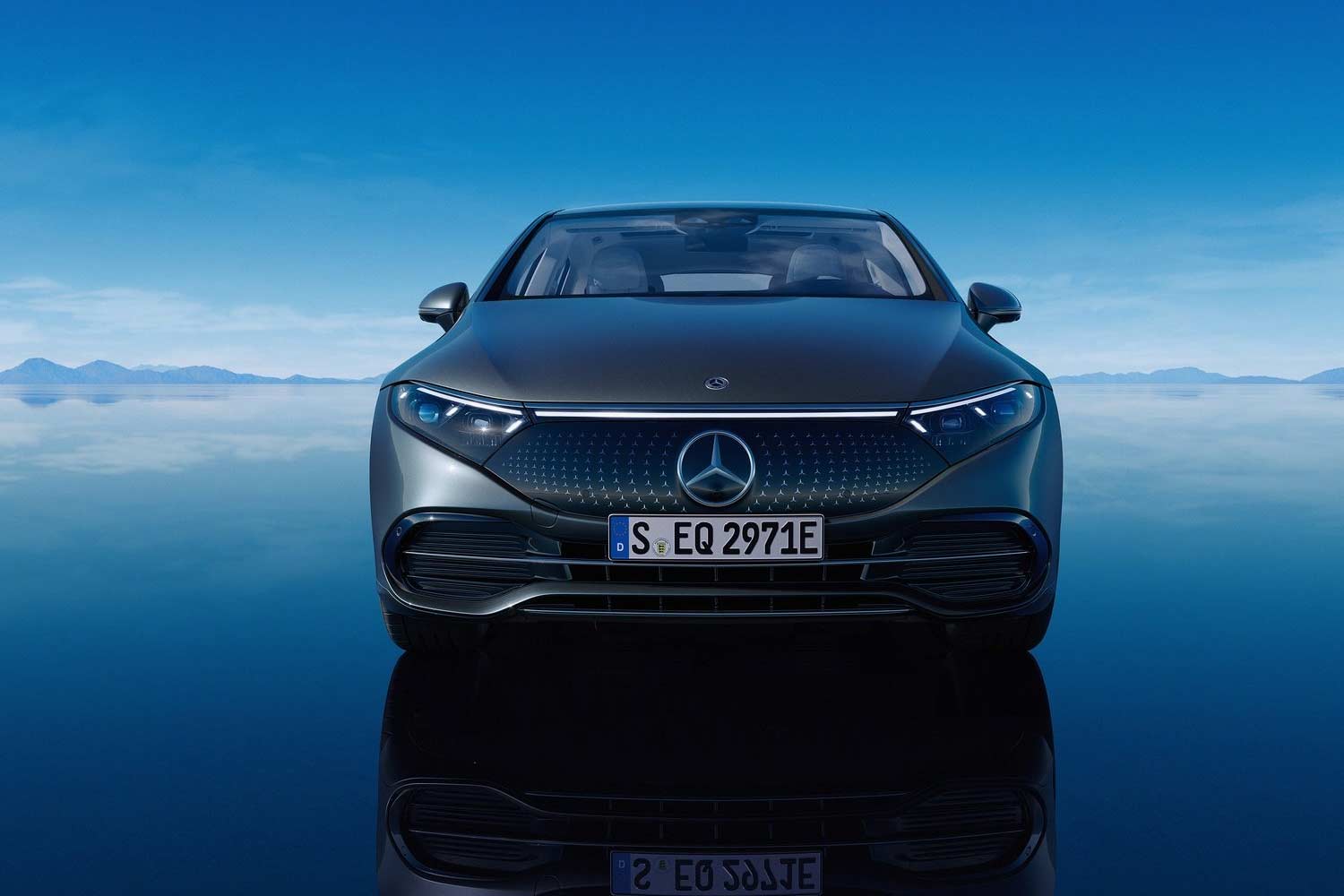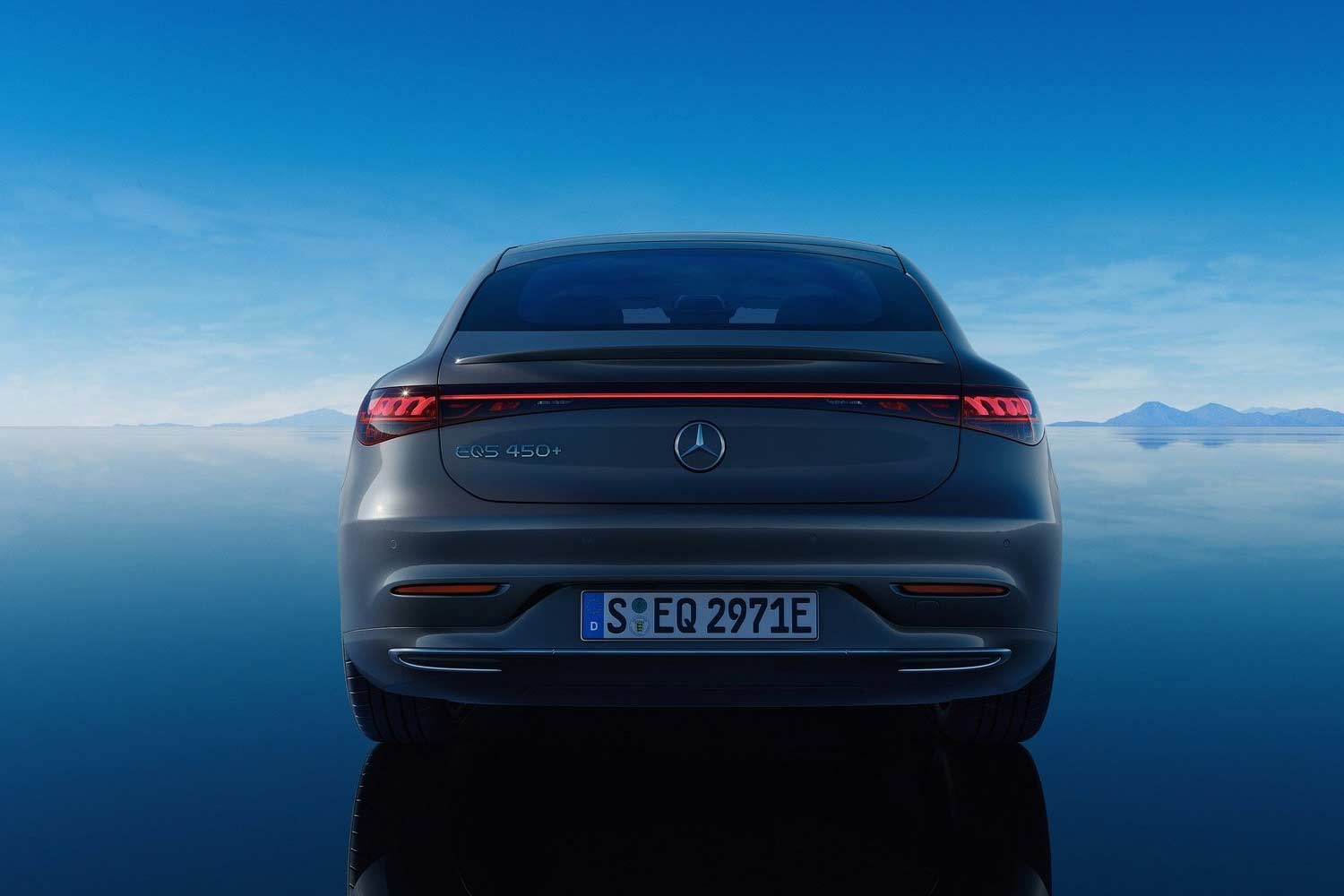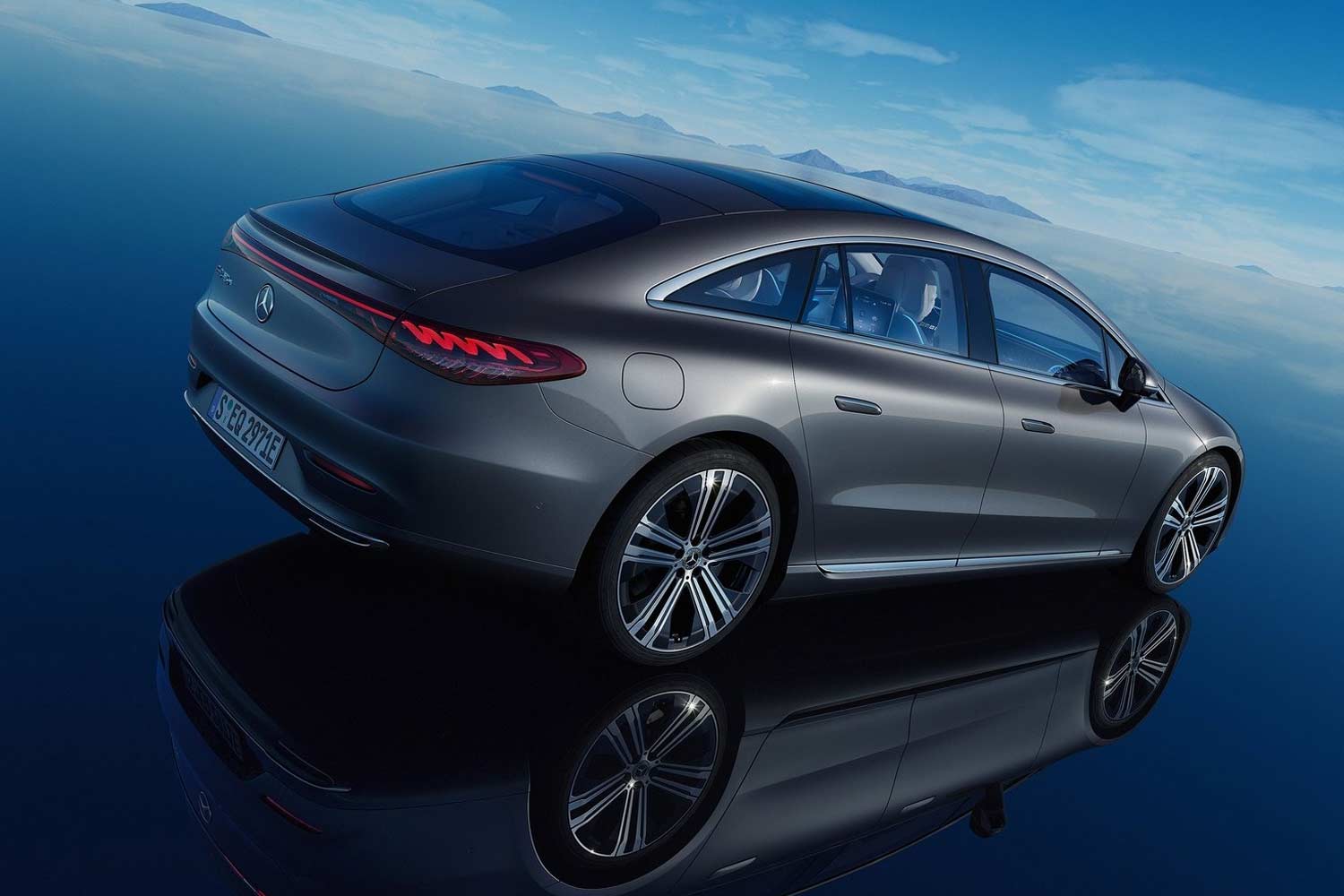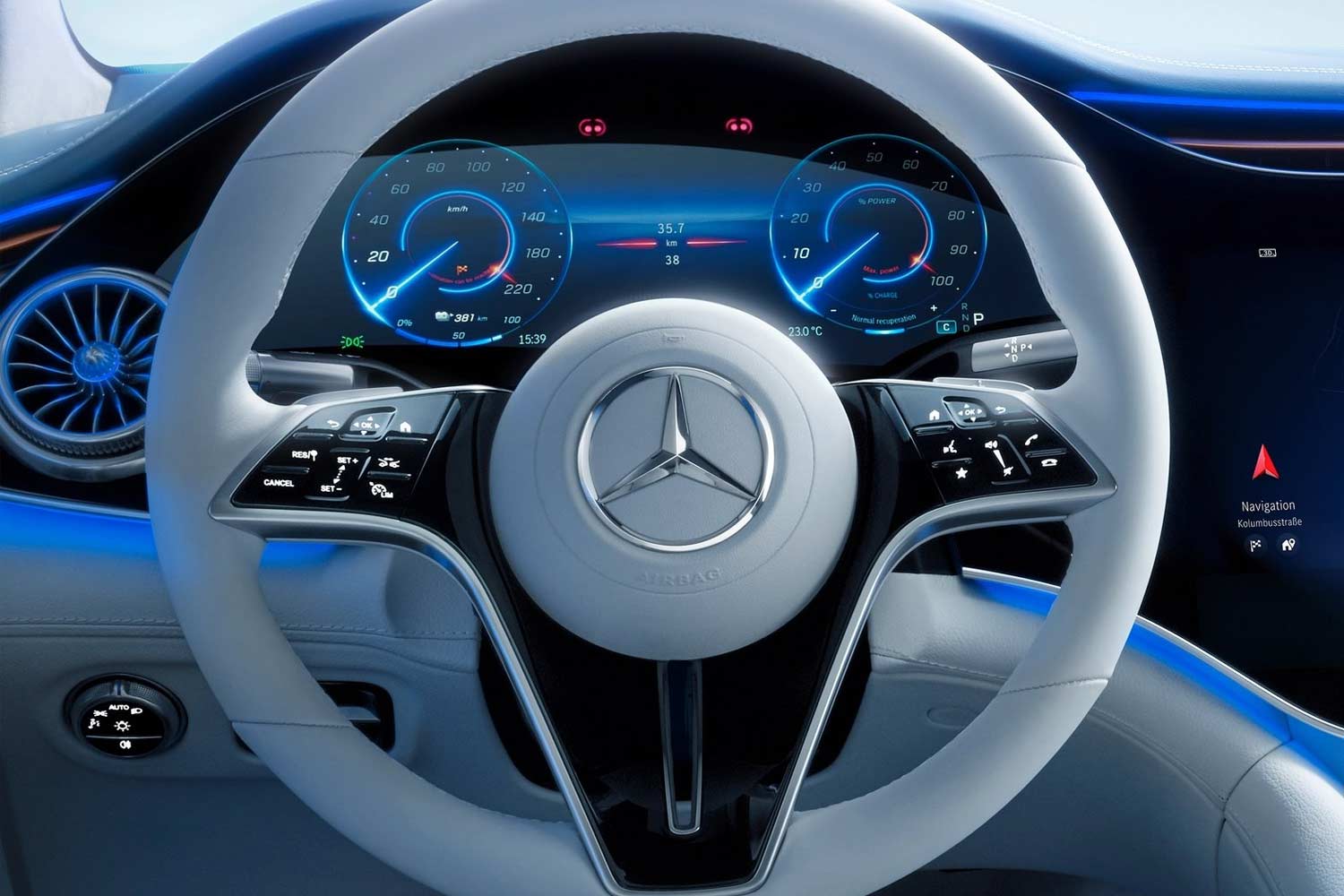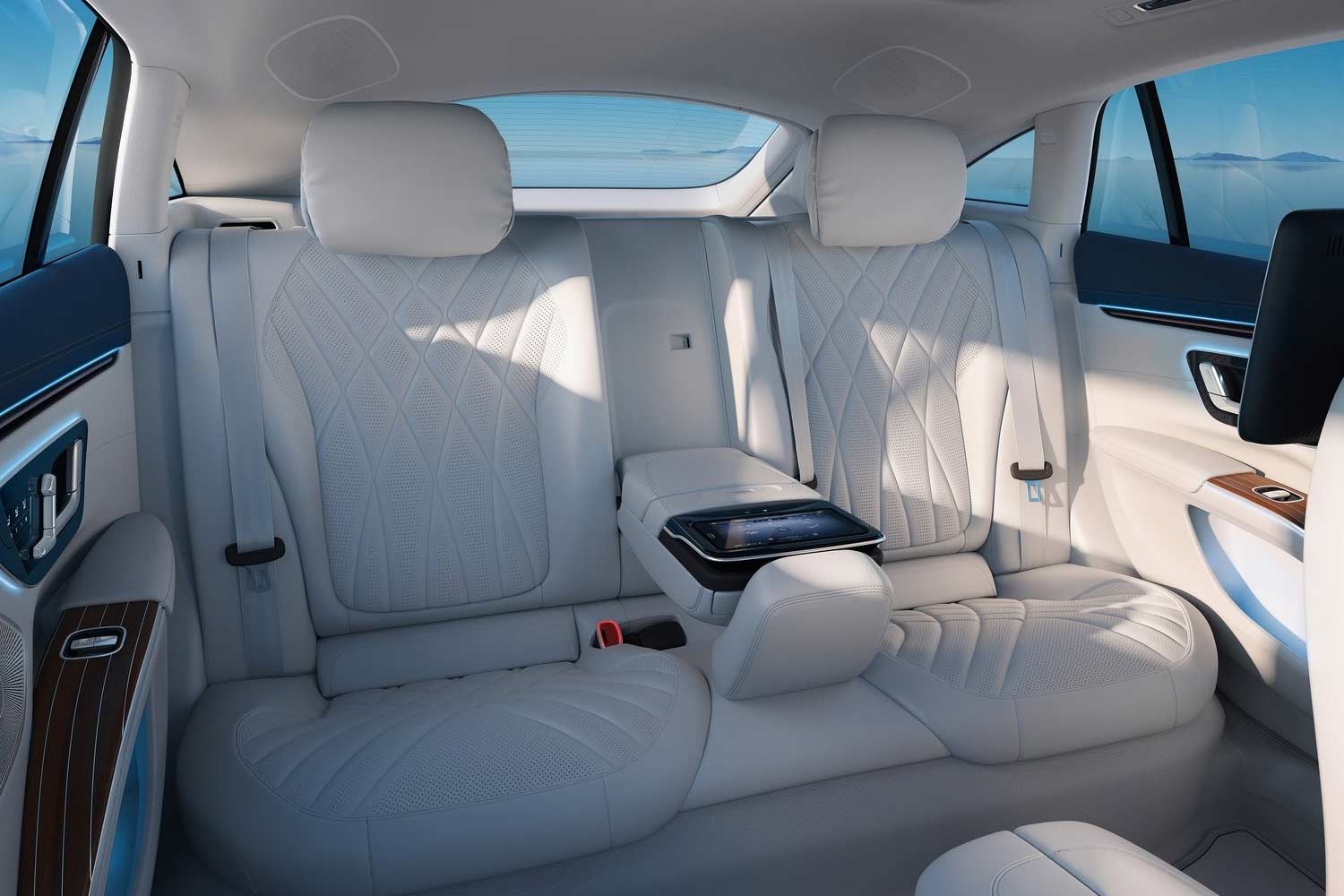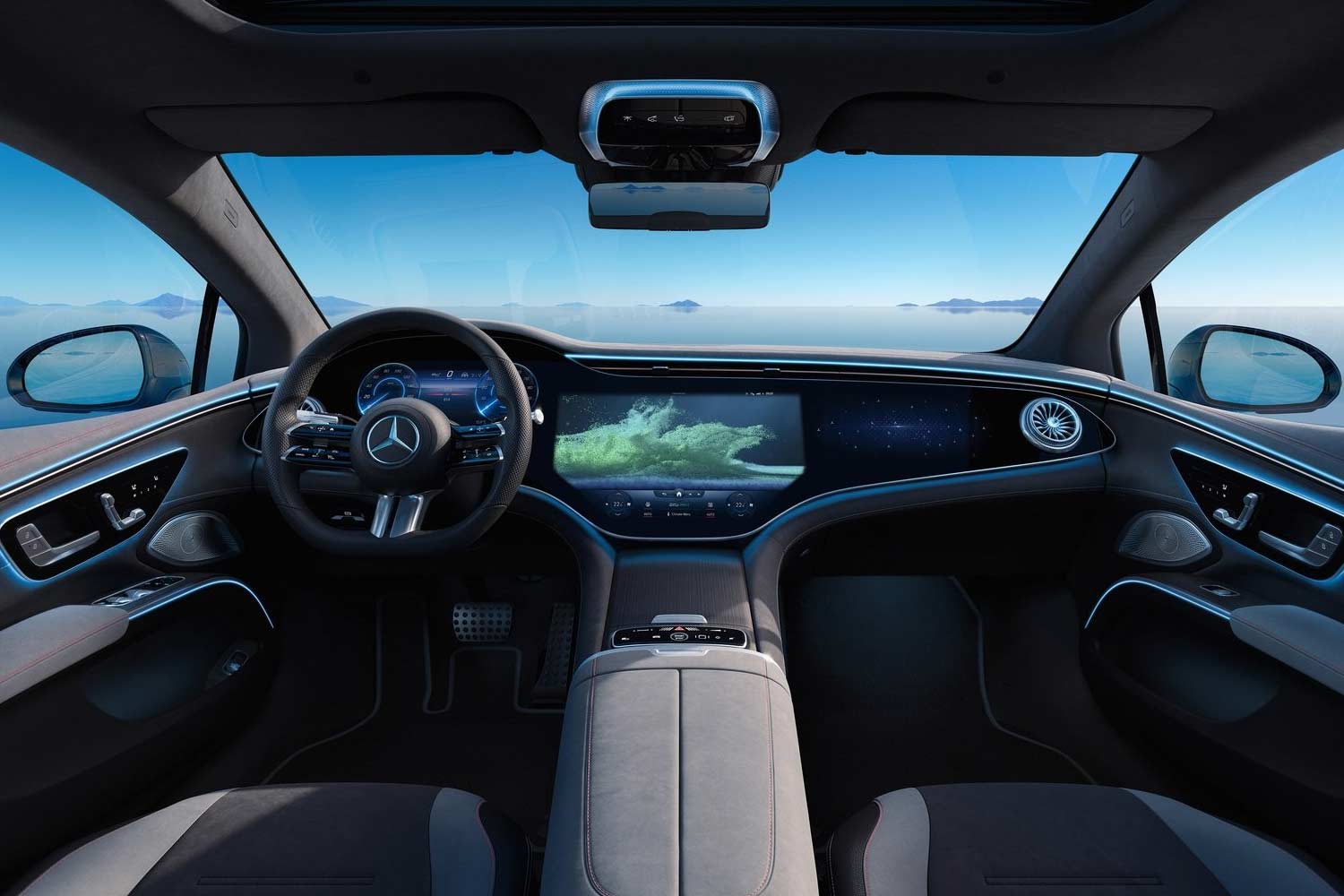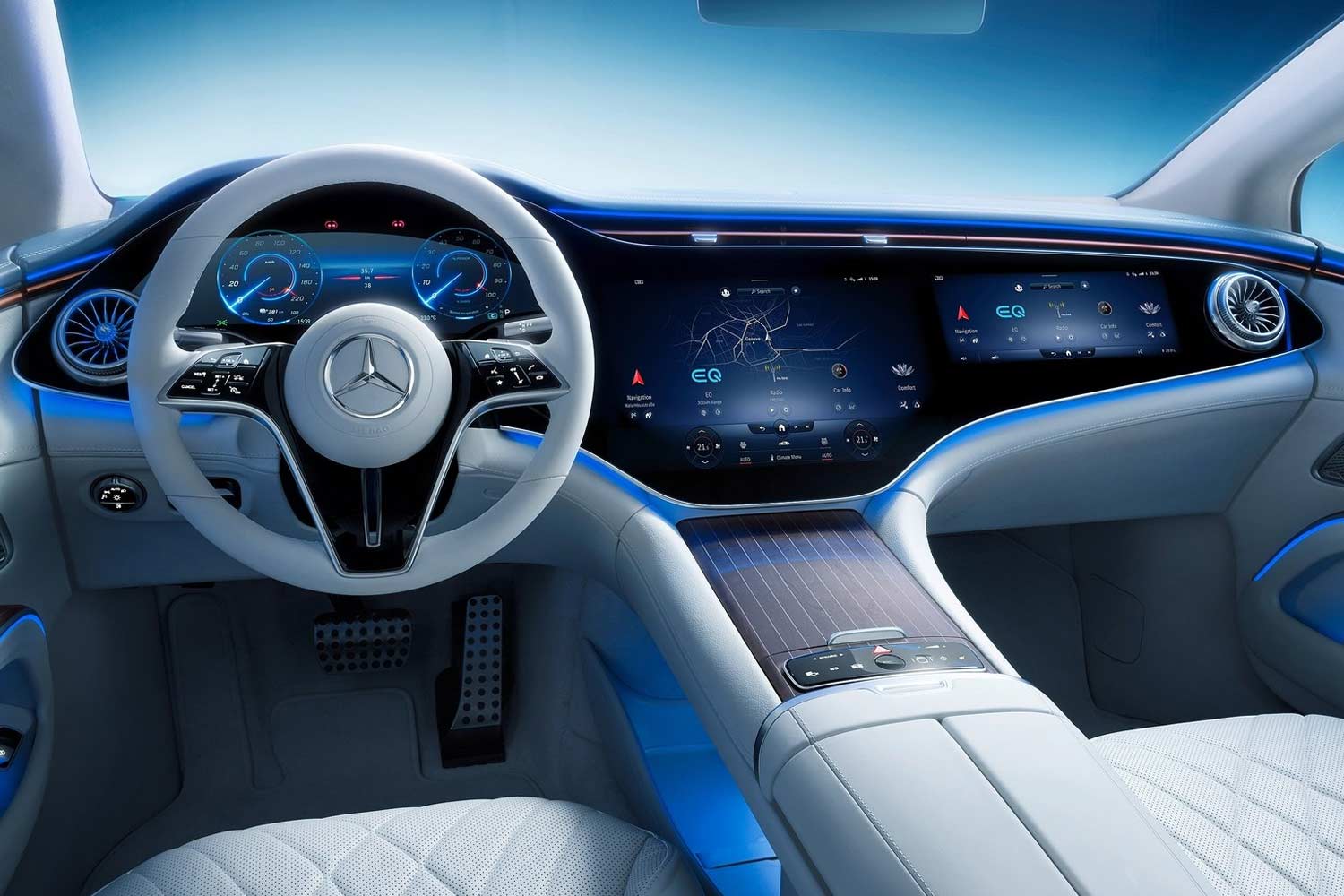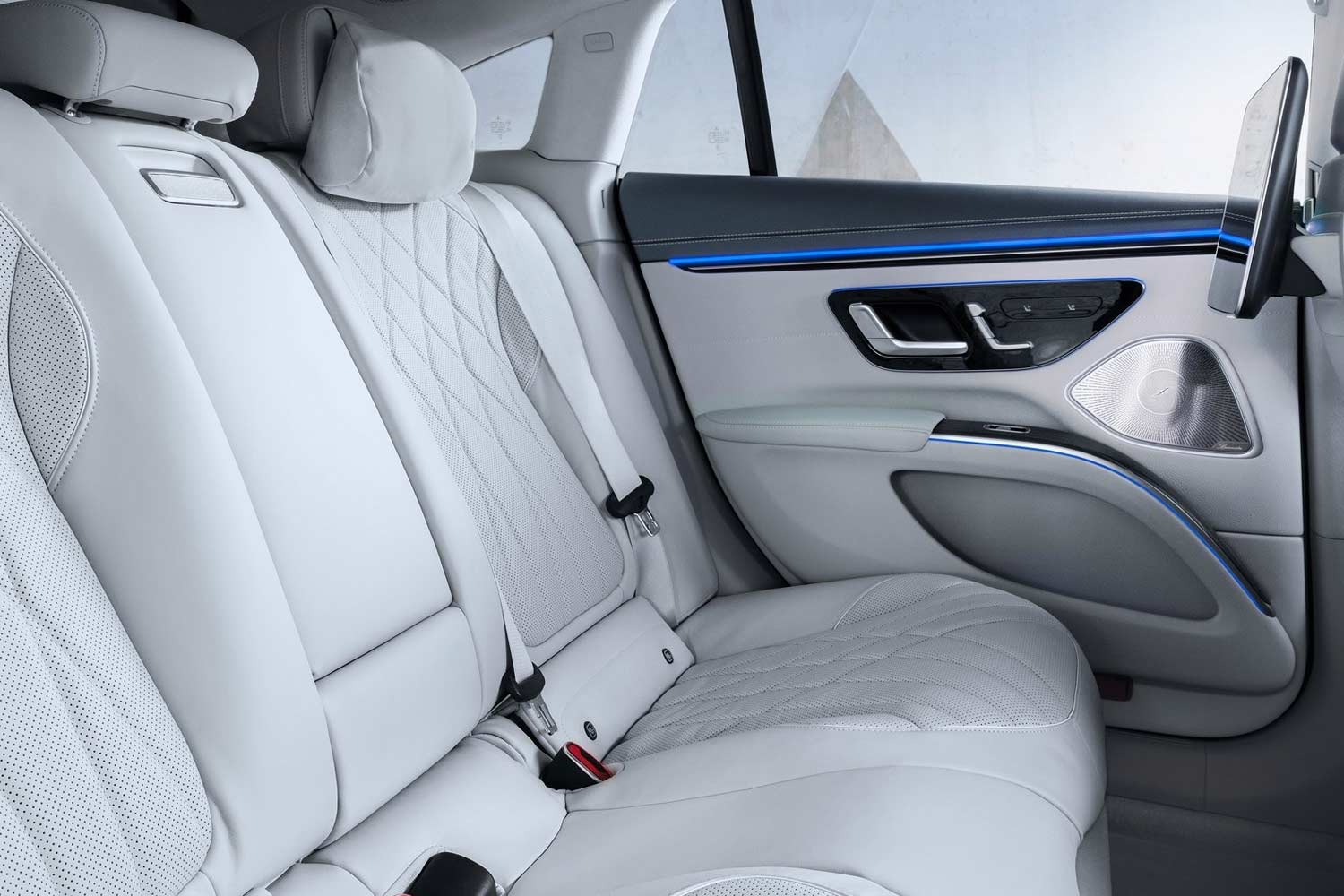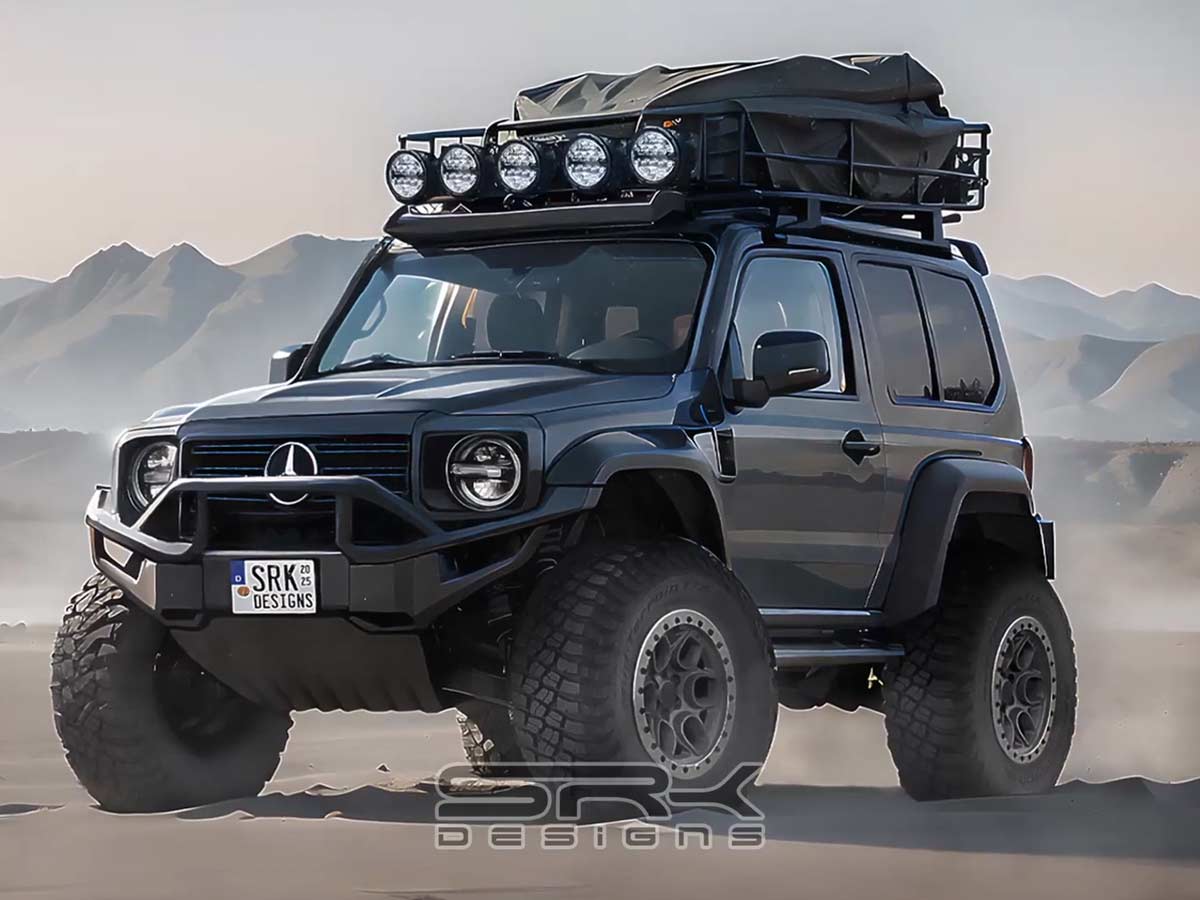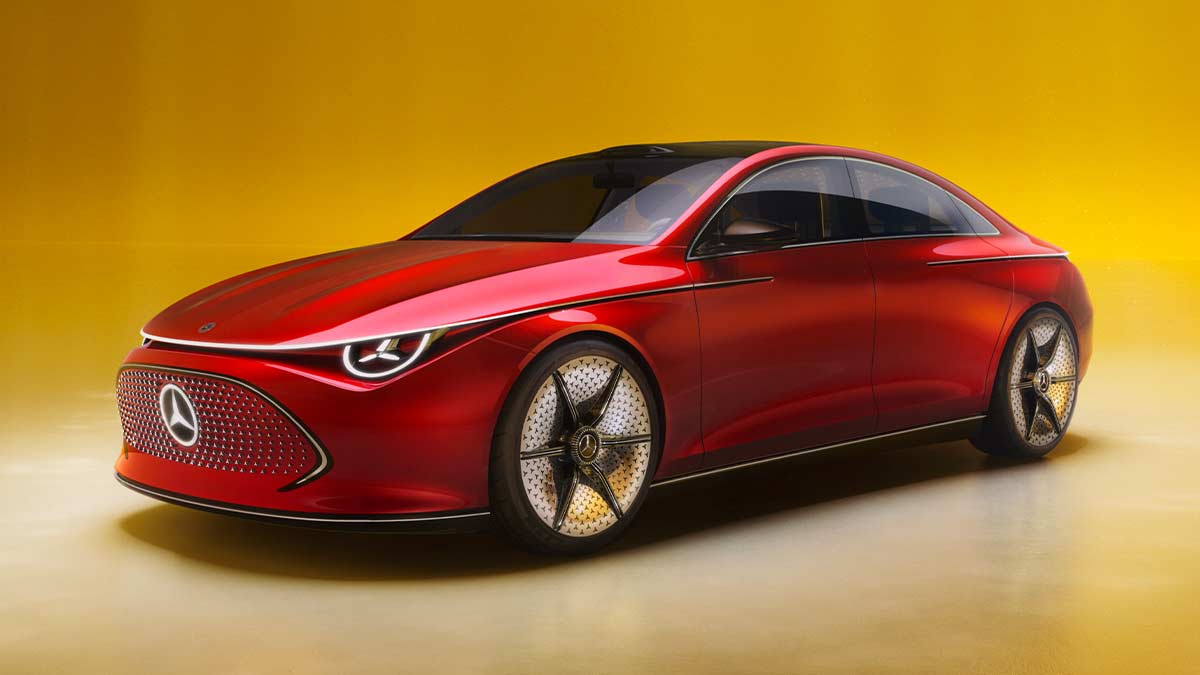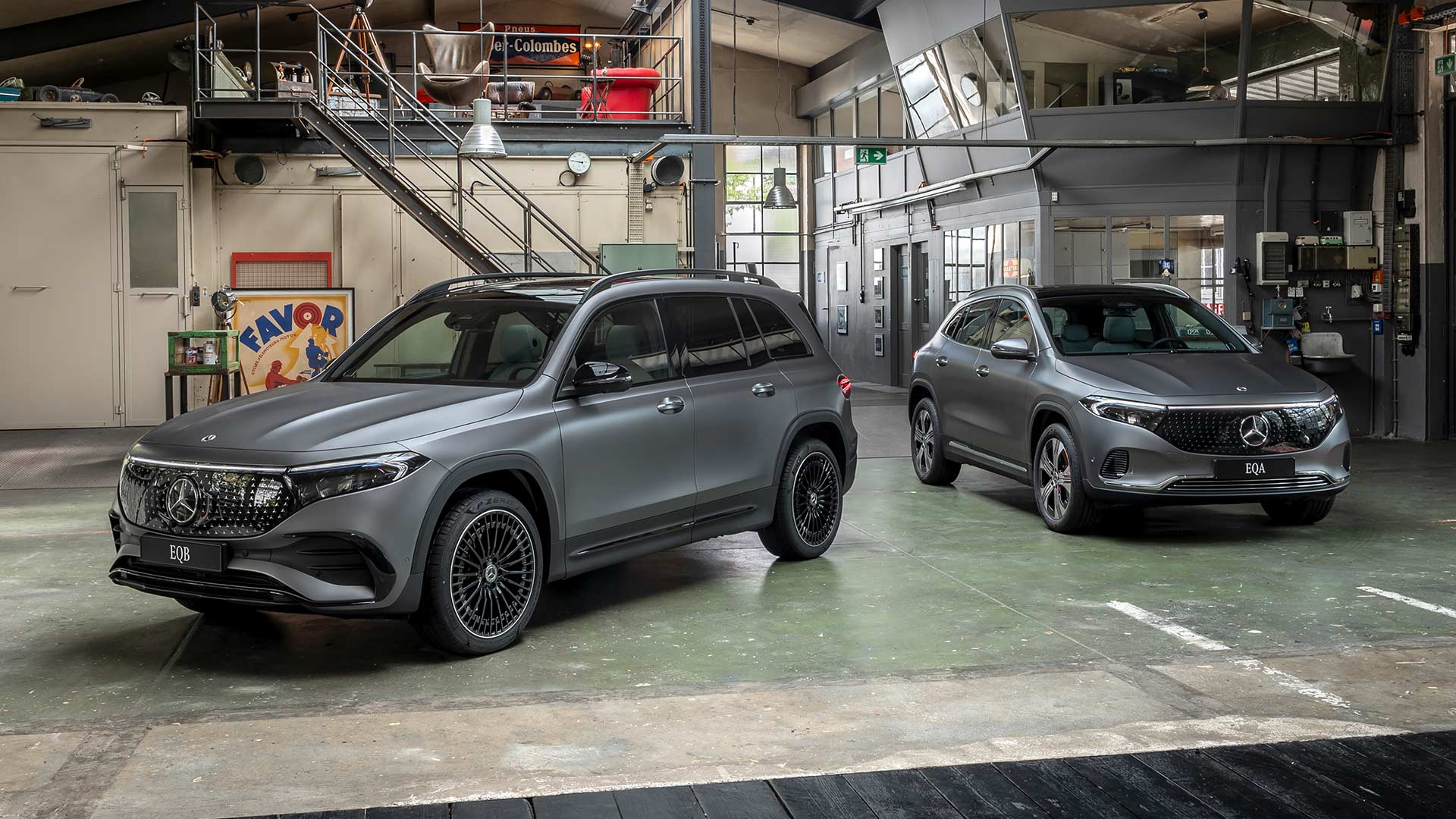The EQS is the first all-electric luxury saloon from Mercedes-EQ. With it, Mercedes-EQ is redefining this vehicle segment. The EQS is also the first model to be based on the modular architecture for luxury and executive-class electric vehicles. Fusing technology, design, functionality and connectivity, the EQS delights both drivers and passengers. First models on the market will be the EQS 450+ with 245 kW and the EQS 580 4MATIC with 385 kW. The consumption figures according to WLTP: EQS 450+ electrical consumption combined 20.4-15.7 kWh/100 km, CO2-emissions 0 g/km; EQS 580 4MATIC electrical consumption combined 21.8-17.4 kWh/100 km, CO2-emissions 0 g/km.
As part of its Ambition 2039 initiative, Mercedes-Benz is working on offering a carbon-neutral new car fleet within 20 years from now. By as early as 2030, the company wants more than half the cars it sells to feature electric drive systems – this includes fully electric vehicles and plug-in hybrids. In many areas, Mercedes is already thinking about tomorrow today: the new EQS is designed to be correspondingly sustainable. The vehicles are produced in a carbon-neutral manner, and resource-saving materials such as carpets made from recycled yarn are used. This is because Mercedes-Benz considers the entire value chain, from development and the supplier network to its own production. Mercedes-Benz AG has had its climate protection targets confirmed by the Science Based Targets Initiative (SBTI).
With a great deal of meticulous detail work and on the basis of the Purpose design, the aerodynamicists, in close cooperation with the designers, were able to achieve a new cd best value of 0.20. This makes the EQS the most aerodynamic production car in the world. The operating range particularly benefits from this. It is also among the best in terms of quiet running. The very low wind noise level contributes significantly to this.
The EQS also currently sets a very good value for recuperation: Of the maximum deceleration in the DAuto recuperation program of 5 m/s², up to 3 m/s² is achieved by recuperation (2 m/s² by the wheel brakes). This allows decelerating to a standstill without using the brake pedal, while at the same time the range benefits from this recuperation strategy and the high recuperation power (up to 290 kW). Deceleration is also applied to detected vehicles ahead until they come to a standstill, for example at traffic lights. Intelligent energy recovery is situation-optimised with the aid of ECO Assist and acts with foresight, taking into account traffic conditions or topography, among other things. The driver also can set three energy recovery levels and the coast function via paddle shifters on the steering wheel.
With ranges up to 770 kilometres (WLTP) and an output of up to 385 kW the powertrain of the EQS also meets every expectation of a progressive saloon in the S-Class segment. A performance version with up to 560 kW is being planned. All EQS models have an electric powertrain (eATS) at the rear axle, while the versions with 4MATIC also have an eATS at the front axle.
The EQS marks the launch of a new generation of batteries with significantly higher energy density. The larger of the two batteries has a usable energy content of 107.8 kWh. That is around 26 percent more than the EQC (EQC 400 4MATIC: combined electrical consumption: 21.5-20.1 kWh/100 km; CO2 emissions: 0 g/km). The innovative battery management software, developed in-house, allows updates over the air (OTA). In this way, the energy management system remains up to date throughout the life cycle. In terms of the cell chemistry, the cobalt content of the cathodes has been reduced to ten percent.
The EQS can be charged with up to 200 kW at fast charging stations with direct current. Power for up to another 300 kilometres (WLTP) is recharged in just 15 minutes. At home or at public charging stations, the EQS can be conveniently charged with up to 22 kW with AC using the on-board charger. In Japan, bidirectional charging with the EQS will also be possible, i.e. charging in both directions. In addition, there are various intelligent charging programs that can be activated automatically depending on the location, and functions such as particularly battery-saving charging.
By means of high-quality certificates of origin, Mercedes-Benz guarantees that energy from renewable energy sources is fed into the grid for charging current sourced via Mercedes me Charge. This so-called Green Charging has been an integral part of Mercedes me Charge since 2021. But Mercedes me Charge can do even more: drive to the appropriate charging station, open the flap, plug in and the current starts flowing: this is how easy the charging process is with the EQS, thanks to Plug & Charge. Other highlights include the densest network of charging points, with more than 500,000 of them in 31 countries, including over 200,000 in Europe. With IONITY Unlimited, all European Mercedes me Charge customers can use the fast charging network free of charge for one year.
Navigation with Electric Intelligence plans the fastest and most convenient route, including charging stops, based on numerous factors and reacts dynamically to traffic jams or a change in driving style, for example. A new feature of the EQS is a visualisation in the infotainment system (MBUX Mercedes-Benz User Experience) showing whether the available battery capacity is sufficient to return to the starting point without charging. Charging stations along the route that have been added manually are given preference in the route calculation. Proposed charging stations can be excluded. The estimated charging costs per charging stop are calculated.
Although the EQS is a close relative of the new S-Class, it is built on an all-electric architecture. This completely new concept made a rigorous Purpose Design possible: with its one-bow lines and cab-forward design with fastback, the EQS is clearly distinguishable from vehicles with combustion engines even at first glance. The design philosophy of Sensual Purity, combined with Progressive Luxury, is reflected in generously sculpted surfaces, reduced joints and seamless transitions (seamless design).
The front is combined into a ‘Black Panel’ unit. Innovative headlights connected by a light band and the deep black radiator grille (Black Panel) form the distinctive face. The exclusive look of the Black Panel radiator grille with central Mercedes star can be enhanced still further: as an optional extra, they are also available with a three-dimensional star pattern. This so-called Mercedes-Benz pattern is available in conjunction with AMG Line Exterior or Electric Art Exterior. The design picks up on the original star of the Daimler-Motorengesellschaft, which was registered as a trademark in 1911.
The EQS is the first Mercedes to offer the option of activating completely new vehicle functions via over-the-air updates (OTA) in many functional areas. Available from launch: two special driving programs for young drivers and service staff, some little games and the demo program “The Best or Nothing”. This means that, following the purchase and the initial new-car configuration, some of the features of the EQS can be adapted according to personal preferences. It will also be possible to unlock the rear axle steering with the larger steering angle of ten degrees. In addition to the classic purchase of individual functions, subscriptions, temporary activations and free test phases are also planned.
With ENERGIZING AIR CONTROL PLUS, Mercedes-Benz is taking a comprehensive approach to air quality in the EQS. The system is based on filtration, sensors, a display concept and air conditioning. The HEPA (High Efficiency Particulate Air) filter has a very high filtration level that enables it to trap fine particles, micro-particles, pollen and other substances that enter with the outside air. Sulphur dioxide, nitrogen oxides and odours are also reduced thanks to an activated charcoal coating. The HEPA filter has the “OFI CERT” ZG 250-1 certification in the area of viruses and bacteria. Using pre-entry climate control, it is also possible to clean the interior air before getting into the vehicle. The particulate levels outside and inside the vehicle are also displayed in MBUX. They can be viewed in detail in the dedicated Air Quality menu. If the quality of the outside air is low, the system can also recommend closing the side windows or the sliding sunroof.
As an option, the EQS has automatic comfort doors at the front and rear. When the driver approaches the car, first of all the door handles extend. As he or she approaches further, the driver’s door opens automatically. Using MBUX, the driver is also able to open the rear doors, for example, to let in children in front of the school.
As an exceptionally intelligent vehicle, the EQS has up to 350 sensors, depending on the equipment. These record distances, speeds and accelerations, lighting conditions, precipitation and temperatures, seat occupancy as well as the driver’s blink of an eye or the passengers’ speech. This wealth of information is processed by control units that, controlled by algorithms, make decisions at lightning speed. So they are the brain, so to speak. The new EQS can expand its capabilities based on new experiences, because it is highly capable of learning thanks to artificial intelligence (AI).
The all-round sound experience in the EQS also makes the paradigm shift from a conventional to an electric car audible. A variety of soundscapes allows for an individual acoustic set-up. In combination with the Burmester® surround sound system, the EQS features the two soundscapes Silver Waves and Vivid Flux. As Sound Experiences they can be selected or switched off on the central display. Another soundscape can be unlocked using over-the-air technology. The interactive driving sound, which is reproduced via the sound system’s loudspeakers in the interior, also moves within the respective sound world.
New to ENERGIZING COMFORT are the three ENERGIZING NATURE programs Forest Glade, Sound of the Sea and Summer Rain. These provide an immersive and impressively realistic on-board sound experience. These calming sounds were created in consultation with the acoustic ecologist Gordon Hempton. As with the other programs that form part of ENERGIZING Comfort, lighting moods and images are used to address other senses.
The standard rear-axle steering with a steering angle of up to 4.5 degrees contributes to the handy and dynamic impression of the EQS. Alternatively, rear-axle steering with a steering angle of up to ten degrees can be ordered or subsequently activated by an upgrade over the air (OTA). This enables a turning circle of 10.9 metres for the EQS, which is over five metres long. This corresponds to the turning circle of many models in the compact class. The respective rear-axle angles and trajectories are shown in the driving mode menu in the central display.
Thanks to powerful sensors that monitor the vehicle’s surroundings, the parking systems can help the driver with manoeuvring in many areas. The driver can park and unpark the car via smartphone using Remote Parking Assist. With the pre-installation for the INTELLIGENT PARK PILOT, the EQS is prepared for Automated Valet Parking (AVP, SAE level 4). If equipped with the required optional extra and the corresponding Connect service (depending on the country), the vehicle has the technology on board to park and unpark fully automatically and without the driver in car parks equipped with AVP infrastructure, provided that national laws allow such operation.
The revolutionary DIGITAL LIGHT headlamp technology (standard from Advanced Plus equipment level) enables guide markings or warning symbols to be projected onto the road. New are the two assistance functions that display the start of the cooperative lane change and provide a warning/direction instruction if Lane Keeping Assist or Blind Spot Assist detect a hazard. DIGITAL LIGHT has a light module with three extremely powerful LEDs in each headlamp, whose light is refracted and directed by 1.3 million micro-mirrors. The resolution is therefore more than 2.6 million pixels per vehicle.
With the optional DRIVE PILOT, the EQS will be able to drive in conditionally automated mode at up to 60 km/h where traffic density is high or in tailbacks on suitable motorway sections, initially in Germany. By relieving the pressure on the driver, the system enables him or her to undertake secondary activities such as browsing on the internet or dealing with emails in the In-Car Office, and so gain extra time.
The MBUX Hyperscreen is the absolute highlight in the interior. This large, curved screen unit sweeps almost from A-pillar to A-pillar. Three screens sit under a cover glass and appear to merge into one. The 12.3-inch OLED display for the front passenger gives him or her their own display and control area. The entertainment functions are only available there while the car is being driven in accordance with the country-specific legal regulations. Mercedes-EQ relies on an intelligent, camera-based locking logic: if the camera detects that the driver is looking at the front passenger display, it is automatically dimmed.
With adaptive software, MBUX adapts completely to its user and makes personalised suggestions for numerous infotainment, comfort and vehicle functions. With the zero layer, the most important applications are always offered on the top level within the field of vision, according to situation and context.
The latest generation of driver assistance systems includes numerous driver support functions. New, for example, is the additional microsleep warning from ATTENTION ASSIST. It analyses the driver’s eyelid movements through a camera on the driver’s display (only in conjunction with MBUX Hyperscreen). The assistance display within the driver’s display shows the operation of the driving assistance systems in a comprehensible full-screen view.
The principles of Integral Safety, in particular accident safety, apply regardless of the platform. Like all other Mercedes, the EQS therefore features a rigid passenger cell, special deformation zones and state-of-the-art restraint systems. PRE-SAFE® is standard. The fact that the EQS is based on an all-electric architecture also opened up new design possibilities for its safety concept. It meant, for example, that a favourable location could be chosen for the installation of the battery, in a crash-protected area in the underbody. And because there is no large engine block on board, the behaviour in a frontal crash could be modelled even better. In addition to the standard crash tests, the car’s performance in various additional load situations was verified and extensive component tests carried out at the Vehicle Safety Technology Centre (TFS).
The exterior design
The EQS is the first all-electric premium saloon from Mercedes-EQ. The innovative and holistic design is based on a new vehicle architecture. It differs from vehicles with internal combustion engines at first glance: highest demands on function and aerodynamics are combined with innovative aesthetics in the unmistakable purpose design. Sensual Purity is reflected in generously modelled surfaces, reduced joints and seamless transitions (seamless design).
The sporty, low and slim front of the EQS forms a coupé-like silhouette with a bow (one bow) stretched tightly over the greenhouse. The A-pillar, which has been moved far forward, and the C-pillar at the rear generate space for a generous passenger compartment. Unique in this segment is the cab-forward design: the overhangs and the front-end assembly are short, the rear is smoothly rounded. The flush-positioned wheels measuring just under 75 cm in size and ranging from 19 to 22 inches, give the EQS a sporty character in concert with a muscular shoulder section.
The design philosophy of Sensual Purity is implemented with the clear, generous and surface-emphasising modelling. Seamless design is realised with reduced lines, precise joints and flowing transitions. Aerodynamics and formal aesthetics go hand in hand. The detailed design expresses innovation and exclusivity.
Black Panel front with Mercedes-Benz pattern on request
The front is combined into a ‘Black Panel’ unit. Innovative headlights connected by a light band and the deep black radiator grille (Black Panel) form the distinctive face. This makes the EQS the model for a new luxury-class generation from Mercedes-EQ. Three light dots, combined with the characteristic Mercedes eyebrow, form the striking daytime running light signet. LED High Performance headlamps are standard, DIGITAL LIGHT is available as an optional extra.
The exclusive look of the Black Panel radiator grille with central Mercedes star can be enhanced still further: in conjunction with AMG Line Exterior or Electric Art Exterior, they are also available as an optional extra with the Mercedes-Benz pattern, a three-dimensional star pattern. This references the original star of the Daimler-Motorengesellschaft company, which was registered as a trademark in 1911. In addition to its unique look, there is also a function behind the Black Panel surface: the various sensors of the driver assistance systems such as ultrasound, camera, radar and lidar (laser) are integrated there. Seamless design is particularly evident in the front-end design with its reduced gap pattern and an overlapping bonnet – it does away with the traditional separation between the front bonnet and wings.
Striking one-bow line
The aerodynamic silhouette with frameless, coupé-like doors and the high, arched beltline are independent design elements in the profile. The exterior mirrors sit on the beltline and are aerodynamically and aero-acoustically optimised. Chrome accents highlight design focal points like the one-bow line of the window graphics. High-quality painted contrasting surfaces can be found in the lower area of the vehicle.
Flush door handles are standard on all models. A panoramic sunroof is available as an option. It consists of two modules that together form a large glass surface and thus provide a lot of transparency and light in the interior.
The service flap for wiper fluid was integrated into the side of the left wing. The bonnet is only opened by the specialist workshop for maintenance work, such as replacing the interior air filter.
Lighting strip with LED lamps in 3D helix design
The round, coupé-like rear end is sensuously designed. In contrast to this is the rear spoiler with a sharp spoiler lip. The flush tailgate was integrated almost seamlessly with precise gaps. The rear camera is hidden behind the star, protected from dirt. The highlight at the rear are the innovatively designed LED lamps: Their insides have the shape of a curved and illuminated 3D helix. As at the front, the EQS also has a continuous light band at the rear – a distinguishing feature of Mercedes-EQ vehicles.
Paintwork with high-quality effect pigments
The EQ-specific exterior paints sodalite metallic and velvet brown metallic emphasise the one-bow line and give the EQS a dynamic appearance thanks to eye-catching pigments.
The design concept (exterior)
Although the EQS is a close relative of the new S-Class, it is built on an all-electric architecture. This completely new concept made a rigorous Purpose Design possible: with its one-bow lines and cab-forward design with fastback, the EQS is clearly distinguishable from vehicles with combustion engines even at first glance. This is further emphasised by the Black Panel front and the design of the front and rear lights. Highest standards on function and aerodynamics go hand in hand with innovative aesthetics. The design philosophy of Sensual Purity, combined with Progressive Luxury, is reflected in generously sculpted surfaces, reduced joints and seamless transitions (seamless design).
Purpose design
Electric cars can either be based on an existing (combustion engine) platform (“conversion design”) or, like the EQS, on an all-electric architecture (“purpose design”). This complete and consistent new concept allows freedom in the arrangement of the components and a radically different design. This leads to advantages in packaging and ergonomics for the EQS. The purpose design with smooth underbody and mostly closed radiator shutter as well as the favourable basic shape were a good starting point for the flow optimisation. With a lot of meticulous detail work, the aerodynamicists, in close cooperation with the designers, were able to achieve the new best cd value starting from 0.20.
One-bow design
The roof line above the passenger compartment, the so-called greenhouse, is as taut as a bow (“one bow”) in the EQS. A coupé-like silhouette is created in concert with the sportily low and slim front. This is underlined by the frameless doors and a high, curved beltline as an independent design element.
Cab-forward design (“cab placed in front”)
The far-forward base of the A-pillar and the C-pillar at the rear create space in the EQS for a generously dimensioned passenger compartment. The overhangs and the front-end assembly are short, the rear is smoothly rounded.
Seamless design
Body creases have had their day at Mercedes-Benz. With reduced lines, precise gaps and flowing transitions, the designers have realised the new purism in the EQS in superior fashion. An exemplary element is the front-end design: the front bonnet overlaps the wings. This also reduces the number of visible panel gaps.
Black Panel front
The deep black surface of the grille (“Black Panel”) defines the striking face of the EQS. The Black Panel unit at the front is a design feature of the Mercedes-EQ model family.
Mercedes-Benz pattern
Abstracted, three-dimensional star pattern based on the original three-pointed star, the early trademark of Daimler Motorengesellschaft (DMG). The company had applied for a utility model for a three-pointed star in 1909; it was entered in the trademark registry on 9 February 1911. The three-pointed star was used immediately and after a short time was already one of the best-known trademarks in the world. The star first received a wreath in 1916. The pattern is used in several places in the EQS, for example, in the exterior as a special variant of the Black Panel front or in a light-alloy wheel design. In the interior, the Mercedes-Benz pattern can be found in the backlit trim elements with laser-cut or on the front passenger display as a digital decorative image.
Light design
The headlights have a striking daytime running light signet with three light dots and are connected to each other via a light band. This is just as defining for the EQ family as the lights at the rear: the rear lights with inner workings in the form of a curved 3D helix are also connected by a light band.
The new EQS under the magnifying glass: see, hear, smell, feel
The EQS can be experienced with almost all the senses. This elevates the all-electric top-of-the-range model to a new dimension in aesthetics and luxury. Seeing, hearing, smelling, feeling and tasting, these are the classic human senses. The new EQS appeals to the first four in many ways:
Visual perception
Over 100 million rods and cones are located in the retina of the human eye. These sensory cells enable us to see, for example, the features of the EQS that are revolutionary for the luxury class, such as the cab-forward design or the coupé-like “one-bow” lines with fastback. This clearly distinguishes the EQS from vehicles with combustion engines at first glance and is further emphasised by the Black Panel front and the design of the lights.
The designers had the mission and the chance to tread a completely new path in styling the interior. They made use of this freedom: the MBUX Hyperscreen is one of the highlights in the new EQS. The concave screen stretches out in front of the occupants from the left to the right A-pillar like an ocean wave. Besides the sheer size, the high-quality, detailed design also guarantees a “wow” effect. The MBUX Hyperscreen is integrated into the instrument panel in minimalist fashion. Only a thin silver shadow frame, a vent band and a narrow leather frame surround it. The vent band spans across the entire width at the top and is very slim at the same time. These extreme proportions, together with the glass wave of the MBUX Hyperscreen, create the avant-garde architecture of the cockpit. The calm and clear design of the door panels borrows from the interior design of modern living spaces. Avant-garde as well as traditional materials and colours give the interior a special atmosphere. Another visual highlight is the head-up display with augmented reality content.
Auditory perception
People perceive sound waves with their ears. The listening impression of the EQS ranges between comfortable silence and an interactive, sensual sound experience. With a holistic sound production, the sound experts from Mercedes have made the paradigm shift from the combustion engine to the electric car acoustically perceptible. The EQS comes from the factory with two soundscapes: Silver Waves and Vivid Flux. They can be selected or switched off as sound experiences on the central display. Driver and passengers are already greeted acoustically when approaching the vehicle and when getting in. A corresponding aura sound also accompanies exiting and locking the EQS. The optional driving sound, which is reproduced by the speakers of the sound system in the interior, is also within the respective soundscape. The new ENERGIZING NATURE programs of ENERGIZING COMFORT also offer an impressively realistic listening experience. The soothing sounds called Forest Glade, Sounds of the Sea and Summer Rain were created in cooperation with nature acoustician Gordon Hempton. As with the other ENERGIZING COMFORT programs, other senses are addressed with lighting moods and images. Streaming services are another alternative to the new type of silence and interactive driving sound in the car: Mercedes-Benz has fully integrated the major music streaming services into the MBUX infotainment system with the “Online Music” service.
Olfactory perception
Scents are constantly being introduced when we breathe. Two systems report odours to the brain independently of each other: millions of receptors in the nasal mucosa and the ends of the trigeminal nerve. The EQS has something against unpleasant odours: its large HEPA filter (High Efficiency Particulate Air) not only cleans the outside air very effectively of fine dust, minute particles and pollen. Special activated charcoals in the HEPA filter and the interior air filter also filter out sulphur dioxide and nitrogen oxides as well as odours. Due to their pore structure, they have a very large inner surface area. Around 600 grams of activated charcoal are used in the HEPA filter of the EQS. The adsorption area is equivalent to about 150 football fields.
The active fragrancing of the EQS, which is part of the AIR-BALANCE Package, also appeals to the sense of smell. A new fragrance has been composed for the new top-of-the-range electric model: No.6 MOOD Linen – carried by the green note of a fig lying on a piece of linen.
Haptic perception
The skin is the largest human sensory organ. With its help, we perceive touch and feel, for example, whether things are soft or hard, warm or cold, wet or dry. There is a lot to feel in the interior of the EQS: flowing leather surfaces with intricate seam patterns or dynamic perforation; the modern fine structure NEOTEX, which combines the look of nubuck leather and high-tech neoprene; trim elements made of open-pore real wood or in 3D relief look. The MBUX Hyperscreen’s central and front passenger displays also offer haptic feedback. If a finger touches certain points on the touchscreen, the user feels pulses on the smooth surface that give the impression of a mechanical switch. Another operating aid is the so-called force feedback of both displays. Different levels of pressure on the glass change the response. For example, MBUX then jumps to another menu level. Finally, the up to ten different massage programs of the EQS can be felt not only with individual fingers, but with the whole body. They use the vibration motors in the seats and can also enhance the effect of the relaxing massage with heat based on the hot stone principle. For this purpose, the seat heating is combined with the inflatable air chambers of the multicontour seats.
Aerodynamics
Less resistance for more range and quiet: With a cd value from 0.20, it sets a new aerodynamic benchmark for production vehicles. This benefits the range. It is also among the best in terms of quiet running. A great deal of attention to detail lies behind the very good aerodynamic and aeroacoustic performance.
The purpose design with smooth underbody and mostly closed radiator shutter as well as the favourable basic shape were a good starting point for the flow optimisation. With a great deal of meticulousness, the aerodynamicists were able to achieve the new record cd value of 0.20 in close cooperation with the designers. The frontal area of the EQS is 2.51 m2. This results in an effective air resistance from 0.5 m².
The spread of the individual variants in terms of cd value is comparatively small – customers thus have a wide choice of models without having to consider the range. Mercedes also offers an aero wheel optimised in the wind tunnel in sizes 19, 20 and 21 inches.
Behind the very good aerodynamic performance is a lot of detail work. The EQS is the first representative of the new electric platform. This is why the invisible details, such as those on the underbody, were developed particularly intensively. Several thousand computational runs were performed in the virtual wind tunnel alone. Below are some details of the aero development:
- Aerodynamically favourable dimensional concept and tyres with optimised geometry
- Aerodynamically optimised wheels in the dimensions 19, 20 and 21 inches
- Cooling air control system with innovative transverse lamella makes extremely efficient use of the available installation space
- Continuous seals in the front area, e.g. between service flap, Black Panel and headlamps
- Streamlined design of the A-pillar
- Wheel spoilers at front and rear. The rear, arrow-shaped wheel spoiler was developed by a fluid dynamics expert directly in the wind tunnel for the benefit of a greater range.
- Elaborately matched underbody panelling in the rear-axle area to take even greater advantage of the smooth underbody of the battery.
- The rear spoiler benefits both rear-axle lift and aerodynamic drag.
For more than three decades, the aerodynamicists at Mercedes-Benz have been achieving top results. Currently, the A-Class Saloon (V 177) and the S-Class (V 223) are the worldwide record holders with a cd value of 0.22. The special simulation tools and the Mercedes-Benz aero-acoustics wind tunnel commissioned in 2013 make a decisive contribution to this. The EQS also received its fine-tuning there.
Extensive sealing and insulation measures reduce wind noise
In an electric car without the usual level of powertrain noise, wind noise is particularly noticeable by the occupants. That is why the aeroacoustic behaviour is particularly important. In this area, too, the new EQS is one of the very best vehicles in its class.
New solutions had to be found due to the concept-related lack of a partition between the interior and the boot and the aluminium alloys used in many places. Low-frequency noise, which can be perceived as reducing comfort, is prevented by filling numerous cavities in the body with acoustically effective foam.
It was possible to reduce the high-frequency components of the wind noise by specific measures on the door and window seals. Special attention was paid to the sealing of the transitions between the six side windows. The seals on the flush-fitting door handles, the window support and on the raised exterior mirrors are also noise-optimised.
A further contribution was made by the newly developed A-pillar with a specially shaped piece of trim at the transition to the windscreen. The development is supported by both modern flow simulations and external noise measurements using a special microphone array in the wind tunnel. The A-pillar designed in this way not only improves the aero-acoustics, but is also important for a low cd value and in keeping the windows free of dirt.
For further enhanced quiet running, the standard Acoustic Comfort Package has been developed. This includes additional insulation measures in the interior. Optionally, there are acoustically effective laminated glass panels at the side and rear. The additional acoustic glazing mainly reduces the wind noises even further, but also does so for noises coming in from the outside (for example, tyre noise or passing/oncoming vehicles). Particularly on longer journeys or motorway journeys, the driver remains more relaxed and the passengers feel more comfortable as a result.
On the optional panoramic roof, various wind deflection measures (wind deflectors, covers and seals with optimised geometry) ensure a high level of quiet running despite the large opening area of the roof.
The automatic comfort doors
As an option, the EQS has automatic comfort doors at the front and rear. When the driver approaches the car, first of all the door handles extend. As he or she approaches further, the driver’s door opens automatically. Using MBUX, the driver is also able to open the rear doors, for example, to let in children in front of the school. With one-touch operation, the automatic comfort doors can be closed conveniently and with little effort. The sensors of the parking assistance systems are used for obstacle detection. Their integration into Blind Spot Assist (option) provides additional safety.
Hold the door? A matter of course for cavaliers or gentlemen of the old school. Or for the new EQS: Its automatic comfort doors make entry and exit particularly convenient. Because with this optional equipment, all four doors are electrically powered and open and close automatically. If desired, the EQS can even hold the driver’s door open like a chauffeur. If the driver approaches the EQS from the side, the door handle first extends at a distance of approximately six metres. If the distance is only about 1.5 metres, the car unlocks and automatically opens the driver’s door. This special welcome function can be activated or deactivated via MBUX.
The comfort doors are available in combination with the Premium Plus Package. The comfort doors can be operated in many ways: as usual via the door handles (inside and outside), by vehicle key, via the central display or the optional MBUX High-End Rear-Seat Entertainment System. In addition, the driver’s door closes automatically when the brake pedal is depressed.
The comfort doors have obstacle detection. Opening is also monitored by Blind Spot Assist if it is active: If the system detects that another road user is approaching from behind, a vehicle exit warning is given. The doors only open when it is safe to do so.
To protect against damage, the car also uses data from the parking sensors. If the EQS has the automatic doors and the KEYLESS-GO Comfort Package Plus, ultrasound sensors monitor the surroundings when parking. In combination with the Premium Plus Package and the included Parking Package with 360° camera, observation is also provided by cameras in the exterior mirrors. The EQS then takes detected obstacles into account when opening the doors. Proximity sensors in the doors are also active when the vehicle is stationary. They also scan the environment while opening.
There is an electric actuator on the catch strap in each door. The doors are then swung open and closed in a controlled manner on command from the door control panel. The comfort doors were required to undergo extensive testing in true Mercedes-Benz fashion. Before being made to demonstrate their operating convenience and reliability in overall vehicle trials, they were tested on various test rigs including the climatic chamber. Naturally their acoustic properties and safety functions were also thoroughly tested.
Electric powertrain
Nonstop from Munich to Berlin or from Oslo to Stockholm: with an operating range of up to 770 kilometres (WLTP) and an output of up to 385 kW, the powertrain of the EQS also meets every expectation of a progressive saloon in the S-Class segment. All EQS models have an electric powertrain (eATS) at the rear axle, while the versions with 4MATIC also have an eATS at the front axle. In the 4MATIC models, the Torque Shift function ensures intelligent, continuously variable distribution of drive torque between the rear and front electric motors and thus the use of the most efficient eATS in each case. The modular powertrain concept ensures high overall performance and long range.
The modular drive concept allows a wide range of maximum total drive powers from 245 to 385 kW. A performance version with up to 560 kW is being planned. Depending on the size of the battery and the vehicle equipment and configuration, WLTP ranges of up to 770 kilometres are possible.
The electric motors on the front and rear axles are permanently excited synchronous motors (PSM). With the PSM, the rotor of the AC motor is fitted with permanent magnets and therefore does not need to be supplied with power. The magnets – and thus the rotor – follow the rotating alternating current field in the winding of the stator. In the EQS, Mercedes-Benz uses a so-called pull-in winding for a particularly strong magnetic field. The engine is said to be synchronous, because the rotor turns at the same rate as the magnetic field of the stator. The frequency is adjusted in the power electronics convertors to the speed requirements of the driver. The advantages of this design include high power density, high efficiency and high power constancy. The motor on the rear axle is particularly powerful due to its six-phase design: It has two windings with three phases each.
Cooling: sophisticated thermal concept for high load capacity
Consistently high performance and multiple accelerations without a drop in power characterise the drive philosophy of the EQS. This includes a sophisticated thermal concept with some special features. A so-called water lance in the shaft of the rotor cools it from the inside. Other cooling elements in the cooling circuit are fins on the stator, a needle-shaped pin-fin structure on the inverter and a transmission oil cooler. This also brings more efficiency during cold driving, because the heat exchanger then serves to heat the transmission oil and thus reduces friction in the transmission.
Intelligent recuperation: one-pedal driving to a standstill
The EQS offers several variants of energy recovery: In this process, the high-voltage battery is charged by converting the mechanical rotary motion into electrical energy during push or braking operation. The driver can manually select the deceleration in three stages (D+, D, D-) and the coast function via shift paddles behind the steering wheel. Additionally, there is DAuto. In this programm, up to 5 m/s² deceleration is achieved, 3 m/s² of which is due to recuperation (2 m/s² via the wheel brakes). The recuperation power of the all-wheel drive versions is up to 290 kW, and for rear-wheel drive vehicles, traction (and thus driving stability) is the limiting factor.
ECO Assist also offers situation-optimised energy recovery – deceleration is so strong or weak that it ultimately results in the most efficient driving style. Recuperative deceleration is also used as far as possible approaching detected vehicles ahead until they come to a standstill, for example at traffic lights. The driver does not need to press the brake pedal for this – pure one-pedal driving.
4MATIC models: infinitely variable distribution of the drive torques
In the models with 4MATIC, the Torque Shift function intelligently and continuously distributes the drive torques between the front and rear axles. It thus ensures the use of the most efficient eATS in each case, as these can be regulated independently of each other. The required drive torque at the wheels is checked 10,000 times per minute and set if necessary: The reaction is thus much faster than would ever be possible with a mechanical all-wheel drive.
Extensive testing: special test benches at Mercedes-Benz
On its way to series production, the EQS covered around five million test kilometres, including at the Test and Technology Centre (PTZ) in Immendingen. The systematic validation of the overall vehicle serves to guarantee the high quality standards and is one of the extensive measures in the development process of every Mercedes-Benz model series. Stations included tough winter tests in Scandinavia, chassis and powertrain tests on proving grounds, public roads and on the high-speed test track in Nardò, as well as integrated complete vehicle heat testing in Southern Europe and South Africa. The EQS was also on the road for test drives in China, Japan, Dubai and the USA.
In the process, it completed the same demanding testing programme as any other vehicle that can proudly wear a star. In addition, a number of tests were carried out specifically for electric cars, covering important development priorities such as range, charging and efficiency. Of course, special attention was paid to the e-drive and the battery.
In addition, there were several million test kilometres on a total of more than two dozen test benches in Stuttgart-Untertürkheim and at the development site in Nabern. Testing takes place on pure eATS test benches, where the current comes from a special direct current source, a so-called battery simulation, and on eDrive test benches: Here, the testing also includes the battery and the complete charging components of the vehicle. The track profile/test bench profile was modified compared to the combustion engines, for example to take into account the torque load on the transmissions in both directions – a special load case determined by the high recuperation power. In addition, there is the special hot/cold testing of the power electronics.
The noise and vibration comfort
The EQS is the all-electric member of the S-Class family. This means that it must meet the highest expectations for acoustic comfort. The specifications therefore already defined a number of measures, including special acoustic foams in some of the profiles of the shell as well as the encapsulation of the eATS at the front and rear. The drive units are doubly insulated using rubber mounts. At the front axle this takes the form of a supporting frame, with a subframe at the rear axle.
Starting with the design of the electric powertrains (eATS), NVH (noise, vibration, harshness was a priority. The magnets inside the rotors are arranged in an NVH-optimised way (so-called sheet metal cut). This also reduces the use of rare earths. The shape of the winding, the so-called stator tilt, also supports vibration comfort, especially at low speeds. In relation to the permanent magnets of the rotor, the coils of the stator are obliquely wound. Otherwise, what is known as cogging torque could occur. This would lead to slight but unpleasant vibrations when driving very slowly.
In addition, the eATS have a special foam mat all around as an NVH cover. The lid of the inverter has a sandwich construction of three metal and plastic layers. The eATS are doubly decoupled from the body via elastomer bearings: At the front axle opposite a supporting frame and this against the body, and a rear axle carrier.
Highly effective spring/mass components provide continuous sound insulation from the cross-member under the windscreen to the floor of the boot. Acoustic foams are inserted into many carriers as early as the shell construction stage. Because the full-area main floor under the high-voltage battery is a component with a potentially high noise component, a new insulation part is used there. A foam sealed in foil, enclosed in the seal of the battery lid, is clamped between the battery and the floor and prevents excitation. In addition, the main floor is designed with beads for NVH reasons. These prevent resonance of the surface and thus the occurrence of a corresponding structure-borne sound. Two acoustic dividers in the very large tailgate reduce boom noise. These could be caused by roadway excitations and are favoured by the large volume of the cab including the bulkhead-free luggage compartment.
The traction battery
Modular, efficient and innovative: The lithium-ion battery system of the EQS can be flexibly equipped with pouch or hardcase cells. This scalability enables the realisation of different range and performance variants. Depending on the variant, sufficient energy can be stored for ranges of up to 770 kilometres according to WLTP. The innovative battery management software, developed in-house, allows updates over the air (OTA). The energy management of the EQS is therefore kept up to date throughout the life cycle.
Battery development is a decisive factor in Mercedes-Benz’s electrification strategy. After all, the battery is the heart of an electric car and makes a decisive contribution to, among other things, the range and thus the driving characteristics of the electric vehicle. The EQS marks the launch of a new generation of batteries with significantly higher energy density. The largest battery has a usable energy content of 107.8 kWh (according to WLTP). That is around 26 percent more than the EQC (EQC 400 4MATIC: combined electrical consumption: 21.5-20.1 kWh/100 km; CO2 emissions: 0 g/km). The new batteries set standards in terms of performance, efficiency and charging capacity.
They also meet the high Mercedes requirements in terms of safety, durability and sustainability. Mercedes-Benz issues a battery certificate for its high-voltage batteries and thus a performance promise to customers: A term of 10 years or 250,000 kilometres with a remaining capacity of 70 percent.
Comprehensive battery expertise
The highly efficient batteries were developed entirely in-house by the team of experts at the Mercedes-Benz Battery Centre of Competence. The software for the intelligent management system was also developed and programmed in-house. The batteries are produced in the Hedelfingen plant section at the Stuttgart-Untertürkheim site.
The scalability of the battery system enables the realisation of different range and performance variants. Different battery sizes are available: Depending on the output and drive system layout (rear-wheel drive or 4MATIC), a lithium-ion battery with either 10 or 12 cell modules is installed, which are realised with different cell types in the form of pouch and hardcase cells. The usable energy content is 90 or 107.8 kWh.
For both battery variants, a major step has been achieved in terms of the sustainability of the cell chemistry: The optimised active material consists of nickel, cobalt and manganese in a ratio of 8:1:1. This reduces the cobalt content to less than ten percent. The continuous optimisation of the recyclability is part of Mercedes-Benz’s holistic battery strategy. The aim is to be able to dispense entirely with materials such as cobalt through the use of innovative post-lithium-ion technologies.
Intelligent operating strategy for maximum range
The battery is integrated into the intelligent thermal management of the EQS. If the intelligent navigation with Electric Intelligence is activated, the battery is preheated or cooled as needed while driving to reach the optimal temperature for efficient charging at the charging point. The desired temperature range of the battery is achieved with the aid of the cooling circuit and a PTC (Positive Temperature Coefficient) booster heater integrated into it.
Complex protection concept for safety
In principle, Mercedes-Benz AG applies very high safety standards to all its models. This means that, in many cases, internal Mercedes-Benz safety standards exceed legal requirements. Especially the crash-related requirements are aligned to the so-called real-life safety philosophy. In the process, findings from internal accident research are incorporated into the development specifications. Alongside verification of crash behaviour, all Mercedes-Benz vehicles undergo additional component tests at system level.
The battery sits in a crash-protected area in the underbody, embedded in the body shell structure including an extruded aluminium profile on the side. In extrusion, a heated block of metal is forced through dies and transformed into a continuous profile, which is then cut to fit. In this way, highly complex profiles can be produced that are precisely tailored to the requirements. The housing with energy absorbing structures at the front and side as well as a rigid, double-walled base plate provide additional protection for the modules. The test criteria include, among other things, the battery behaviour under shock load and in the event of foreign object penetration. Overheating and overcharging were also simulated and tested. In addition, there is a separate, multi-level safety system for everyday operation. This includes, for example, temperature, voltage or insulation monitoring as a continuously monitoring safety system. If an error occurs, the battery is switched off.
Production: Battery systems from Hedelfingen
The batteries for the Mercedes-EQ electric vehicles are supplied by the global battery production network with factories on three continents. Local battery production is a key success factor for Mercedes-Benz’s electric initiative.
The battery systems for the EQS are produced in the Hedelfingen plant section at the Stuttgart-Untertürkheim site. Absolute precision is required in their manufacture. The battery systems consist of a large number of components, including up to 12 cell modules and the so-called EE compartment for intelligent integration of the power electronics. It is assembled at the Mercedes-Benz location in Berlin.
The Mercedes-Benz Hedelfingen plant will have carbon-neutral production from 2022. The Hedelfingen plant is a prime example of the transformation of production sites as part of the Mercedes-Benz Electric First strategy. The efficient and seamless integration of battery production alongside existing transmission production transforms Hedelfingen’s traditional role as a site for conventional powertrain components into an important part of the company’s global battery production network.
The suppliers of the battery cells have undertaken to use electricity from renewable energy sources such as hydropower, wind and solar energy in the production of the battery cells. The supplier network accounts for a substantial share of value creation, and is therefore of decisive importance for the decarbonisation targets. Already, around half of all suppliers have signed a corresponding declaration of intent. Because of the higher energy requirements in the production of all-electric vehicles, the supplier network is a crucial component in achieving Mercedes-Benz’s climate targets.
The charging functions
Three charging programs are offered in the EQS – Standard, Home and Work. In these, parameters such as departure time, air conditioning and maximum charge level can be preset. The Home and Work charging programs can be activated based on location. This means that they are switched on automatically as soon as the vehicle is parked at a charging point at the positions stored in the system. The user is informed about this in MBUX.
The EQS also has these intelligent charging functions:
- ECO Charging is a take-it-easy program for the battery. Various measures reduce the battery load during charging and slow down the natural ageing process of the battery. For example, the maximum charging capacity is reduced, a charging limit of 80 percent is observed and charging is delayed based on the set departure time.
- With the charging interruptions function, the customer can specify time periods during which the AC charging processes are paused. Electricity costs can be saved as a result, for example.
- The EQS will also allow bidirectional charging in Japan, i.e. charging in both directions. The CHAdeMO (“Charge de Move”) charging standard there supports bidirectional charging. This is the prerequisite for the V2G (Vehicle-to-Grid) and V2H (Vehicle-to-Home) applications. This means that the EQS can be used as a power bank for energy from the home photovoltaic system or supply the household with energy in the event of a public mains failure, for example.
The charging components of the EQS
A latest-generation charging system sits above the rear axle of the EQS. It can be used to charge the battery via the public power grid with single-phase or three-phase alternating current and an optional charging capacity of up to 22 kW. In addition, intelligent wallboxes from national partners are available to customers in the individual markets. Mercedes-Benz also offers an installation service for these wallboxes. This includes a preliminary check of the installation conditions, a detailed consultation and of course the installation.
A DC box with a charging capacity of up to 200 kW is fitted on board for (fast) charging via direct current. High charging currents can be maintained for a long time through temperature and charging management. Power for up to another 300 kilometres (WLTP) is recharged in just 15 minutes.
Navigation with Electric Intelligence
As far as Navigation with Electric Intelligence is concerned, the name says it all. Because it plans the fastest and most convenient route, including charging stops, based on numerous factors and reacts dynamically to traffic jams or a change in driving style, for example. In the EQS, Navigation with Electric Intelligence is smarter than ever: this is how the estimated charging costs per charging stop are calculated. Furthermore, the customer can edit the planned routes individually by adding in preferred charging stations along the route or excluding proposed charging stations.
While a conventional range calculator lives from past data, the Navigation with Electric Intelligence system looks into the future. The energy demand is computed for the calculation of the route. The topography, route, ambient temperature, speed, heating and cooling requirements are all taken into account. Further factors include the traffic situation along the planned route, as well as the available charging stations to be found there, their capacity and payment functions. Calculation takes place in the Cloud and is combined with on-board data.
The customer does not necessarily always have to take on a full charge, but will be given a specific recommendation as to the required charging time at the charging station. The charging station stops will be planned in the way that is most favourable for the overall travelling time: Under certain circumstances, two short charging stops with a higher charging power can be more advantageous than charging once for a long time. In addition, Electric Intelligence navigation automatically adjusts the vehicle’s charging settings and optimises them for fast charging along the route.
A new feature of the EQS is a visualisation in MBUX of whether the available battery capacity is sufficient to return to the starting point without charging. Charging stations along the route that have been added manually are given preference in the route calculation. Proposed charging stations can be excluded. The estimated charging costs per charging stop are calculated.
If there is a risk of not reaching the destination or the charging station with the set settings, Active Range Monitoring issues the prompt to activate ECO driving functions. In addition, the driving speed for reaching the next charging station or the destination is calculated and displayed in the speedometer. Under the menu item “Range”, the EQS driver can switch off various energy consumers to increase the range and activate the ECO driving functions to support a more efficient driving style.
Over-the-Air-Updates (OTA)
The EQS is the first Mercedes-Benz to offer the option of activating completely new vehicle functions via over-the-air updates (OTA) in a number of functional areas. Available from launch: two special driving programs for young drivers and service staff, little games and the demo program “The best or nothing”. This means that, following the purchase and the initial new-car configuration, some of the features of the EQS can be adapted according to personal preferences. This also includes the release of the rear-axle steering with a ten-degree steering angle. In addition to the classic purchase of individual functions, subscriptions, temporary activations and free test phases are also planned.
Updates overnight and new functions the next morning, just like on a computer – the OTA technology in the EQS makes it possible. The explicit consent of the user is always a precondition for OTA updates. Mercedes-Benz relies on mobile radio technology and the communication module installed in the vehicle because of the high security standard.
The additional driving sound “Roaring Pulse” is available in the Mercedes me Store. This extroverted sound is reminiscent of powerful elements such as large-volume combustion engines, turbines and the forces of nature. There will also be small entertaining games such as a number puzzle or a Mercedes-Benz quiz. You can even play games with each other on the front passenger display and the screens in the rear in multi-player mode.
“The best or nothing” program can also be activated via OTA. There the EQS introduces itself. The various vehicle functions are shown in a video, and special features such as ambient lighting or seat massage can be experienced directly.
With two digital security functions, the use of the EQS can be adapted to specific target groups:
- In beginner driver mode, the driving characteristics are deliberately more gentle. Nevertheless, sufficient power reserves are available for overtaking. Driving mode C is automatically activated, driving mode Sport is disabled. The top speed is limited to approx. 120 km/h, ESP-OFF cannot be activated.
- The valet mode is intended for use by service personnel such as hotel staff. The characteristics are similar to the beginner driver mode. A maximum of approx. 80 km/h is possible and the personal profile data is protected against unauthorised access.
The main user activates and deactivates these programs via their personal profile, which is protected with a PIN and/or biometric recognition, or conveniently via the Mercedes me App from the smartphone. The modes can only be activated with a restart.
Independently of these new functions, it is also possible to update the majority of the control units in the vehicle OTA for service and maintenance purposes. This technology saves the customer time, as they do not need to visit a workshop for this purpose. Furthermore, many functions of their vehicle remain up to date throughout its lifetime.
The interior design
The EQS is the luxurious and avant-garde top-of-the-range model from Mercedes-EQ. With this completely new type of vehicle, the designers had the mission and the opportunity to take a completely new approach to the interior design as well. They made use of this freedom and, in addition to the MBUX Hyperscreen, relied on consistent digitisation for many other elements.
The EQS is the first Mercedes-EQ to be based on an all-electric platform. For the designers, this went hand in hand with the vision of consistent digitisation of the interior. The optional MBUX Hyperscreen impressively implements this vision: the entire instrument panel is one ultimate widescreen. This determines the aesthetics of the entire cockpit and interior. The real glass appears to drape itself in three dimensions over the entire width of the vehicle like a wave – a unique feature in automotive construction to date.
The high-resolution screens merge seemingly seamlessly under the shared glass cover. The graphic appearance of their MBUX content is tailored to each other. The MBUX Hyperscreen is integrated into the instrument panel in minimalist fashion. The MBUX Hyperscreen is surrounded only by a thin silver shadow frame, a vent band and a narrow leather frame, reminiscent of the lower volume body of classic instrument panels.
The vent band spans across the entire width at the top and is very slim at the same time. These extreme proportions, together with the glass wave of the MBUX Hyperscreen, create the avant-garde architecture of the cockpit.
The dominant outer vents have a turbine design. They deliberately play on the theme of hyperanalogue through the contrast between high-tech precision mechanics and digital, glass display world. The intricately designed turbine blades distribute the airflow efficiently.
The front section of the centre console joins the instrument panel and stands freely in space. It is a visual reference to the new drive architecture – due to the electric powertrain, no transmission tunnel is necessary. Flowing leather surfaces with intricate seam patterns create a lot of storage space in combination with a large cover made of real wood. The visual impression is both modern and luxurious.
The base model without MBUX Hyperscreen has a slightly different centre console. There is a soft armrest in the rear section. It is first visually interrupted before being transitioned into the floating central display.
The design of the door panels borrows from the interior design of modern living spaces. Doors and their centre panels emerge from behind the MBUX Hyperscreen to span the space. A surface-mounted modular body floats like a sideboard in front of the door panel. It accommodates all necessary door elements such as armrest, door module, pull handle and map pocket. Circular ambient lighting completes this floating, avant-garde aesthetic in the dark.
The Electric Art design and equipment line includes the comfort seats. Despite their simplicity of design, they captivate with their sculptural beauty. Wrap-around surfaces in the side bolsters create the body support and stand in stark contrast to the seat centre panel. It has a sophisticated seam pattern similar to a fan palm.
In combination with the AMG Line interior, the EQS is fitted with the sports seats. They are characterised by a slim and monolithic shape. The seat surfaces are designed in such a way that they give the impression of draped-on leather blankets. The technical term is “layering”.
Common features of the seats are the dynamic graphic patterns with highly elaborate, positioned perforations. Here, too, you will find the hallmark Mercedes-EQ combination of the highest standards in materials, ambience and workmanship as well as state-of-the-art technology.
Colour & trim: avant-garde and tradition for a special ambience
Avant-garde as well as traditional materials and colours give the interior a special atmosphere.
The modern delicate structure NEOTEX combines the look of nubuck leather and high-tech neoprene. NEOTEX is found on the instrument panel, the armrest and the seats of the Electric Art Line.
Eight coordinated colour combinations in the interior emphasise the generous feeling of space. The EQS is immersed in a progressive and luxurious colour world of warm and cool tones. Colours such as balao brown-neva grey and space grey-macchiato add the finishing touches to the soft and emotive design. The colour rosé gold, derived and evolved from the electric coil, emphasises the design of the vent band and is used as a contrasting colour.
The shape of both seats is outlined by illuminated piping. This creates a unique night-time ambience. The innovative trim elements make a decisive contribution to the aesthetics in the EQS. Two examples: the anthracite 3D relief-look trim elements feature tiny metal pigments. The different lighting situations in the vehicle subtly change the appearance and create a subtle value appeal.
The laser-cut trim elements backlit with Mercedes-Benz pattern also create a special ambience. The star pattern is lasered into the plastic trim and is adaptively backlit. Wood trim elements are also available, for example, anthracite open-pore line-structure lime wood or open-pore walnut ship’s deck wood.
A special welcome & goodbye scenario has been developed for the Mercedes-EQ models, which is also coordinated with the ambient lighting.
UX design: multiple display styles and modes to choose from
The functional content and operating structure correspond to the S-Class, but have been adapted to electric motoring. Visually, all graphics are designed in a new colour world of blue/orange throughout. The classic cockpit display of the two round dials has been reinterpreted with a digital laser sword in a glass lens. All content relevant to driving can be accessed between the round dials.
The “sporty” display from the S-Class has been converted into a three-dimensional performance bar and emotively and impressively conveys the respective driving status (Drive, Accelerate, Charge). The central object here is a “G-force puck”, which dynamically moves freely in space in line with the acceleration forces.
The appearance of the screens can be individualised with three display styles (discreet, sporty, classic) and three modes (Navigation, Assistance, Service).
For a very calm interior impression, the discreet mode familiar from the S-Class has been adapted. In the EQS, the content of the displays is reduced as much as possible and coordinated with the colour change of the ambient lighting in seven screen colour worlds. In “Assistance” mode, important events such as lane changes or target distance control as well as the infrastructure and detected other road users (cars, motorbikes, trucks) are displayed.
Head-up displays are available in two sizes. They contribute to relaxed driving because the driver does not need to look away from the road. The large augmented head-up display is the highlight here, as it shows relevant information and actions three-dimensionally in the actual driving situation and environment.
MBUX (Mercedes-Benz User Experience)
MBUX (Mercedes-Benz User Experience) has radically simplified the operation of a Mercedes-Benz. Introduced in 2018 in the current A-Class, more than 1.8 million Mercedes-Benz passenger cars are now on the road with it, and the Vans division is also relying on MBUX. A few months ago the second generation of this learn-capable system debuted in the new S-Class. The new EQS is already the next big step. With learn-capable software, the control and display concept completely adapts to its user and makes personalised suggestions for numerous infotainment, comfort and vehicle functions. With the so-called zero-layer design, the user does not have to scroll through submenus or give voice commands. The key applications are always offered on the top level in the field of vision, depending on the situation and context. This means that numerous operating steps are taken care of for the EQS driver. Mercedes-Benz has integrated numerous music streaming providers holistically into the MBUX Infotainment system with the “Online Music” service.
Infotainment systems offer numerous and extensive functions. Several operating steps are often required to control them. In order to reduce these interactive steps even further, with the aid of artificial intelligence Mercedes-Benz has developed a user interface with context-sensitive awareness.
The MBUX system proactively displays the right functions at the right time for the user, supported by artificial intelligence. The context-sensitive awareness is constantly optimised, both by changes in the surroundings and by user behaviour. The so-called zero layer offers the user dynamic, aggregated content from the entire MBUX system, and thus the associated services, on the uppermost level of the MBUX information architecture.
Mercedes-Benz has investigated the usage behaviour of the first MBUX generation. Most of the use cases fall in the Navigation, Radio/Media and Telephony categories. The navigation application with its full range of functions is therefore always in the centre of the visual display unit.
Over 20 other functions – from ENERGIZING COMFORT to birthday reminders and suggestions for the to-do list – are automatically offered with the help of artificial intelligence when they are relevant to the customer. The developers have internally christened these suggestion modules, which are displayed on the so-called zero-layer interface, “Magic Modules”.
Here are five representative use cases. The user can accept or reject the respective suggestion with just one click:
- When approaching a charging station that is enabled for Plug & Charge, the Magic Module ‘Charging’ automatically appears. The driver can then start charging immediately.
- If someone always calls one particular friend on the way home on Tuesday evenings, in future they will always receive a suggestion regarding this particular call on this day of the week and at this time. A business card appears with their contact information and – if this is stored – their photo. All the suggestions from MBUX are coupled with the profile of the user. So if someone else drives the EQS on a Tuesday evening, this recommendation is not made – or there is another one, depending on the preferences of the other user in each case.
- If the EQS driver regularly uses the massage function according to the hot-stone principle, the system automatically suggests the comfort function to them in wintry temperatures.
- If the user regularly switches on the heating of the steering wheel in addition to the seat heating, for example, this is suggested to them as soon as they activate the seat heating.
- The EQS’s chassis can be raised in order to offer more ground clearance. A useful function for steep driveways or raised points on the ground for traffic calming (“sleeping policemen”). MBUX remembers the GPS position at which the user has made use of the “Vehicle Lift-Up” function. If the vehicle approaches this GPS position again, MBUX suggests raising of the EQS.
MBUX: a milestone as the interface between driver, passengers and vehicle
The EQS features the current MBUX generation, which celebrated its premiere in the new S-Class only a few months ago. As standard, the new model is equipped with a 12.3-inch driver display and a 12.8-inch central display in portrait orientation. The impressive MBUX Hyperscreen is available as an option. There, the front passenger also has his or her own screen.
Face recognition with cameras in the driver display is used for a wide range of assistance and comfort functions. These include biometric authentication, ATTENTION ASSIST fatigue warning and adjusting the exterior mirrors to the pre-set position. Also on board as standard: a fingerprint scanner for driver authentication.
Hey Mercedes: the voice assistant can now do even more
Compared with the previous MBUX generation, the “Hey Mercedes” voice assistant is even more capable of dialogue and learning by activating online services in the Mercedes me App. Moreover, certain actions can be performed even without the activation keyword “Hey Mercedes”. These include taking a telephone call. “Hey Mercedes” now also explains vehicle functions, and can help for example when asked how to connect a smartphone by Bluetooth or where the first-aid kit can be found. Compatible home technology and household devices can also be networked with the vehicle thanks to the smart home function and controlled from the vehicle by voice. “Hey Mercedes” is now also able to recognise vehicle occupants by their voices. Once the individual characteristics of the voice have been learned, this can be used to access personal data and functions by activating a profile.
The voice assistant in the EQS can also be operated from the rear. In general, rear passengers experience the same comprehensive infotainment and comfort offerings as the driver and front passenger. They have up to three touchscreen displays and a wide range of intuitive operating options.
MBUX High-End Rear Seat Entertainment Plus: comfort like in the front row
Screen content can be quickly and easily shared with other passengers. Selection and amendment of navigation destinations is possible from the rear seats. The MBUX High-End Rear Seat Entertainment Plus comprises two 11.6-inch displays with touch controls on the backrests of the driver and front passenger seats. The MBUX rear tablet is also optionally available. As a fully fledged tablet, this can also be used outside the vehicle and (Android) apps can be installed. With this convenient remote control, all rear seat entertainment functions can be comfortably controlled from any seating position.
Using cameras in the overhead control panel and learning algorithms, the MBUX Interior Assistant recognises and anticipates the wishes and intentions of the occupants. It interprets head direction, hand movements and body language and reacts with appropriate vehicle functions. As well as enhancing operating convenience, the MBUX Interior Assistant improves safety. If it is switched on, the vehicle exit warning of Blind Spot Assist is already issued when a hand approaches the door handle. It can also detect a child seat on the front passenger seat and signal on the central display if the vehicle seat belt is not buckled. Also available in the EQS is the MBUX Interior Assistant Rear.
Online music: music streaming with millions of songs to choose from
Mercedes-Benz has integrated many music streaming providers completely into the MBUX infotainment system with the “Online Music” service. MBUX enables access to the personal user profile at the linked music providers. This allows customers to seamlessly access their favourite songs and playlists and discover millions of songs as well as curated playlists. Operation is intuitive using the MBUX voice assistant via “Hey Mercedes” and via touch controls on the steering wheel or central display.
Personalisation is simple and convenient
A personal profile can be created directly in the EQS and synchronised with existing profile data of the Mercedes me account. By scanning a QR code with the Mercedes me App, the vehicle is automatically connected to the Mercedes me account.
Personal preferences such as a favourite radio station and preselected settings can be transferred to any seat via the personal Mercedes me profile. Up to seven different profiles with a total of around 800 parameters are possible in the vehicle. The ambient lighting can be individually set by remote configuration, e.g. from home. As the profiles are stored in the Cloud as part of Mercedes me, the profiles can also be used in other Mercedes-Benz vehicles with the new MBUX generation.
In addition to the classic entry of a PIN, a special authentication procedure ensures a high level of security. Fingerprint, face and voice recognition are combined. This allows access to individual settings or verification of digital payment processes from the vehicle.
The MBUX Hyperscreen
The MBUX Hyperscreen is the absolute highlight in the interior. This large, curved screen unit sweeps almost from A-pillar to A-pillar. Three screens sit under a common bonded cover glass and visually merge into one display. In addition to the so-called zero-layer design, the MBUX Hyperscreen offers intuitive touch operation with haptic feedback and force feedback. The scratch-resistant glass is coated to make cleaning easier.
With the MBUX Hyperscreen (optional extra), three displays merge almost seamlessly into one another to create an impressive screen band over 141 centimetres wide: Driver display (screen diagonal: 12.3 inch), central display (17.7 inch) and front passenger display (12.3 inch) appear as one visual unit.
The selected display style is shown uniformly on all screens; and the brightness is homogeneously adapted to the lighting conditions in the interior. The control panels for the automatic climate control system are located in the lower area of the central display. These remain permanently displayed so that the driver and front passenger can directly adjust the temperature and ventilation.
For particularly brilliant display quality OLED technology is used for the central and front passenger displays. This is where the individual image points are self-luminous; non-controlled image pixels remain switched off, which means that they appear deep black. The active OLED pixels, on the other hand, shine with a high colour brilliance, which also means high contrast values – irrespective of the perspective and the light conditions.
The central and front passenger displays also provide haptic feedback. When a finger touches certain spots on the touch screen, actuators (eight in the central display, four in the front passenger display) trigger a perceptible vibration of the cover glass. The user thus feels pulses on the smooth surface, which give the impression of a mechanical switch. Another operating aid known from high-quality consumer electronics products is the so-called force feedback of both displays. For this purpose, a metallised foam is integrated into the device as a force sensor. Different levels of pressure on the glass change the response. For example, MBUX then jumps to another menu level.
The 12.3-inch OLED display for the front passenger gives them their own display and control area, making journeys more enjoyable and entertaining. However, the entertainment functions of the front passenger’s display are only available within the framework of the national legal regulations during the journey. Mercedes relies on an intelligent, camera-based locking logic: if the camera detects that the driver is looking in the direction of the front passenger display, it is automatically dimmed when certain content is displayed. He/she then cannot look at them while driving. If the front passenger seat is not occupied, the screen becomes a digital decorative image. The customer can choose from various decorative images, including a starry sky, i.e. the Mercedes-Benz pattern.
The curved cover glass is made of particularly scratch-resistant aluminium silicate glass and is coated to make cleaning easier. For example, fingerprints can be easily removed with a microfibre cloth.
Ergonomic, sophisticated, robust: the development
During the development of the MBUX Hyperscreen, Mercedes-Benz engineers carried out extensive ergonomics studies with visual beams. The result is an optimised alignment of the MBUX Hyperscreen to reduce reflections caused by the curvature of the cover glass. In addition, the upper part of the windscreen is shaded by a tinted strip.
Other details designed with the hallmark Mercedes-Benz meticulousness include the brightness of all three screens, which is adjusted to the respective ambient conditions. A light sensor above the central display is used to determine the illumination level in the driver and front passenger areas. In addition, the camera integrated in the driver display measures the ambient brightness. Both the brightness and the image content of the displays are then adjusted. At the same time, this algorithm is less susceptible to scattered light and thus to misinterpretation of the measurement system.
Tolerance to high temperature differences, immunity to vibrations and protection against dust are among the tough automotive requirements for which the entire system has been designed. Age-related burn-in effects of OLED displays are countered with the help of various technical solutions. The ageing process of each individual pixel is permanently monitored and an automatic adjustment is carried out in the background to compensate for it. In addition, the displayed image information rotates slightly and imperceptibly counter-clockwise to reduce permanent strain.
Curved, bonded and printed: the production
The large cover glass is curved three-dimensionally using the moulding process. This hot forming of glass at process temperatures of approx. 650°C places the highest demands on mould making and process control and is used in the production of optical glass for camera lenses and smartphone cover glasses. With the MBUX Hyperscreen, this process enables a distortion-free view of the displays across the entire width of the vehicle, regardless of the radius of the cover glass.
All displays are transparently bonded to the cover glass for a uniform refractive index curve to avoid reflections as much as possible. The central and front passenger displays are optically connected to the cover glass under vacuum. This so-called dry bonding process uses an adhesive material similar to double-sided adhesive tape. The LCD driver display, which is flat due to its design, uses a wet bonding process in which the adhesive material is liquid to compensate for the radius of the cover glass.
The black areas between the screens are printed onto the cover glass from behind using a screen printing process specially adapted to the curvature. The colour of the black print was adapted to the reflection behaviour of the OLED displays in order to achieve a homogeneous overall impression in a wide variety of lighting situations. For certain important warning lights to the right and left of the driver display, a mask is used during the screen printing process to leave out the corresponding symbol.
The MBUX Hyperscreen is surrounded by a continuous front frame in plastic. This visible part is painted in “Silver Shadow” using an extensive three-coating process. This paint system achieves an especially high-quality surface impression through extremely thin intermediate coats. The integrated ambient lighting included in the lower section of the MBUX Hyperscreen appears to make the display unit hover on the instrument panel.
Extensive precautions: the safety measures
The MBUX Hyperscreen is bolted directly to the cockpit cross-member for stability: The connection to a stabilising magnesium support as the structural component of the MBUX Hyperscreen is made via aluminium brackets. Their honeycomb structure allows them to deform in a controlled manner in a crash. For reasons of side impact protection, the cover glass also does not extend all the way to the doors. In the event of a severe side impact, there are also predetermined breaking points behind the side air vents.
The Sound Experiences
Electric cars are inherently quiet. If desired, the ride in the EQS nevertheless becomes an acoustic experience: With a holistic sound production, the sound experts from Mercedes have made the paradigm shift from the combustion engine to the electric car acoustically perceptible. An optional interior driving sound is available. It adjusts adaptively to the driving style and drive program.
A variety of soundscapes allows for an individual acoustic set-up. If the Burmester® surround sound system is on board, the EQS comes with the two soundscapes Silver Waves and Vivid Flux. Silver Waves is a sensuous and clean sound. Aimed at EV enthusiasts, Vivid Flux is crystalline, synthetic yet humanly warm. They can be selected or switched off as sound experiences on the central display. Another soundscape can be unlocked using over-the-air technology. This sound experience is reminiscent of powerful machines, and is sonorous and extroverted.
Driver and passengers are already greeted acoustically when approaching the vehicle and when getting in. A corresponding aura sound also accompanies exiting and locking the EQS. Also part of the particular soundscape is the driving sound, which is reproduced by the speakers in the interior. It stirs emotions and inspires. At the same time, the driving sound is interactive, as it responds to a good dozen parameters such as the accelerator position, speed or recuperation. The choice of drive program also influences the driving sound; in SPORT mode, for example, the sounds become more dynamic and further effects are activated. Intelligent sound design algorithms calculate the sounds inside the amplifier of the Burmester® surround sound system in real time, and the loudspeakers reproduce them.
The algorithms and sounds for the sound design are created internally at Mercedes-EQ. In addition to physicists, the interdisciplinary team also includes sound designers, media designers and mechatronics specialists. In the acoustics laboratory, which is completely shielded from external noise and vibrations, they work on the sound of the EQS and its model siblings. The sound experts determine which emotions the soundscapes evoke in real traffic during test drives. The mobile listening tests take place with interactive demonstrator vehicles, including at the new Immendingen Test and Technology Centre (PTZ).
In order to achieve an interplay between the driver’s action, the vehicle’s reaction and the feedback of the sound, musical composition such as harmony theory is not the only foundation. The liveliness of the soundscape varies as the result of many sound dimensions. In this way, the sound design creates a holistic, multi-sensory experience that interacts with the entire vehicle. This experience is in the conflicting area between comfortable quiet and precise feedback with emotionally appealing design.
The new EQS: Artificial intelligence (AI)
But the EQS is not only a car that appeals to (almost) all human senses. As an exceptionally intelligent vehicle, it also has many senses itself. Depending on the equipment, up to 350 sensors of various types are used as sensory organs in all parts of the car. They record distances, speeds and accelerations, lighting conditions, precipitation and temperatures, the occupancy of seats as well as the driver’s blink of an eye or the passengers’ speech.
This wealth of information is processed by control units that, controlled by algorithms, make decisions at lightning speed. So they are the brain, so to speak. But a lot of information is only useful if you can do something with it. The new EQS can expand its capabilities based on new experiences, because it is highly capable of learning thanks to artificial intelligence (AI).
Here are some examples of how and where AI is improving the customer experience:
- The optional driving sound is interactive, reacting to a good dozen different parameters such as the position of the accelerator pedal, speed or recuperation. The choice of drive program also influences the driving sound. Intelligent sound design algorithms calculate the sounds in the amplifier of the Burmester surround sound system in real time, and the loudspeakers reproduce them.
- The ENERGIZING COACH recommends one of the ENERGIZING COMFORT programs Freshness, Warmth, Vitality or Joy depending on the situation and the individual. If the Mercedes-Benz vivoactive 3 smartwatch, the Mercedes-Benz Venu smartwatch or another compatible Garmin wearable is linked, personal values such as stress level or sleep quality optimise the precision of the recommendation.
- The MBUX system proactively shows the right functions for the user at the right time. The context-sensitive awareness is constantly optimised, both by changes in the surroundings and by user behaviour. The so-called zero layer offers the user dynamic, aggregated content from the entire MBUX system, and thus the associated services, on the uppermost level of the MBUX information architecture. The MBUX Interior Assistant recognises operating requests based on movements and in the EQS does so also in the rear.
ENERGIZING AIR CONTROL Plus
Unfortunately, we have to stay outside, says the EQS to fine dust, microparticles, pollen and other substances. This is because its HEPA filter (High Efficiency Particulate Air) cleans the incoming outside air at its very high filtration level. In recirculation mode, the air is filtered by the interior air filter of the automatic climate control system. Sulphur dioxide and nitrogen oxides as well as odours are also reduced thanks to the activated charcoal coating on the HEPA filter and the interior air filter. The HEPA filter is part of the optional equipment ENERGIZING AIR CONTROL Plus and uses the space under the front bonnet of the EQS. It carries the “OFI CERT” ZG 250-1 certification in the area of viruses and bacteria.
The system is based on filtration, sensors, a display concept and air conditioning. In combination with the intelligent fresh air/recirculating air switching, ENERGIZING AIR CONTROL Plus ensures good air in the vehicle interior. The particulate levels are also displayed in real time in MBUX. Using pre-entry climate control, it is also possible to clean the interior air before getting into the vehicle.
Thanks to its purpose design, the EQS accommodates a large filter system under the front bonnet. At 596/412/40 millimetres, the HEPA filter has almost the area of a DIN A2 sheet (420/594 mm), i.e. it is about four times the size of a DIN A4 sheet. At 9.82 dm³, its volume is almost ten litres. Filtration takes place in three stages. A coarse pre-filter retains leaves, snow and sand and traps larger particles. At the same time, it protects the HEPA filter from a high concentration of coarse particles. The separation in this HEPA (High Efficiency Particulate Air) filter uses a mechanical process by means of a synthetic membrane: The microfibre layer traps fine dust of the so-called class PM 2.5 to PM 0.3 – these particles are therefore smaller than 2.5 μm. Over 99.65 percent of particles of all sizes are removed according to the filter’s efficiency certified pursuant to DIN EN 1822. The reduction of pollutants achieved at the filter is comparable to that in clean rooms and operating theatres.
In the third and final step, further fine particles as well as sulphur dioxide, nitrogen oxides and unpleasant odours are filtered out. The filtration of sulphur dioxide and nitrogen oxides is carried out by special activated charcoals in the HEPA filter and the interior air filter. Due to their pore structure, they have a very large inner surface area. Around 600 grams of activated charcoal are used in the HEPA filter of the EQS. The adsorption area is equivalent to about 150 football fields. Activated charcoal is produced from coconut shells, which are a by-product of the cosmetics industry.
Mercedes-Benz was the first automotive manufacturer to receive the “OFI CERT” ZG 250-1 certification from the Austrian Research and Testing Institute (OFI). Air filters with this certificate reduce bacteria and viruses directly at the filter. To prove their quality, the air filters must pass standardized tests and are checked using additional scientific analyses. The test results certify that ENERGIZING AIR CONTROL Plus has:
- A virus capturing capacity of more than 86 percent in new condition
- A virus capturing capacity of more than 80 percent in aged condition after climate change test with different temperatures and humidities
- A bacteria capturing capacity of more than 90 percent in new condition
- A bacteria capturing capacity of more than 88 percent in aged condition after climate change test
- A very low re-shedding of filtered viruses on the back of the filter below the infection threshold
Always informed: indication of fine dust values outside and inside the vehicle
Combined with the automatic fresh air/recirculating air mode, ENERGIZING AIR CONTROL Plus ensures good air quality inside the vehicle. The air-conditioned recirculated air is filtered several times in recirculation mode, and flushing with fresh air takes place at regular intervals. Using pre-entry climate control, it is also possible to clean the interior air before getting into the vehicle.
The particulate levels outside and inside the vehicle are also displayed in MBUX. They can be viewed in detail in the dedicated Air Quality menu. If the quality of the outside air is low, the system can also recommend closing the side windows or the sliding sunroof.
No.6 MOOD Linen: fig meets linen
The active fragrancing of the EQS, which is part of the AIR-BALANCE Package, also appeals to the sense of smell. A special fragrance was composed for the new electric top-of-the-range model: No.6 MOOD Linen. Fig provides a green note for this fragrance, which is rounded off with linen. It gives the slight impression of a fig tree standing at a high elevation and surrounded by fresh, cool air.
The new nomenclature of the Mercedes fragrances is composed of an iconic number of the respective brand, the designation “MOOD” and the main ingredient of the fragrance. The Mercedes-EQ fragrances bear the number 6, as the first electric cars were added to the model range in 1906 with the “Mercédès Electrique” vehicles. Their electric wheel hub motors were powered by a battery. They were available as passenger cars, trucks, buses, ambulances and fire engines in a wide variety of designs.
Climate control
Even the heat is recycled in the EQS: This saves energy and thus increases the range. Pre-entry climate control is also not only pleasant, but equally efficient. The THERMATIC automatic climate control system with two climate zones is fitted as standard, while the Thermotronic with four zones is available as an option. Sensitive sensor systems and intelligent recirculation controls are part of both.
The intelligent thermal management of the EQS comprises several circuits:
- The powertrain cooling circuit is used to cool the electric powertrain, the DC/DC converter and the charging components. The sophisticated thermal concept for high load capacity and multiple accelerations with consistently high performance also includes the so-called water lance in the shaft of the rotor of the electric motor. Other cooling elements in the cooling circuit are fins on the stator and the needle-shaped pin-fin structure on the inverter. The transmission oil cooler also brings more efficiency when driving in the cold: The transmission oil absorbs heat from the more quickly heated overall system and thus becomes thinner, which reduces friction.
- A heating circuit for the interior is coupled with the powertrain cooling circuit. As soon as the heating is on, the heat flows through the heating heat exchanger (small heating circuit, electric heater). If waste heat is present in the powertrain, the system switches to the large circuit. Only if its heat is not sufficient, for example at particularly low outside temperatures, is additional heat generated via the high-voltage PTC booster heater (so-called register or series connection). Due to this efficient waste heat utilisation, additional heating is often no longer necessary in the temperature range above 5°C, which occurs particularly frequently.
- The high-voltage battery has its own cooling circuit with separate cooler and chiller (heat exchanger between cooling and refrigeration circuit). For the sake of high durability, the battery is cooled with significantly colder coolant than the powertrain during normal operation. At very high outside temperatures, the coolant is cooled by a chiller connected in parallel to the radiator using the refrigerant from the air conditioning system. This option is mainly used for particularly high fast-charging rates when the vehicle is stationary. A further high-voltage PTC booster heater is integrated into the battery circuit. It has the task of either heating the battery to a temperature level favourable for operation (at temperatures below minus 25° C) or heating it for possible fast charging (at temperatures below 10° C).
- The interior is cooled by a refrigerant circuit with electric compressor and evaporator. An air-cooled condenser in the cooling module is used for heat dissipation.
Pre-entry climate control: great climate right from the start
The departure time and desired interior temperature can be selected in advance via Mercedes me, i.e. also remotely via app, or via the central display in the vehicle. Ideally, the EQS is heated or cooled during a charging process so that the energy required for this comes from the grid and does not cost any range.
During preheating by the pre-entry climate control system, the seats are also heated in addition to the interior air – depending on the equipment. During pre-cooling, on the other hand, the electric air conditioning system switches on and thus lowers the interior temperature. Depending on the equipment, the seat ventilation is also activated.
Air conditioning systems: personal settings in the user profile
Individual climate comfort in the front seats is provided by the standard-fit THERMATIC automatic climate control system with two climate zones: Driver and front passenger can set the temperature separately for their side and save it in user profiles. Thanks to the sensitive sensor system, the interior temperature is automatically kept constant – even in changing weather conditions and varying sunlight.
The integrated activated carbon-based interior air filter works very efficiently and can reduce pollen, pollutants and unpleasant odours in the incoming air in addition to dust and soot particles. The EQS automatically switches to recirculation mode when the system detects a tunnel passage via GPS.
In addition to the comfort setting, the automatic climate control system also offers ECO and ECO + operating modes. With ECO, the operation of the air conditioning is still possible without restrictions with reduced heating and cooling capacity. In ECO + mode, only the fan and, if necessary, the waste heat from the eATS are used. The HV components compressor and heater, on the other hand, remain switched off. ECO and ECO+ reduce the energy consumption of the climate control functions, minimising losses in vehicle range.
As an optional extra, the EQS is available with THERMOTRONIC automatic climate control with four climate zones. Here, even the rear passengers can enjoy a personal feel-good climate. They can adjust the settings on their own climate control panel. Another difference to the THERMATIC is the even more intelligent recirculation mode: A sensor for air quality and harmful gases continuously monitors the quality of the outside air drawn in and automatically switches to recirculation mode in the event of elevated pollutant levels.
A HEPA filter (High Efficiency Particulate Air) is part of the optional equipment ENERGIZING AIR CONTROL Plus. The HEPA (High Efficiency Particulate Air) filter has a very high filtration level that enables it to trap fine particles, microparticles, pollen and other substances that enter with the outside air. An activated carbon coating reduces sulphur dioxide and nitrogen oxides as well as odours.
The Burmester surround sound system
The optional Burmester surround sound system is a prerequisite for experiencing the specially designed Sound Experience with the two soundscapes Silver Waves and Vivid Flux. The high-end audio system with 15 loudspeakers, 15 separate amplifier channels and a system output of 710 watts offers many more refinements. These include the three-dimensional surround sound, a personal sound setup, settings focused on individual areas of the interior, as well as the classy design of the speakers with grilles made of metal and Burmester® lettering. MBUX Entertainment is included and enables seamless operation of streaming services via the central display, the steering wheel or the “Hey Mercedes” voice assistant.
In total, the Burmester® surround sound system comprises 15 powerful speakers. Mercedes uses the front bass technology developed in-house: The two subwoofers are integrated into the body shell in the bulkhead on the driver and front passenger side.
Two sound presets allow for different listening enjoyment. If you prefer music that is unadulterated, choose the “Pure” style, which does without effects. A special feature of the “3D sound” mode, on the other hand, is the virtual surround sound. With the help of two 3D speakers in the overhead control panel and a corresponding algorithm, used by the digital sound processor in the amplifier, real surround sound in multi-channel format is generated there.
Further individualisation options are offered by the “Sound Focus” and “Equalizer” functions. With the former, the sound is optimised for the front seats, the rear seats or all seats. The equalizer function can be used to adjust bass, mid and treble. Even more convenient: With sound personalisation, a setup wizard allows you to enter your music preferences and configure the Burmester sound system accordingly. The wizard saves the result in a personal profile.
Anyone opting for the Burmester® surround sound system automatically has the MBUX Entertainment function on board. It enables seamless operation of streaming services such as Spotify, Amazon Music, TuneIn or TIDAL via the central display, the steering wheel or the “Hey Mercedes” voice assistant.
The Burmester surround sound system also features Vehicle Noise Compensation (VNC). As a result, the sound impression is maintained in the face of changing driving noises – on the motorway as well as in city traffic. An intelligent algorithm continuously decides whether a desired music signal or interfering noise is present and precisely adjusts the sound.
Active Ambient Lighting
Active Ambient Lighting (optional extra) in the interior makes it possible to experience which electric driving mode the EQS is currently in: Driving, the boost process and energy recovery are impressively staged with the help of around 190 LEDs. In addition, Active Ambient Lighting is integrated into the driver assistance systems and can visually support their warnings. Colour feedback is possible when operating the climate control system or the ‘Hey Mercedes’ voice assistant, for instance. The ENERGIZING COMFORT programs are also visually supported.
The light band of Active Ambient Lighting, comprising around 190 LEDs, is located above the louvre trim element. Along the doors it continues into the rear. When switched off, a matt white line is visible. When Active Ambient Lighting is switched on, a clearly defined strip of light appears as if from nowhere – an extraordinary experience even during the day.
The individual light sources, which are controlled in real time, stage fluid presentations. For example, the welcome scenario shows a running light when entering the vehicle. Within the luminous line, different colour gradients are possible in addition to the 64 individual colours. This makes electric driving also a visual experience: Driving, boosting and energy recovery as well as the different charging states of the EQS are impressively presented.
As an additional contribution to accident prevention, Active Ambient Lighting integrates driver assistance systems and supports them with an animation. Active Brake Assist, for example, warns drivers of the risk of a collision by illuminating the instrument panel in red. With Active Blind Spot Assist, a red light in the door also signals a hazardous situation.
The MBUX voice assistant also comes to life visually and recognizes the position of the person speaking. Active Ambient Lighting signals, for example, that the system is waiting for a voice input.
Active Ambient Lighting is also integrated into the ENERGIZING COMFORT programs. In the Warmth program, for example, the perceptible warmth of the seat, steering wheel and surface heating is accompanied by warm orange-red animations of screen and ambient lighting. In the Vitality program, Active Ambient Lighting radiates a pink-red lighting mood throughout the interior.
The suspension
The chassis of the new EQS, with a four-link axle at the front and a multi-link axle at the rear, is closely related in design to the new S-Class. The AIRMATIC air suspension with continuously adjustable damping ADS+ is standard equipment. The vehicle level is automatically lowered from around 120 km/h to reduce air resistance and thus increase the range. Standard features include rear-axle steering with a steering angle of up to 4.5° for plenty of manoeuvrability in the city and agility over land.
The standard-fit AIRMATIC air suspension responds particularly sensitively. It combines air suspension bellows with adaptive ADS+ dampers whose characteristics can be fully automatically varied at each individual wheel, in both the compression and rebound stages. While driving, a sophisticated sensor system and algorithms set the dampers according to the quality of the road to ensure that, for example, driving over a bump with just one wheel is not transmitted to the entire axle and the interior. At the front axle the springs and dampers are housed in one suspension strut.
This level control is part of AIRMATIC. It keeps the ground clearance constant irrespective of the vehicle load, but also makes changes. By way of example, in COMFORT mode, the vehicle body is lowered by 10 mm at high speeds above 120 km/h and another 10 mm at over 160 km/h to reduce aerodynamic drag and increase handling stability. If the vehicle drops below 80 km/h, the body level returns to the initial position. Up to 40 km/h the body can be raised by 25 mm at the touch of a button, above 50 km/h it is automatically lowered back to normal level.
As manoeuvrable as a compact car: both axles can do the steering
The aim of the Mercedes-Benz engineers was to make the EQS, which has imposing dimensions, as manageable as a compact car. This impressive driving function was realised via a rear-axle steering system that allows large steering angles (standard: 4.5°, option 10°) and is integrated into the vehicle dynamics control of steering, brakes and suspension. At the front, the EQS has electromechanical direct steering. The suspension settings of the DYNAMIC SELECT driving modes allow individual adaptation of the assistance characteristics.
DYNAMIC SELECT: The EQS drives the way the driver wants it to
The driver can individually modify the characteristics of the powertrain, ESP, suspension and steering. The selection is made using a control at the lower end of the central display. The default setting is the COMFORT driving mode, with SPORT, ECO and INDIVIDUAL available as alternatives. The selection is acknowledged by acoustic and visual feedback. The desired driving mode is shown as the status and depicted in the central display.
The two versions of rear-axle steering
The standard rear-axle steering with a steering angle of up to 4.5° contributes to the handy and dynamic impression of the EQS. Alternatively, the rear wheels can even turn in by up to ten degrees. This enables a turning circle of 10.9 metres. This corresponds to the turning circle of many models in the compact class. The variant with the large steering angle can also be unlocked later via an upgrade over the air (OTA). The respective rear-axle angles and trajectories are shown in the driving mode menu in the central display.
The interaction between the front-axle and rear-axle steering is configured to ensure agile responsiveness in urban and country traffic together with a very high level of stability. This results in e.g. small side-slip angles and a high level of yaw suppression. At high speeds the focus is more on stability, though without compromising precision and responsiveness. This added value is achieved by integrated actuation of the steering and brakes (ESP®), and considerably improves handling safety as a result.
The operating principle of rear-axle steering in detail: An electric motor drives a spindle at the rear axle via a drive belt. This makes axial adjustments to the spindle. Depending on the speed and the steering angle, the rear wheels turn in the same or the opposite direction as the front wheels (same direction or counter-direction). In simplified terms, this produces more agility and a smaller turning circle by counter-steering and more stability with same-direction steering. The environmental data of the vehicle sensors (radar, camera, ultrasonic) are used to adapt the maximum angle to the relevant situation. The system switches from counter-direction to same-direction steering at more than 60 km/h.
DIGITAL LIGHT
The revolutionary DIGITAL LIGHT headlamp technology (optional extra) enables innovative functions such as the projection of auxiliary markings or warning symbols onto the road surface. DIGITAL LIGHT has a light module with three extremely powerful LEDs in each headlamp, whose light is refracted and directed by 1.3 million micro-mirrors. The resolution is therefore more than 2.6 million pixels per vehicle.
The micro-mirrors occupy the same area as a thumbnail. A control unit with a powerful graphic processor uses an HDMI-like connection to generate a continuous video stream to the mirrors. Digital Light therefore uses the technology of video projectors. The new headlamp in the EQS can be recognised by its concave lens and the blue illuminated Mercedes-Benz lettering.
The beam divided into 1.3 million pixels makes absolutely precise light distribution possible. High-Beam Assist is highly accurate when masking out oncoming traffic or traffic signs. Light/shadow graduations and the light distribution of all the other adaptive light functions are also realised with considerably more precision, optimising illumination by e.g. fog light, motorway light or city light.
These assistance functions are revolutionary:
- Warning of recognised roadworks by projecting an excavator symbol onto the road surface
- Aiming a spotlight at pedestrians detected at the roadside as a warning
- Traffic lights, stop signs or no-entry signs are pointed out by projecting a warning symbol onto the road surface
- Assistance on narrow road lanes (roadworks) by projecting guidelines onto the road surface
- Indication of the start of cooperative lane change
- Warning and directional guidance when Lane Keeping Assist or Blind Spot Assist detects a hazard
The topographic light takes hills into account on the basis of navigation maps, especially crests and depressions: When driving over a crest, for example, the headlamp does not shine into the sky, but is swivelled down as parallel as possible to the road. In depressions, the light cone is raised and thus practically all the desired range is obtained.
DIGITAL LIGHT welcomes and says farewell to the driver with a special light show.
The integrated geofencing helps to comply with legal regulations in each country. Because which DIGITAL LIGHT projection functions are allowed differs internationally. When it crosses a state border, the EQS automatically adjusts the functions of DIGITAL LIGHT to the applicable regulations. In this case, the corresponding projections can still be activated in MBUX, but the function is suppressed during the stay in this country.
Active Distance Assist DISTRONIC
On all types of roads – motorways, country roads or in town – this intelligent system can automatically maintain a preset distance from vehicles ahead. Special features are:
- Predictive speed regulation ahead of speed limits
- Reaction at a driving speed of up to 100 km/h to stationary vehicles on the road
- Selection of DISTRONIC dynamics in MBUX, independently of DYNAMIC SELECT
- Adjustment of set speed and acceleration for maximum range
- With the navigation with Electric Intelligence, the charging status at the destination or also at the intermediate charging point can be specified if desired when route guidance is activated. Active Distance Assist DISTRONIC then adjusts the acceleration behaviour and, if necessary, the cruising speed to meet this specification.
- Also new is the adjustment of the set speed at rest areas to 50 km/h.
Active Steering Assist
- This helps the driver to follow the driving lane at speeds up to 210 km/h. Special features are:
- Lane detection at low speeds additionally with 360° camera
- Significantly improved availability and performance on bends on country roads
- Improved lane centring on motorways
- Situation-specific off-centred driving (e.g. forming an emergency lane, but also following the road edge on country roads with no centre marking)
Traffic Sign Assist
In addition to conventionally signposted speed limits, this recognises overhead gantries and signs at roadworks. This includes warnings about running a stop sign and a red light.
Active Lane Keeping Assist
In a speed range of 60 to 250 km/h, Active Lane Keeping Assist uses a camera to detect when road markings or road edges are crossed, helping the driver to avoid leaving the driving lane unintentionally. The system also intervenes if there is a danger of collision with detected road users in the adjacent lane, e.g. with overtaking or oncoming vehicles. Special features are:
- The reaction to detected lane edges, e.g. a grass shoulder
- Particularly intuitive steering intervention
- Adjustment of sensitivity via a menu (early, medium, late)
- The addition of Active Ambient Lighting, DIGITAL LIGHT and the Augmented Reality Head-up Display to the hazard warning system
Active Lane Change Assist
Active Lane Change Assist cooperatively assists the driver of the EQS when changing to an adjacent lane. A lane change to the right or left is only assisted if the sensors detect that the adjacent lane is separated from the present lane by interrupted lane markings, and no other vehicles are recognised in the relevant danger zone. In conjunction with DIGITAL LIGHT, an intuitive lighting scenario is also created at night.
Active Emergency Stop Assist
Active Emergency Stop Assist brakes the vehicle to a standstill in its own lane if it recognises that the driver is no longer responding to the traffic situation for a longer period. As part of the standard Active Lane Keeping Assist, this works even if Active Distance Assist DISTRONIC with Steering Assist is not switched on. Other features:
- Belt tensioning and braking impulse as a final signal of impending braking action
- Optional single lane change (at 80 km/h, no obstacles in adjacent lane)
ATTENTION ASSIST
This system included as standard is able to recognise typical signs of drowsiness and driver inattention, and displays a warning message prompting him/her to take a break. The additional micro-sleep warning is a new feature. It analyses the driver’s eyelid movements through a camera on the driver’s display (only in conjunction with MBUX Hyperscreen). The micro-sleep warning function is already active from a speed of 20 km/h.
Active Brake Assist with cross-traffic function
Active Brake Assist uses the on-board sensors to register whether there is a risk of collision with vehicles travelling ahead, crossing or oncoming. The system can give the driver a visual and acoustic warning if a collision appears imminent. If the driver’s braking response is too weak, the system can also assist by increasing the brake pressure as the situation demands, and also initiate autonomous emergency braking if the driver fails to respond. Special features are the turning function when starting off (including crossing pedestrians when turning), the cross-traffic function on interurban routes (up to 120 km/h) and the warning and braking for oncoming traffic.
Active Blind Spot Assist and exit warning function
Active Blind Spot Assist can give a visual warning – and if the indicators are operated also an audible warning – of potential lateral collisions in a speed range from around 10 to 200 km/h. If the driver ignores the warnings and still initiates a lane-change, the system can take corrective action by one-sided braking intervention at the last moment if the speed exceeds 30 km/h. When the vehicle is stationary, the exit warning function can warn against exiting because a vehicle (also bicycles) is passing within the critical area. This function is available at standstill and up to three minutes after the start switch has been turned off. In addition, the hazard display is supplemented with the aid of Active Ambient Lighting (also with the vehicle exit warning). Thanks to the cameras of MBUX Interior Assist, a danger warning can be given even if the driver or front passenger merely move a hand towards the door handle.
Evasive Steering Assist
Evasive Steering Assist can assist the driver when seeking to avoid another road user detected by the system in a critical situation. In the new EQS, in addition to standing and crossing pedestrians, pedestrians and vehicles as well as cyclists along the route are also taken into account. The speed range goes up to 110 km/h, support is also provided on country routes.
DRIVE PILOT for highly automated driving and parking
It is expected that from the first half of 2022, the EQS with the new DRIVE PILOT will be able to drive in highly automated mode at speeds of up to 60 km/h in heavy traffic or congested situations on suitable sections of motorway in Germany. This relieves the burden on drivers and enables them to carry out secondary activities such as surfing the internet or processing emails in the In-Car Office. This allows them to use their time more effectively. Mercedes-Benz goes a step further when it comes to parking: With the pre-installation for the INTELLIGENT PARK PILOT, the EQS is prepared for Automated Valet Parking (AVP, SAE level 4). Together with the required optional equipment and the corresponding Connect service (depending on the country), the new EQS has the technology on board to park and unpark fully automatically and driverless in car parks equipped with AVP infrastructure, provided that national laws permit such operation.
On suitable motorway sections and where traffic density is high, the DRIVE PILOT can offer to take over the driving, initially up to the legally permitted speed of 60 km/h. The controls needed for this are located in the steering wheel rim, on the left and right above the thumb recesses. When the driver activates the DRIVE PILOT, the system controls the speed and distance, and effortlessly guides the vehicle within its lane. The route profile, events occurring on the route and traffic signs are correspondingly taken into consideration. The DRIVE PILOT can also recognise unexpected traffic situations, and deal with them autonomously by evasive action within its lane or braking action.
With the LiDAR sensor and redundant systems
The DRIVE PILOT builds on the surround sensors of the Driving Assistance Package and comprises additional sensors that Mercedes-Benz considers indispensable for safe conditionally automated driving. These include LiDAR, an additional camera in the rear windscreen and microphones, which are particularly useful for recognising the flashing blue lights and special signals of emergency vehicles. In addition to the sensor data, the DRIVE PILOT receives information about the road geometry, route profile, traffic signs and unusual traffic events (e.g. accidents or roadworks) from a digital HD map. This is made available via a back-end connection and is also continuously updated in a self-learning manner. The vehicle’s location is determined using a highly precise positioning system that goes well beyond the usual GPS systems. The EQS with the optional DRIVE PILOT also has redundant steering and brake systems and a redundant on-board electrical system, so that it remains manoeuvrable even if one of these systems fails and the safe handover to the driver is ensured.
A powerful central control unit provides the necessary sophisticated software functions for conditionally automated driving. Artificial intelligence is used for image processing, for example. As part of the state-of-the-art safety architecture, all algorithms are calculated twice.
While using the DRIVE PILOT, the driver can turn away from what is happening on the road and engage in certain secondary activities, e.g. communicating with colleagues via In-Car Office, browsing on the internet or enjoying a relaxing seat massage. This is because in DRIVE PILOT mode, functions can be enabled that are otherwise blocked when driving.
Conditionally automated driving on suitable motorway sections where traffic density is high
When the vehicle approaches the end of a route section that is suitable for the DRIVE PILOT, for example a tunnel, or if other conditions change, perhaps the weather or the traffic situation (for example when a tailback begins to flow freely), the driver is prompted in good time to retake control. As a general principle, the driver must always be ready to retake control and immediately resume driving as necessary when the system prompts him/her to do so, or if it is obvious that the conditions for the intended use of the DRIVE PILOT no longer apply. Sleeping, looking to the rear for longer periods or even leaving the driver’s seat are not permitted. To ensure that the driver is able to take control, the cameras of the driver display monitor movements of the head and eyelids.
If the driver fails to take back control even after increasingly urgent prompting, e.g. owing to a severe health problem, the DRIVE PILOT brakes the vehicle to a standstill in a controlled manner and with suitable deceleration. At the same time the hazard warning system and, once the vehicle has come to a standstill, the Mercedes-Benz emergency call system are activated and the doors and windows are unlocked, to make access to the interior easier for any first responders. Naturally the driver can also deactivate the DRIVE PILOT at any time without any prompting by the system. This is done via the steering wheel buttons, or by manually intervening in the vehicle’s control functions.
The general introduction of the DRIVE PILOT in other European countries, in the USA and China will follow gradually as the legal situation in each country provides for a surrendering of the driving task.
INTELLIGENT PARKING PILOT: highly automated driverless parking in suitable multi-storey car parks
Mercedes-Benz goes a step further when it comes to parking: With the pre-installation for the INTELLIGENT PARK PILOT, the EQS is prepared for Automated Valet Parking (AVP, SAE level 4). Together with the required optional equipment and the corresponding Connect service (depending on the country), the new EQS has the technology on board to park and unpark fully automatically and driverless in car parks equipped with AVP infrastructure, provided that national laws permit such operation.
The vision: The driver parks their vehicle securely within a predefined drop-off area of the parking garage and starts the parking process via smartphone app after all occupants have exited. The sensor system in the car park checks whether a suitable space is available. If so, the driver receives confirmation on the app that the vehicle has been taken over by the AVP infrastructure. Now they can leave the EQS and the car park.
The vehicle is then started automatically, and automatically drives to its parking space with the help of the infrastructure installed in the car park. Conversely, the driver can have their EQS drive up to a predefined pick-up area by smartphone command.
Remote Parking Assist: convenient parking and unparking from a distance
Without a driver on board, the EQS is on the move with Remote Parking. However, the driver is still responsible. Remote Parking Assist allows drivers to control a parking process via their smartphone and the Remote Parking App while outside but in the immediate vicinity of the vehicle. This means more comfort when getting in and out and protects against damage when opening the vehicle doors.
Remote Parking Assist parks the vehicle at the driver’s request and under the driver’s constant control if an appropriate parking scenario has been selected via the central display in the EQS or the app on the smartphone. The driver-monitored parking procedure continues automatically as long as the driver presses the touch surface on the smartphone while tilting it by 90°. If the control surface is no longer pressed or the smartphone is no longer tilted, the vehicle is automatically braked to a stop.
In addition to full in and out of parking spaces scenarios, Remote Parking Assist has an Exploration mode. This allows the EQS to move straight in and out of garage entrances or end-on parking spaces, for example, by using the smartphone for the last few metres.
It is not only this which has considerably simplified operation compared to the previous Remote Parking generation. Compatibility with different phones has also been increased. While the vehicle and smartphone previously communicated via Bluetooth, a WiFi connection in the 2.4 GHz band is now also available. Initially linking the vehicle and smartphone has also been improved. A QR code can now be used for faster, more convenient authorisation.
When remote parking, the driver continues to have full responsibility for the vehicle and its control during the entire parking procedure. He/she can interrupt or cancel the parking procedure with the smartphone or the vehicle key at any time, and take back control.
In addition to Remote Parking Assist, the Parking Package with remote parking functions also includes Memory Parking Assist. This SAE Level 2 system can remember parking locations such as how to get to and from the home garage. The driver sits behind the steering wheel and is asked if he or she would like to perform an automated parking procedure. Thanks to the memory function, the system remembers how to park in a learned parking space and automatically drives into the garage. If obstacles are detected, the system stops until they are removed.
Passive safety
The principles of Integral Safety, in particular accident safety, apply regardless of the platform. Like all other Mercedes, the EQS therefore features a rigid passenger cell, special deformation zones and state-of-the-art restraint systems. PRE-SAFE® is standard.
The fact that the EQS is based on an all-electric architecture also opened up new design possibilities for its safety concept. Thus, the installation space for the battery could be favourably selected in a crash-protected area in the underbody. And because there is no large engine block on board, the behaviour in a frontal crash could be modelled even better. In addition to the standard crash tests, the car’s performance in various additional load situations was verified and extensive component tests carried out at the Vehicle Safety Technology Centre (TFS).
High-voltage system: automatic shut-down in accidents
The battery, high-voltage (HV) cables and other HV components have been designed and protected in such a way that they meet Mercedes-Benz’s high safety requirements in the event of an accident.
The multi-stage protection concept of the high-voltage (HV) system has already proven itself in the other Mercedes-EQ models. In case of danger, it can be automatically switched off and disconnected from the battery. A distinction is made between a reversible and an irreversible cut-off. In the case of a reversible shut-down, which occurs in less severe accidents, it is possible to switch the high-voltage system back on if a prior insulation measurement detects no faults. This means that vehicles still capable of being driven can continue their journey. Only in the case of very severe accidents, where the vehicle is usually incapable of being driven anyway, is the high-voltage system shut down irreversibly and unable to be activated without repair. When shutting down, there is a provision to ensure that within a few seconds there is no residual voltage in the high-voltage system outside the battery that could cause injury.
There are also shut-down points where emergency teams can deactivate the high-voltage system manually. In addition, the EQS has crash monitoring when stationary (during DC charging) as standard.
Acoustic Vehicle Alert System: special sound as a warning for pedestrians
The electric-car-specific innovations also include an Acoustic Vehicle Alert System (standard). This makes it easier for pedestrians to notice the EQS at low speeds. One sound generator sits weatherproof in the front right wheel arch and in the rear underbody respectively. An EQ-specific sound is generated up to a vehicle speed of approx. 30 km/h. It becomes louder and higher with increasing speed. This change allows conclusions to be drawn about the driving status (braking/acceleration).
Above 20 km/h, the sound is gradually faded out, since above this threshold the vehicle can be perceived via the then dominant rolling and wind noises. If the speed drops back to 30 km/h, the sound is faded in again. When reversing, an intuitively recognisable interval tone sounds regardless of the speed.
Modern restraint systems: from B for belt airbag to W for window airbag
In addition to driver and front passenger airbags, a knee airbag on the driver’s side is also standard. It protects the legs from contact with the steering column or instrument panel in a severe frontal crash. This can prevent or lessen the severity of injuries.
The standard window airbags can reduce the risk of head impact with the side window or penetrating objects. In the event of a serious side collision, the window airbag on the side of the impact extends from the A- to the C-pillar like a curtain over the front and rear side windows. If a rollover is detected, the window airbags can be activated on both sides.
Vehicles for Europe also have a centre airbag to meet new rating requirements. During a severe side impact, it positions itself between the driver and front passenger seat, reducing the risk of their heads making contact. It is integrated into the driver’s seat backrest in the middle of the vehicle.
In conjunction with power rear seats with memory function, the EQS is equipped with side airbags in the rear. They protect the chest area on the outer rear seats in the event of a severe side impact and supplement the protection provided by the standard window airbags.
The belt airbags (optional extra) ensure that passengers in the outer rear seats are particularly well protected in the event of a severe frontal collision. The inflatable webbing widens its contact area in the chest and shoulder area almost threefold when triggered. This can reduce the loads acting on the occupants’ thorax.
In conjunction with the Exclusive nappa leather Package, the EQS has designer belt buckles at the front and rear. They support buckling up, because the lights of the belt buckle pulsate at that time. When stationary and at low speed, the lights are solid.
The EQS has i-Size child seat attachments as standard on the two outer rear seats. With two anchors each between the seat back and the seat cushion, corresponding child seats are installed particularly quickly and securely. Top tether attachment points behind the rear head restraints provide additional support.
PRE-SAFE: precautionary protection as standard
The PRE-SAFE preventive occupant protection system is fitted as standard in the EQS. Together with the familiar precautionary measures in the event of a potential frontal and rear-end crash, PRE-SAFE® Impulse Side (available in conjunction with the Driving Assistance Package Plus or the Driving Assistance Package with DRIVE PILOT) forms a kind of virtual crumple zone that extends around the vehicle.
As only a limited crumple zone is available in a side impact, PRE-SAFE® Impulse Side (availability depending on selected equipment) can move the affected driver or front passenger away from the danger even before the crash as soon as the system detects that a side collision is immediately imminent. For this purpose, air chambers in the side bolsters of the front seat backrest are inflated in fractions of a second.
